Hidden gems in Kyoto: Our guide will help you discover them.
If you have visited Kyoto many times, you are probably familiar with the Kinkakuji Temple, Fushimi Inari Shrine, and other places that many tourists visit.
We offer tour guides for those who want to get to know Kyoto and its surroundings better. There are so many hidden gems in and around Kyoto. What we offer are customized tours where the destination is decided in consultation with the guide.
We invite you to read the articles on this site and embark on a journey to discover a little-known hidden gems of Kyoto. Our guides are here to help you. Please check out model tour courses we propose.
-

Kyoto to Shirakawago day trip
We offer private Kyoto to Shirakawago day trip You can start from Kyoto, Osaka or other major cities along the Tokaido Shinkansen line. It is also possible to take this tour if you are traveling from Kyoto (Osaka) to Tokyo or vice versa. Contact us from here Are you staying in Kyoto and like to…
-
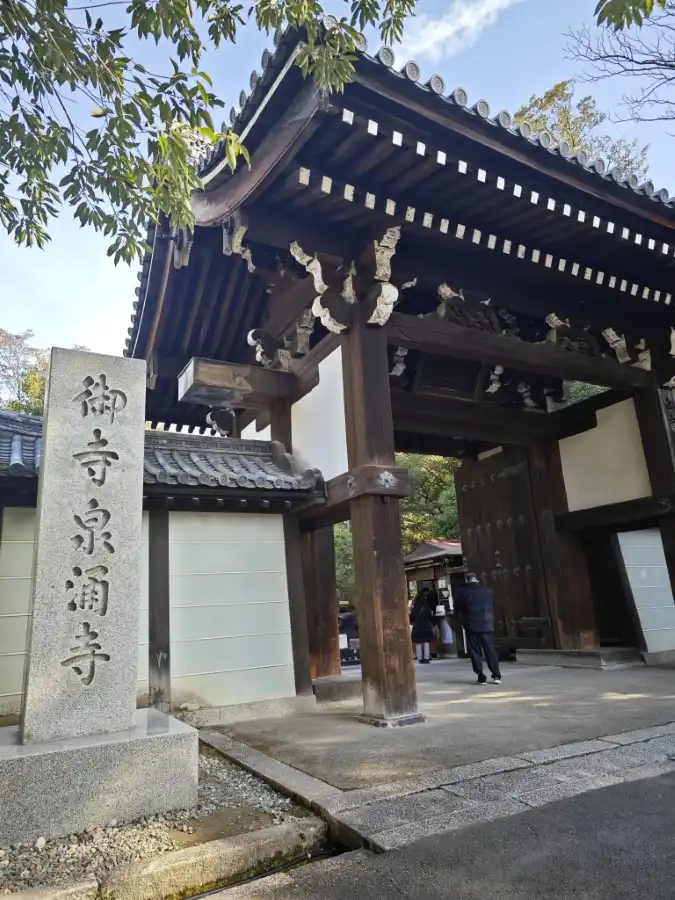
Sennyuji Temple
Nestled in the serene Higashiyama district of Kyoto, Sennyuji Temple, known as “Mitera,” offers a tranquil retreat. Founded in the 9th century, this temple is a significant site for cultural heritage and historical art. This temple is the head temple of Sennyuji Sect of Shingon School of buddhism. Official WEB site Historical Significance Sennyuji has…
-
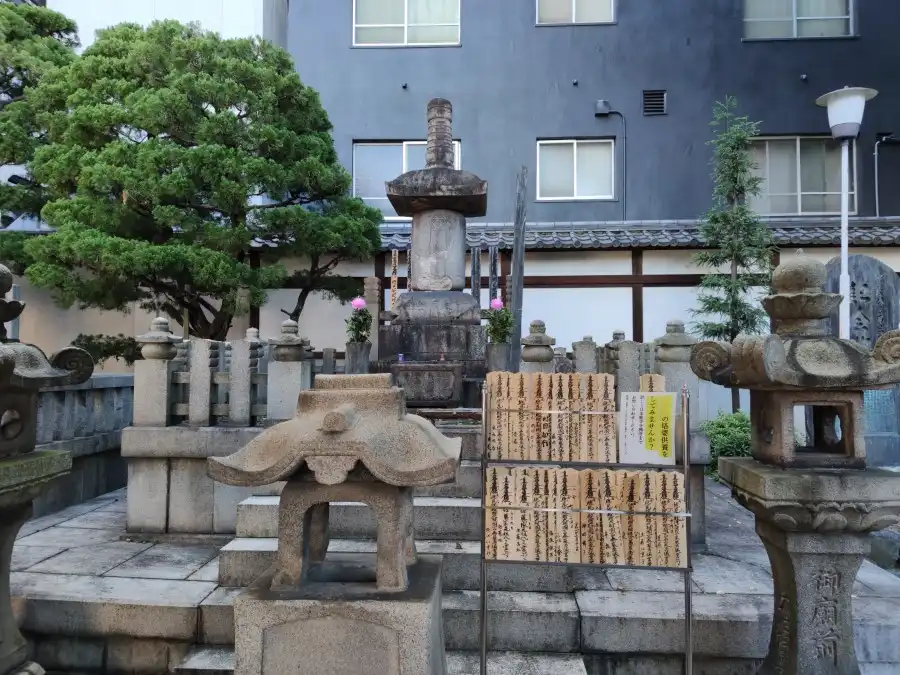
Honnouji Temple (本能寺)
Discover the rich history of Japan at Honnouji Temple in Kyoto, a hidden gem along the scenic Kamo River. As the head temple of the Honmon Sect of the Hokke School, it holds the teachings of Nichiren Daishonin. Rebuilt after the historic Honnouji Incident in 1592, when Akechi Mitsuhide rebelled against Oda Nobunaga, the temple’s…
-
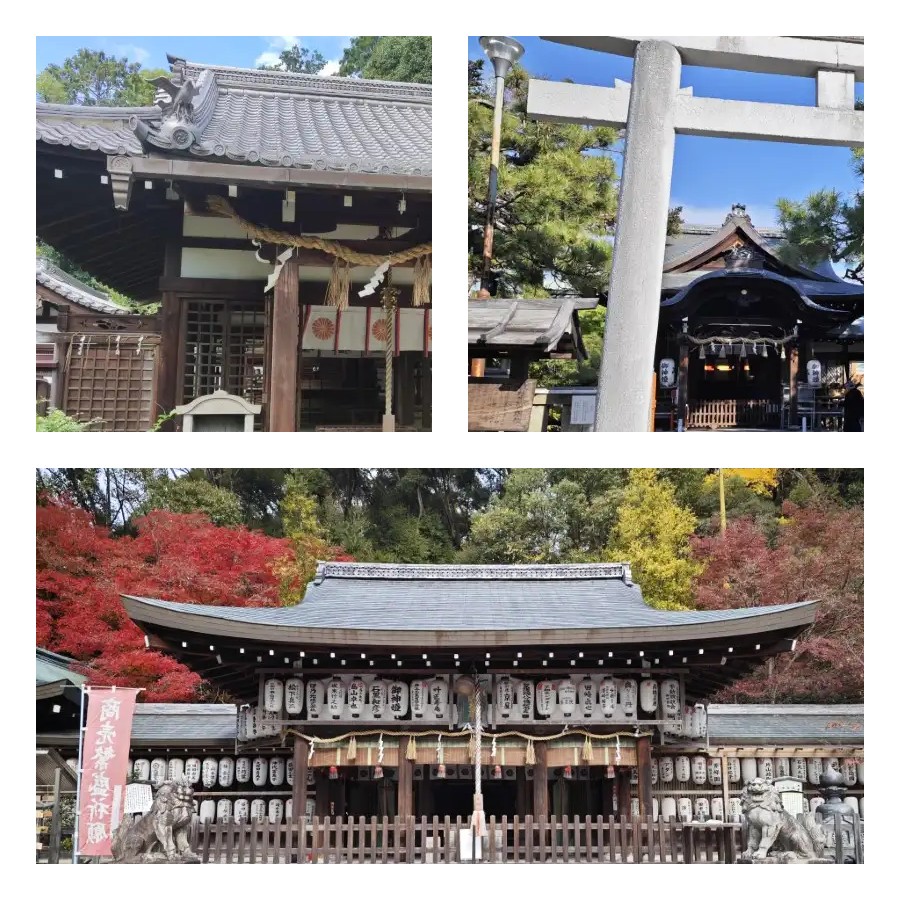
Kyoto San Kumano (京都三熊野)
Touring “Kyoto San Kumano” has the same benefits as making a pilgrimage to the three famous shrines in faraway Kumano. Travelers who do not have the time to travel to Kumano may wish to visit the three Kumano shrines in Kyoto, just as the people of the Heian period (794-1185) did. “Kyoto San Kumano” is…
-

Narabigaoka (双ヶ丘)
Narabigaoka, a scenic hill in Kyoto’s Ukyo-ku, boasts 24 burial mounds, forming the burial mound complex. Explore historic trails with a one-hour hike, revealing panoramic views of Ninnaji Temple. Immerse in nature and history at this national scenic beauty spot. Narabigaoka is a hill in Omuro, Kyoto City. It is named after the 116-meter-high First…
-

Jikishian Temple (直指庵)
Discover Kyoto’s hidden treasure, Jikishian Temple, nestled in the serene hills of Sagano. Founded in 1646, this historic site reveals the rich legacy of Obaku Zen. Renewed during the Edo period, it boasts a reed-thatched main hall, Aiai Jizo statues for luck in marriage, and vibrant seasonal foliage, especially during fall. Embrace the tranquility of…
-
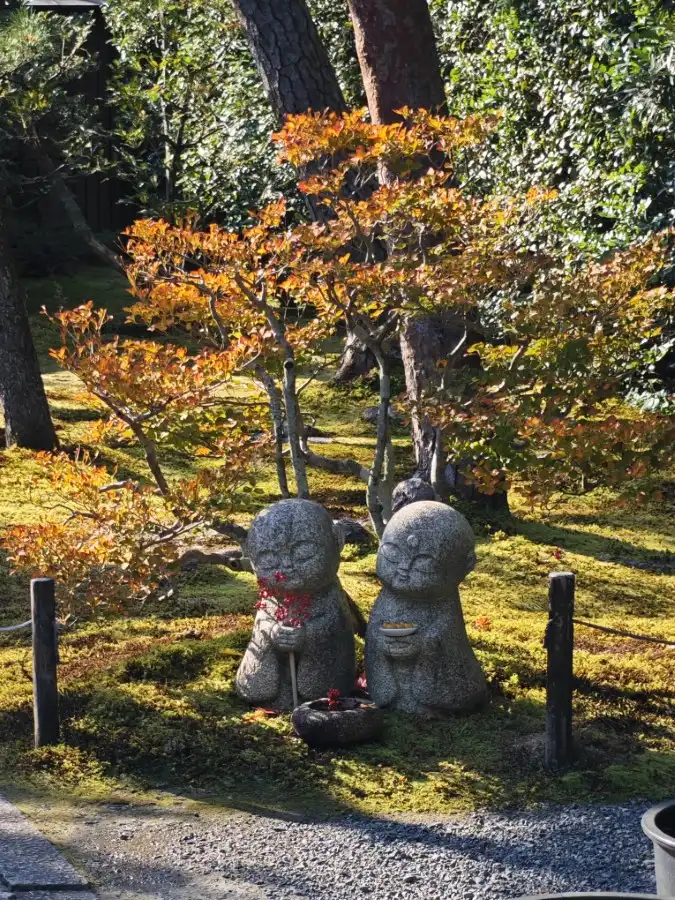
Daiou-in Temple, Myoshinji (大雄院)
Daiou-in Temple, nestled within the serene grounds of Myoshin-ji Temple in Kyoto, beckons visitors with a rich history dating back to 1603. Founded by Ishikawa Mitsutada in memory of his ill-fated father, the temple unfolds a captivating tale of love and political intrigue. Mitsutada’s mother, Okame-no-Kata, caught the eye of Tokugawa Ieyasu, resulting in the…
-
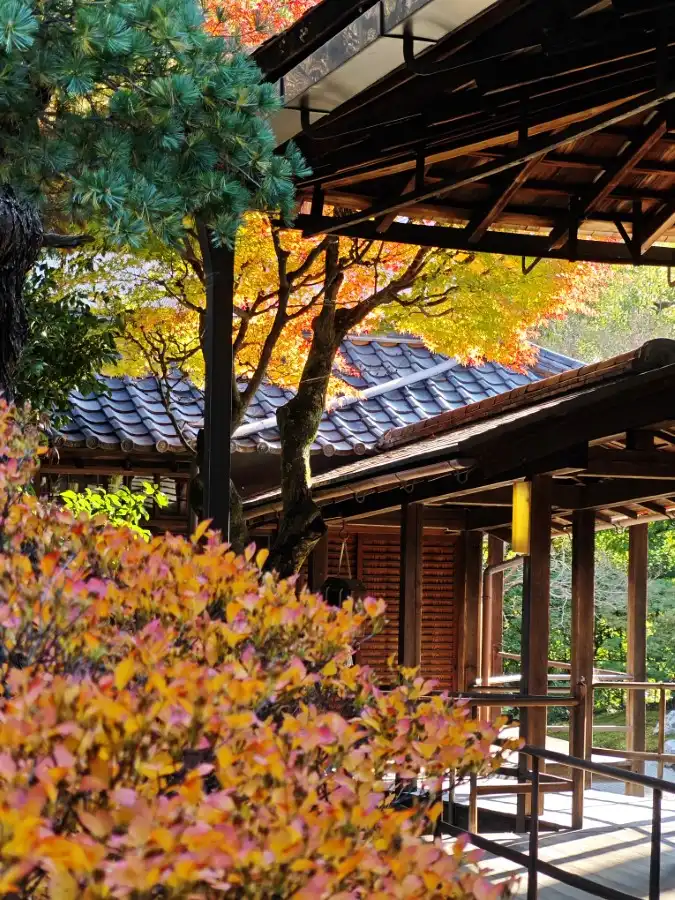
Daishin-in Temple (大心院), Myoshinji
Nestled within the historic Myoshinji Temple complex in Kyoto, Daishin-in Temple beckons as a hidden gem. Operating a unique lodging house, it retains the essence of its past when monks from across Japan sought refuge here. Open year-round to visitors, Daishin-in boasts a rich history dating back to 1479. The main hall, entrance, and a…
-
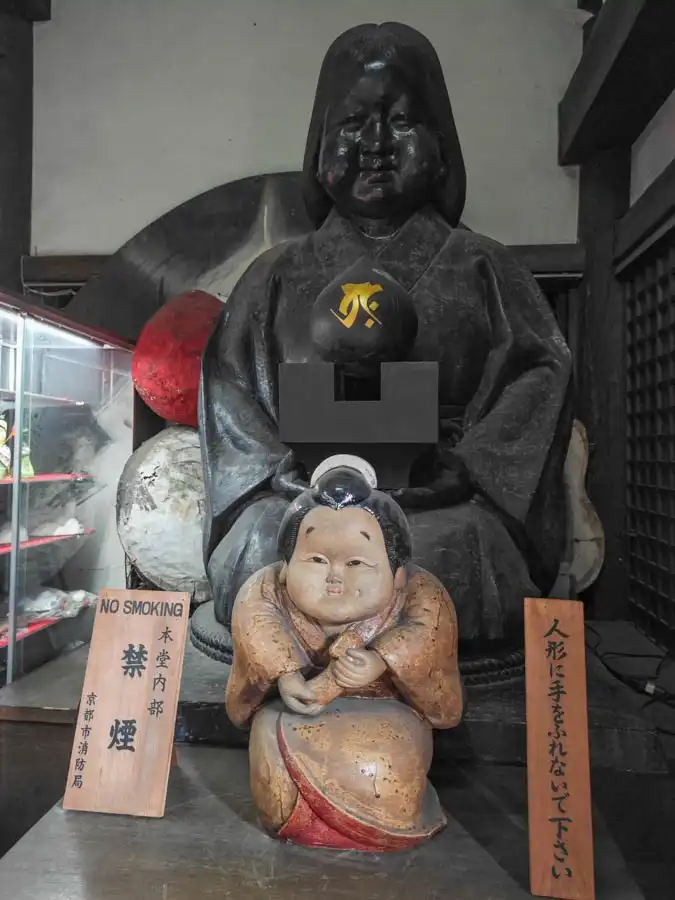
Daihouonji Temple (大報恩寺)-Senbon Shakado
Daihouonji Temple, known as Shakado, is a hidden gem in Kyoto, founded in 1221. The awe-inspiring main hall, a national treasure, miraculously withstood historical wars like the Onin War, showcasing scars from that era. The Reihouden Museum within houses ancient artifacts, including the Standing Thousand-Armed Avalokitesvara Bodhisattva, older than the temple itself. Notably, the Roku-kannon…
-
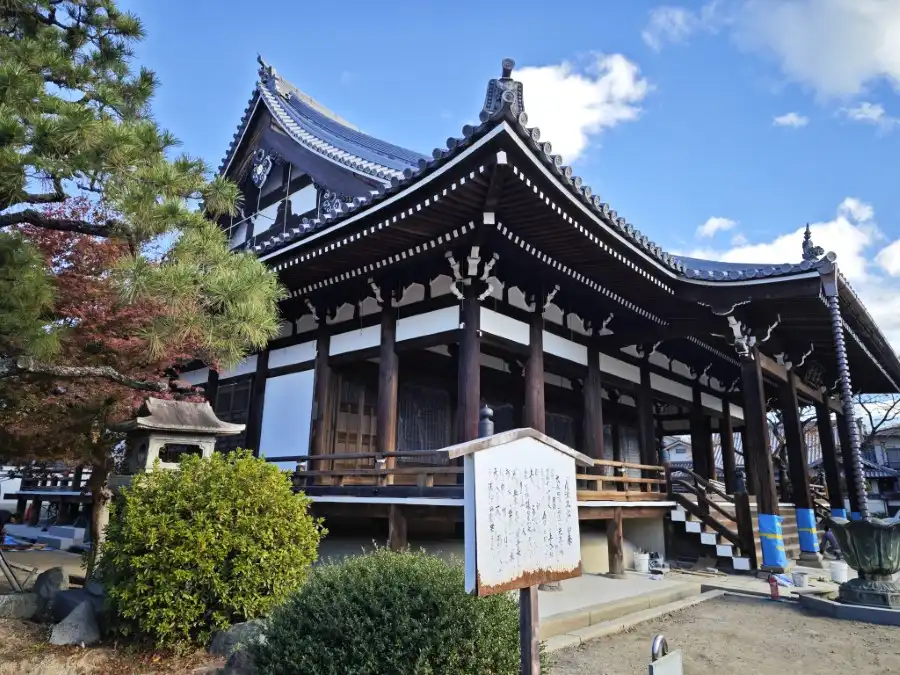
Honryuji Temple (本隆寺)
Discover the rich history and serene beauty of Honryuji Temple, the prestigious head temple of the Hokke school of Buddhism in Kyoto’s Nishijin district. Originally founded in 1488 by Nichishin Daikasho, the temple has withstood challenges, including religious wars and fires, earning it the nickname “the temple that never burns down.” Amidst modern changes, Honryuji…
-
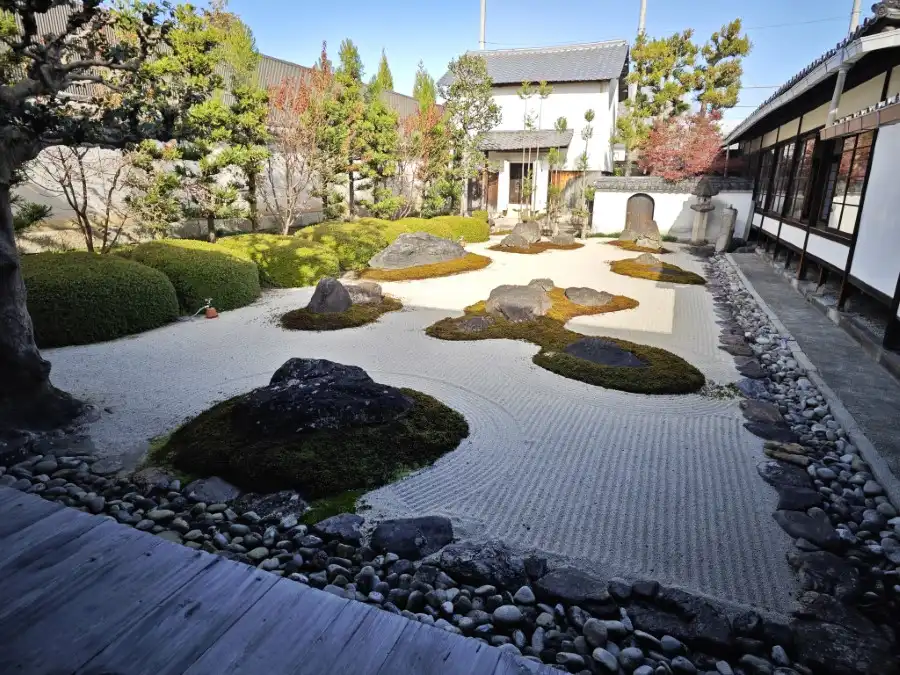
Myorenji Temple (妙蓮寺)
Nestled in Kyoto, Myorenji Temple, founded in 1294, is a sanctuary of tranquility and cultural richness. As the head temple of the Honmon Hokke school of Buddhism, it boasts a storied past marked by resilience against attacks in 1536. Rebuilt in 1542 and relocated by Toyotomi Hideyoshi in 1587, the temple now stands as a…
-
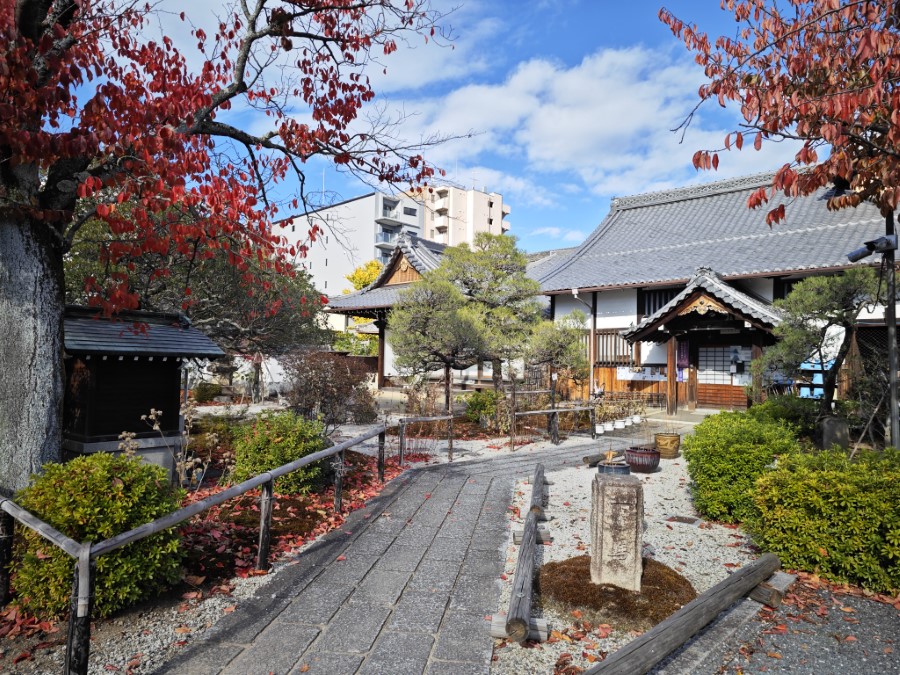
Houonji Temple (報恩寺)
Nestled in Kyoto’s historic tapestry, Houonji Temple, founded in the Muromachi period, invites foreign tourists on a journey through time and tradition. Originally a confluence of Tendai and Jodo sects, it underwent relocations and reconstructions, surviving the fires of Edo. Discover the famed “Nakiutora” painting, a testament to Toyotomi Hideyoshi’s encounter with a howling tiger,…
-
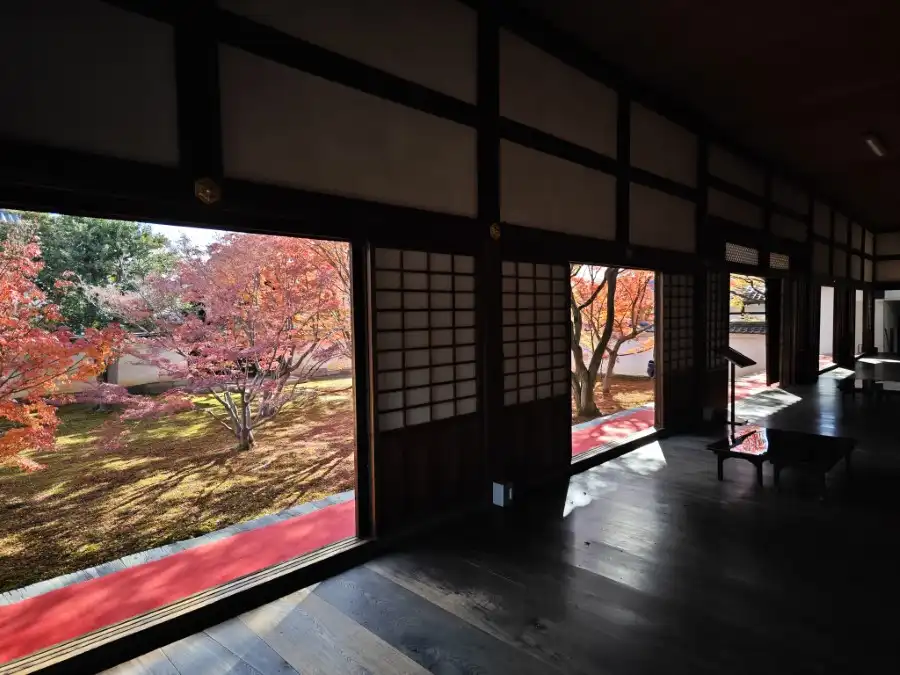
Myokakuji Temple (妙覺寺)
Immerse yourself in Kyoto’s historical tapestry at Myokakuji Temple, founded in 1378 and now a tranquil haven. Relocated in 1583 by Toyotomi Hideyoshi, this temple is a gem among the “Kyoto Nichiren Shu Meisho Sanguzan.” With ties to renowned figures like Ashikaga Yoshiteru and Date Masamune, the temple served as a retreat for Nobunaga and…
-
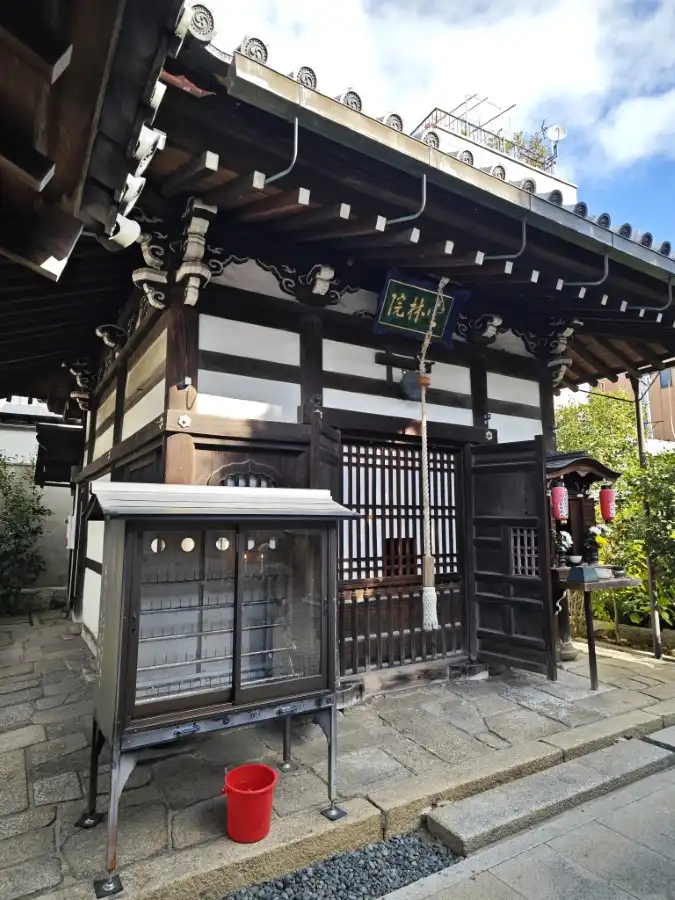
Unrin-in Temple (雲林院)
Today, Unrin-in Temple has only a small hall on the opposite side of the road from Daitokuji Temple and is virtually unvisited. However, this site is an important historical site in Murasakino Area during the Heian period. At that time, this area was a vast wilderness where hunting was conducted. Emperor Junna (reigned 823-833) built…
-
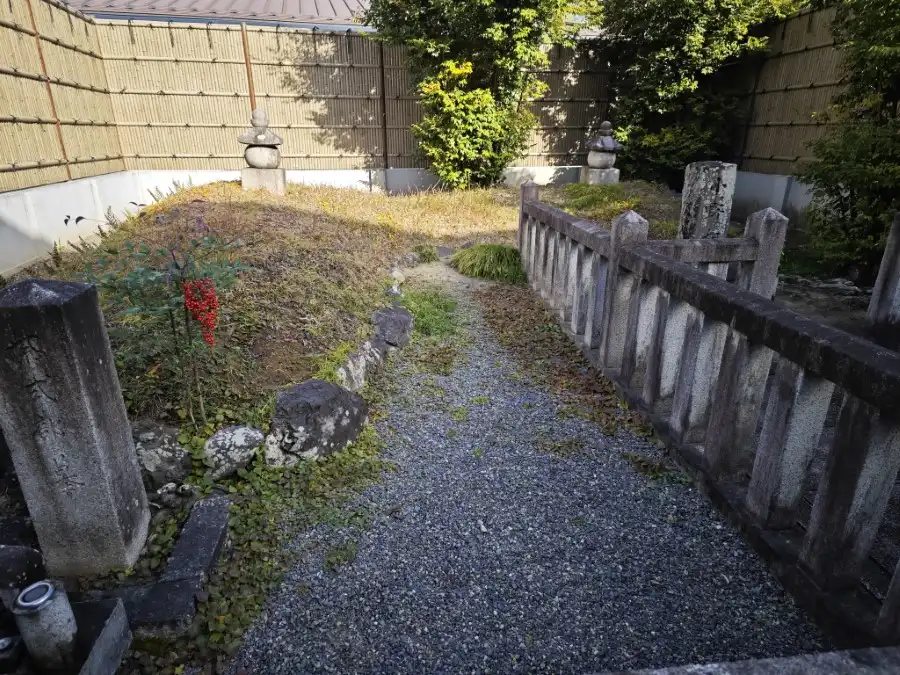
Graves of Murasaki Shikibu and Ono-no Takamura
Graves of Murasaki Shikibu and Ono-no Takamura is located in the former precincts of Unrin-in Temple. Today, Unrin-in is only a small hall and is one of the sub-temples of Daitokuji Temple. But it was a large and important temple in the Heian period. There are records that Murasaki Shikibu lived in Unrin-in, so it…
-
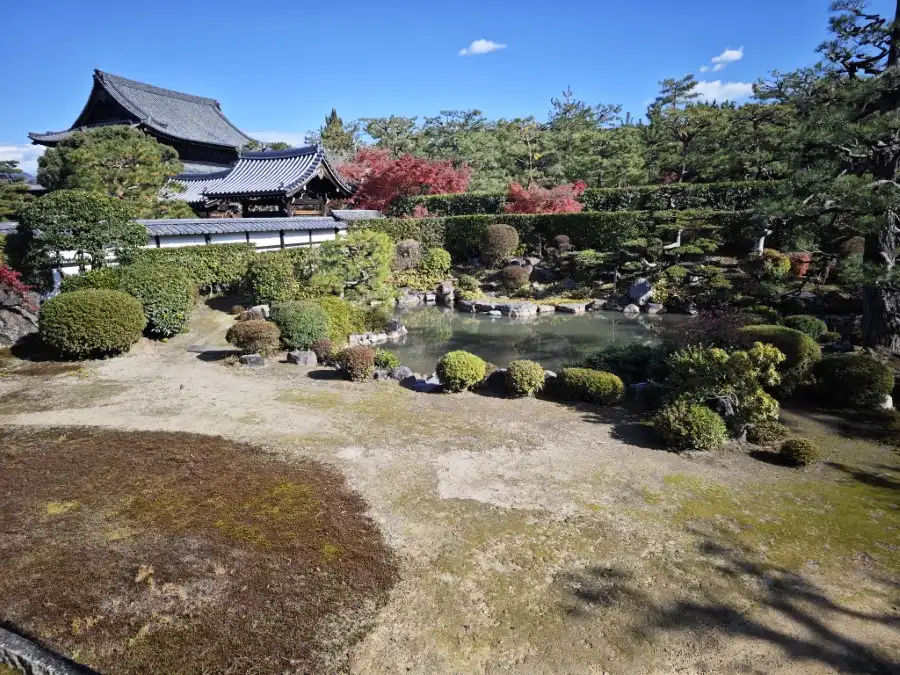
Kyushoin Temple (久昌院), Kenninji
Kyushoin Temple is one of the sub-temples of Kenninji Temple and is located in the precincts of Kenninji Temple. It is the family temple of the Okudaira clan, founded in 1608 by Nobumasa Okudaira. He was the first lord of the Kano Han. It is said that Kyushoin was named after Nobumasa’s Buddhist name. This…
-
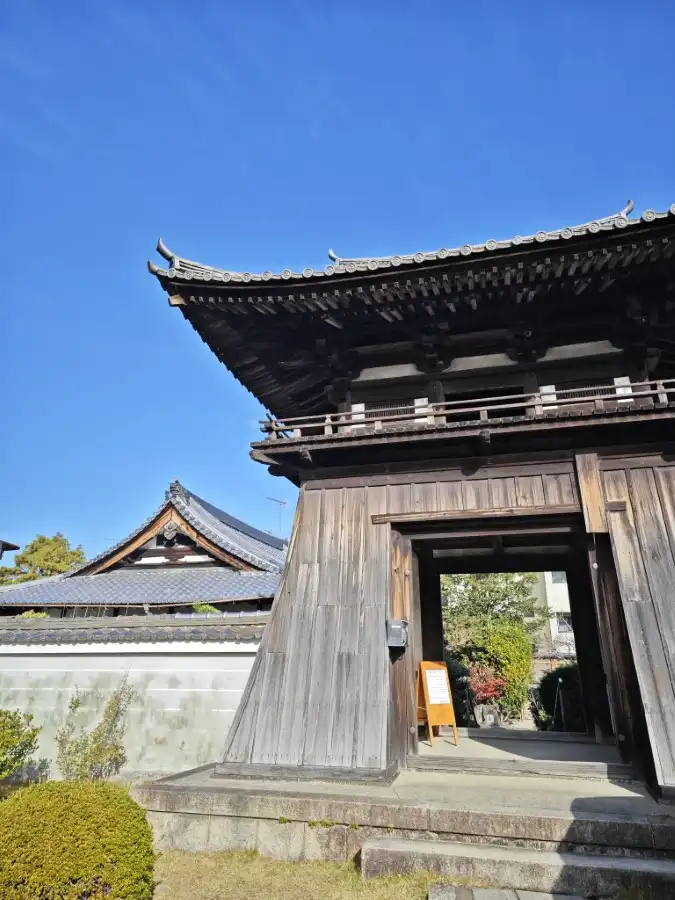
Manjuji Temple (萬寿寺)
Manjuji Temple, located near Tofukuji Station, is a temple of the Rinzai sect of Zen Buddhism. It is one of the sub-temple of nearby Tofukuji Temple. It was once one of the five temples (Gozan) of Kyoto, along with Tenryuji Temple, Shokokuji Temple, Kenninji Temple, and Tofukuji Temple. But it declined after a fire in…
-
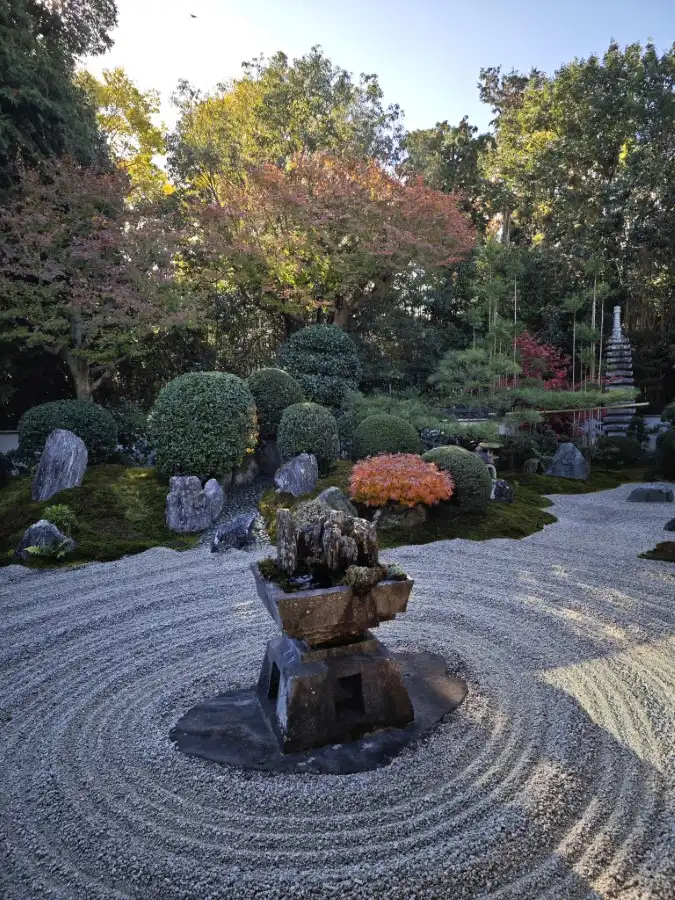
Reiun-in Temple, Tofukuji (霊雲院)
Reiun-in, nestled is a serene temple that encapsulates the essence of Japanese tranquility. The temple grounds boast meticulously manicured gardens, where lush greenery surrounds traditional architecture. A sense of harmony pervades the air as visitors explore the carefully designed spaces, adorned with symbolic elements. Reiun-in stands as a testament to Kyoto’s rich cultural heritage, offering…
-

Fundain Temple (芬陀院), Tofukuji
If you are tired of the crowds at Tofukuji Temple, visit the nearby Fundain Temple, one of Tofukuji’s sub-temples. You can enjoy matcha green tea in front of a tranquil Zen garden. This temple is open to the public all year round. Fundain Temple is known as “Sesshu Temple” because of its famous garden by…
-
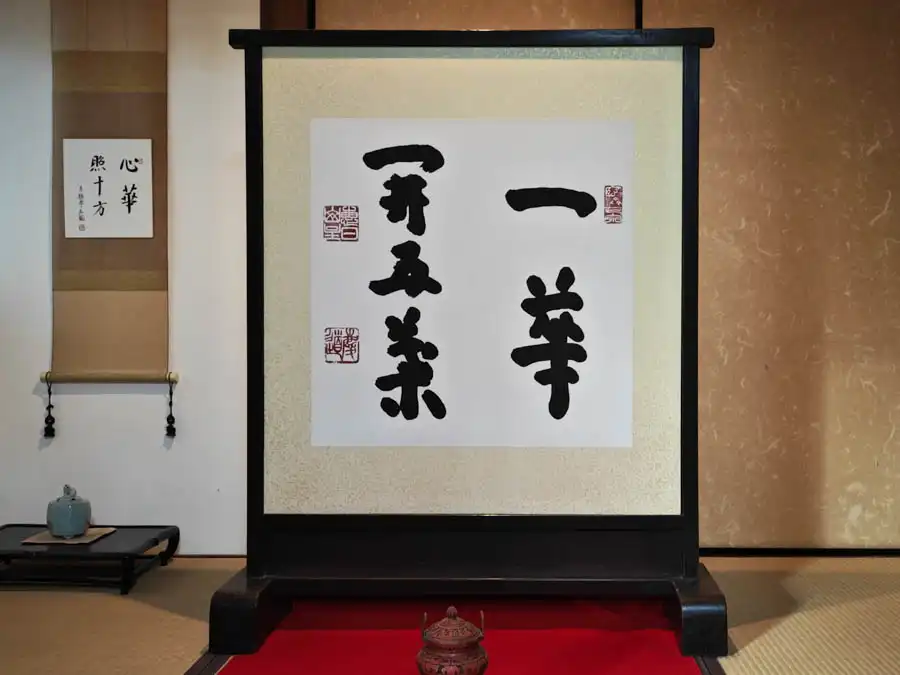
Ikka-in Temple, Tofukuji (一華院)
Nestled on the route to Tofukuji Temple, Ikka-in is a hidden sub-temple founded in 1382 by Zen master Tozan. Unveiling its secrets during the autumn leaves season, the temple welcomes visitors to explore its serene charm and engage in tea ceremonies. The name “Ikka-in” stems from the Zen teaching of unfolding one’s mind like a…
-
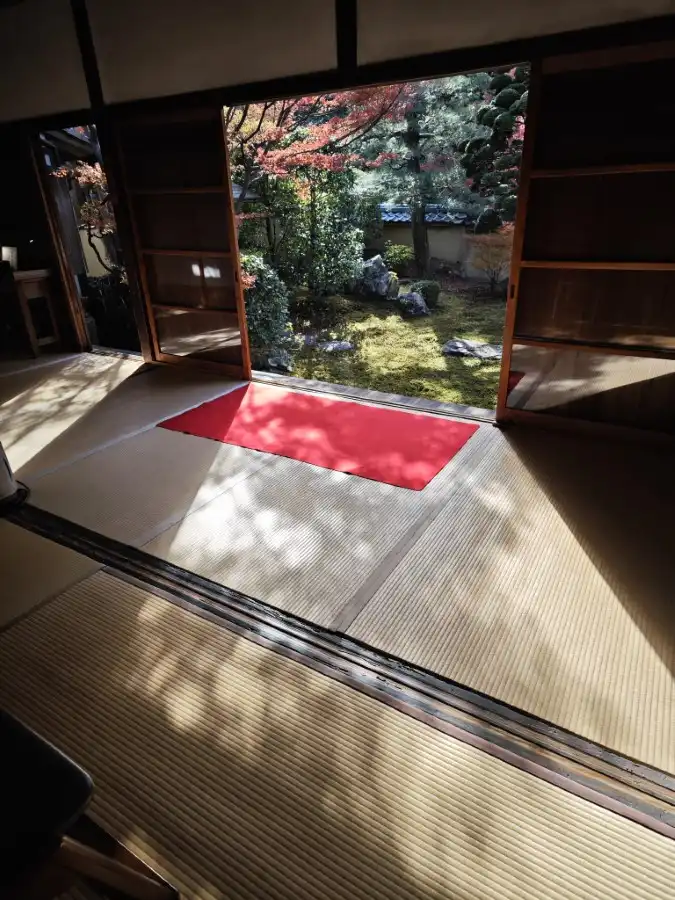
Tentokuin Temple (天得院), Tofukuji
Tentokuin Temple is one of the sub-temple of Tofukuji Temple. The temple was founded by monk Mumu Issei, the 30th abbot of Tofukuji Temple, during the Shohei Era (1346-1370) of the Northern and Southern Dynasties. At that time, the temple was one of the five important sub-temples of Tofukuji Temple and boasted of its prosperity.…
-
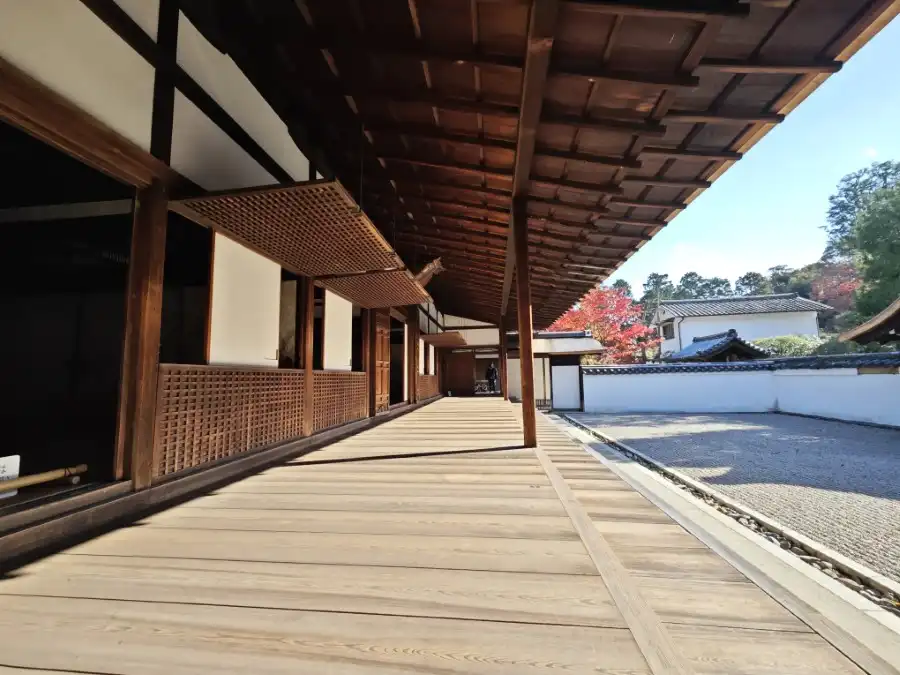
Ryogin-an, Tofukuji (龍吟庵)
Nestled near Tofukuji Temple, Kyoto’s Ryogin-an beckons with historic charm. Home to Daimin Kokushi’s residence, it boasts Japan’s oldest Hojo, a national treasure with elegant shoin-zukuri and shinden-zukuri styles. The Kaisando-Do holds Daimei Kokushi’s statue and remains, designated as Important Cultural Properties. Renowned for its three gardens, Shigemori Mirei’s creations captivate, from the ceremonial “Garden…
-
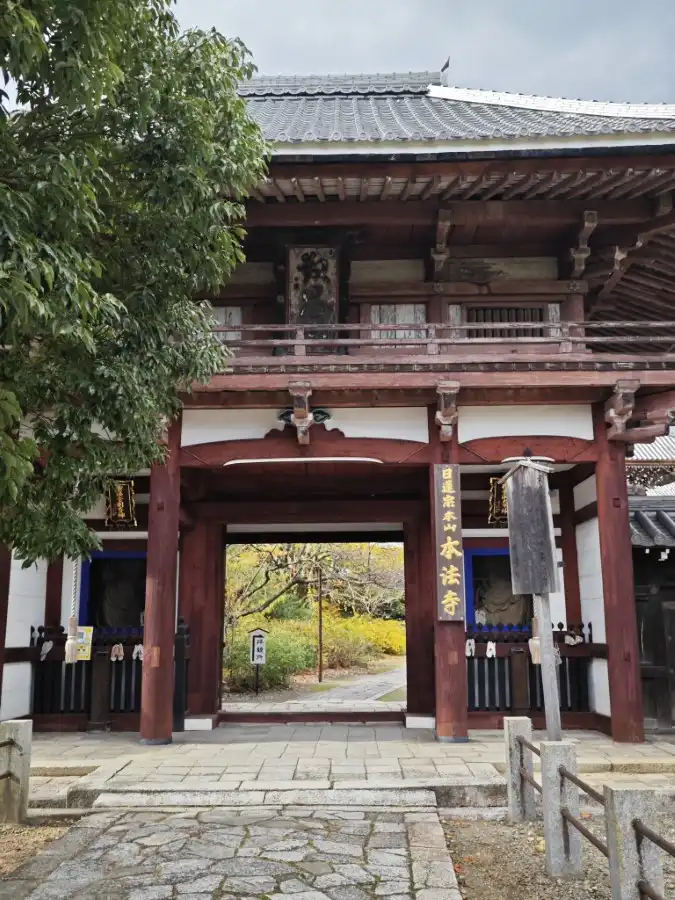
Honpouji Temple (本法寺)
If you are walking along Ogawa Dori in Kyoto, Honpouji Temple is the Niomon gate facing the street. It is a temple with a quaint appearance. Muromachi period Nisshin Shonin (1407-88), a Nichiren Shoshu priest active in the Muromachi period (1336-1573), founded Honpouji Temple. It is the head temple of Nichiren Shoshu. The exact date…
-
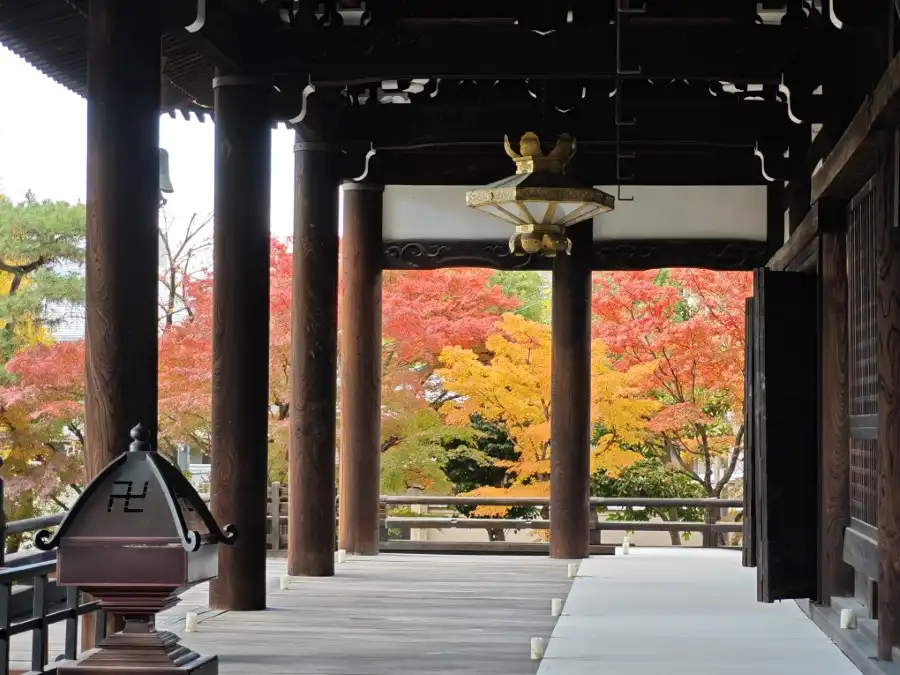
Myokenji Temple (妙顯寺)
Embark on a journey through history and spirituality at Myokenji Temple, the heart of Nichiren Shu in Kyoto’s Kamigyo-ku. Founded in 1321 by Nichizo, a missionary bestowed land by Emperor Godaigo, the temple became the fundamental Hokke school sanctuary in Kyoto. Despite challenges, including attacks by the Hieizan Enryakuji sect, the temple persevered. Today, Myokenji…
-

Kumano Jinja Shrine (京都熊野神社)
Kumano Jinja Shrine dates back to 811, when Shugendo priest Nichien Shonin invoked the great deity Kumano from Kishu in this area. It is the oldest of the three Kumano shrines in Kyoto. The other two are Imakumano Jinja Shrine and Kumano Nyakuoji Jinja Shrine. Shogoin Monzeki, which was founded at the behest of Emperor…
-
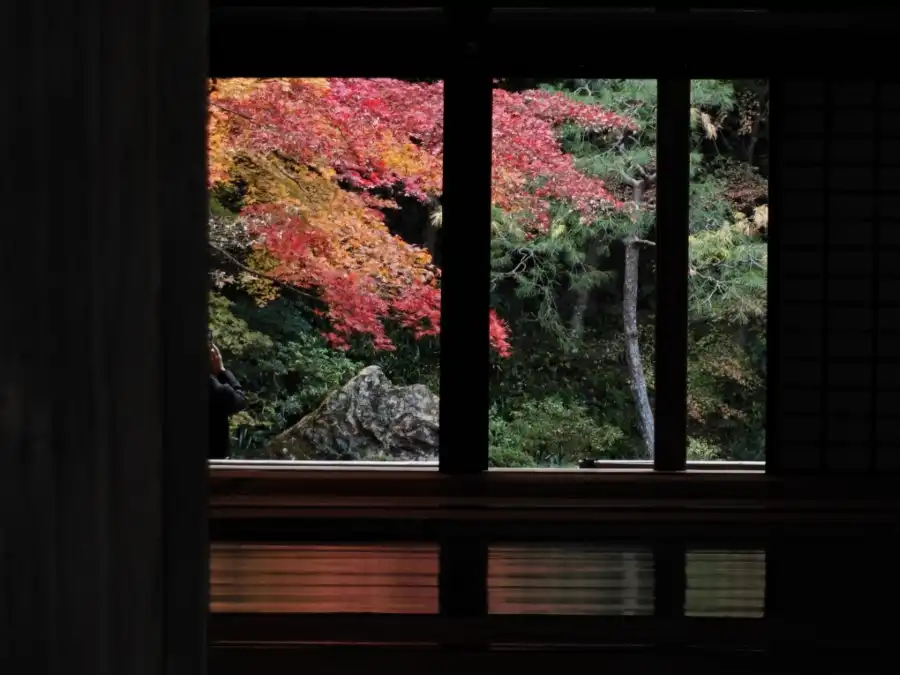
Nanzenin Temple, Nanzenji (南禅院)
Nanzenin Temple, nestled on a hill from Nanzenji Temple, Kyoto, bears historical significance as the former detached palace of Emperor Kameyama, who retired to become a Buddhist monk in 1289. The entrance, reached through the Suirokaku water bridge, unveils a serene hall and an enchanting garden. Designed in the late Kamakura period, the garden exudes…
-
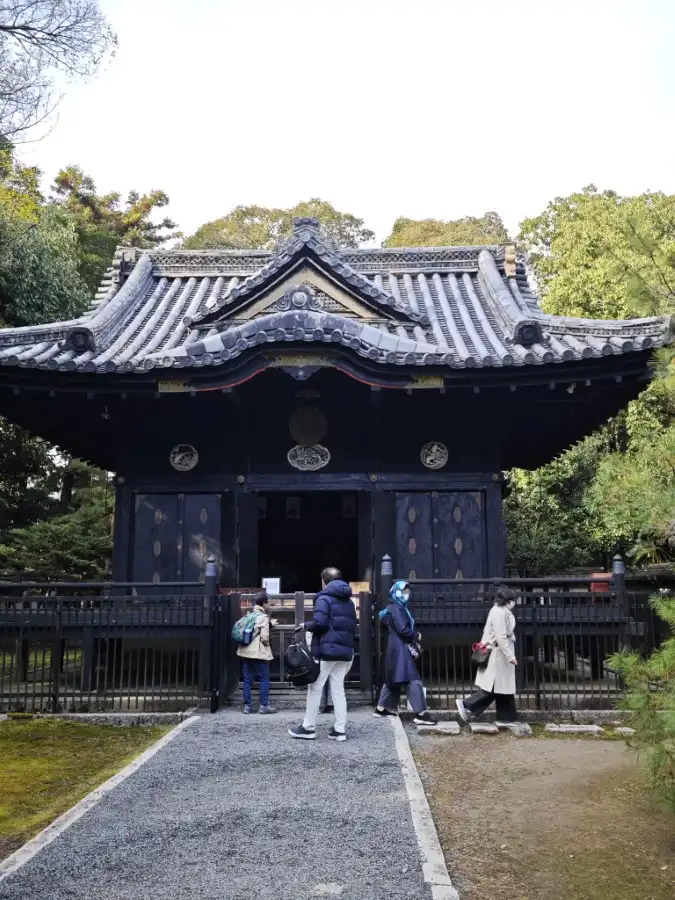
Konchi-in Temple, Nanzenji (金地院)
Nestled within Kyoto’s historic treasures, Konchi-in Temple, a sub-temple of Nanzenji, is a haven of rich history and cultural significance. Established in the early Edo period, it played a pivotal role in Tokugawa Ieyasu’s administration, earning the monk Ishin Suden the moniker “The Prime Minister in Black.” The temple boasts an Important Cultural Property, the…
-
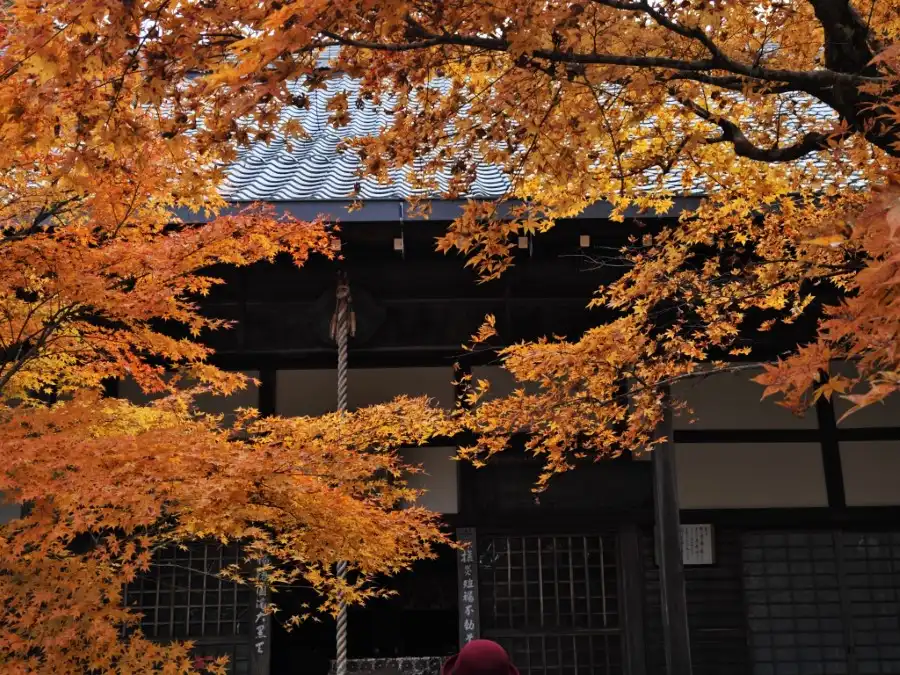
Saishoin Temple, Nanzenji (最勝院)
Nestled tranquilly north of Nanzenji temple, Saishoin Temple invites you to a serene haven enveloped by nature’s embrace throughout the seasons. Dedicated to the revered Kamakura-period high priest, Koma Dochi, this temple exudes historical significance. Serving as the guardian deity of Nanzenji Temple, Saishoin holds a cherished position in the hearts of worshipers, especially renowned…
-
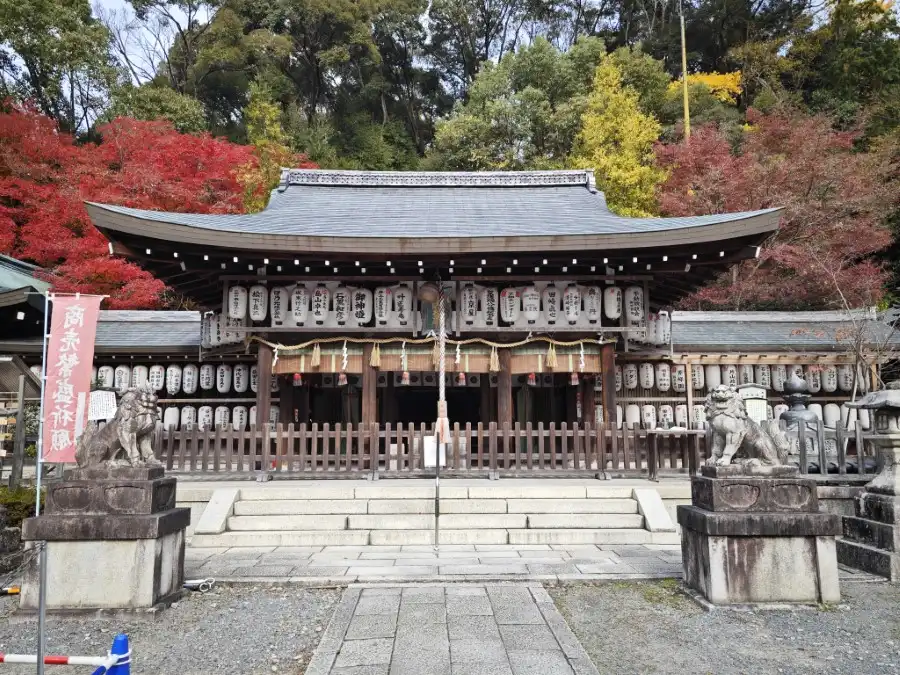
Kumano Nyakuoji Jinja Shrine (熊野若王子神社)
Emperor Go-Shirakawa founded the Kumano Nyakuoji Jinja Shrine in 1160 by inviting the Kumano Gongen (a deity) from Kishu. It is one of the three Kumano shrines in Kyoto. Other two are Kyoto Kumano Jinja Shrine and Imakumano Jinja Shrine. Of the three shrines in Kumano, this shrine represents the Nachi-taisha. At the same time,…
-
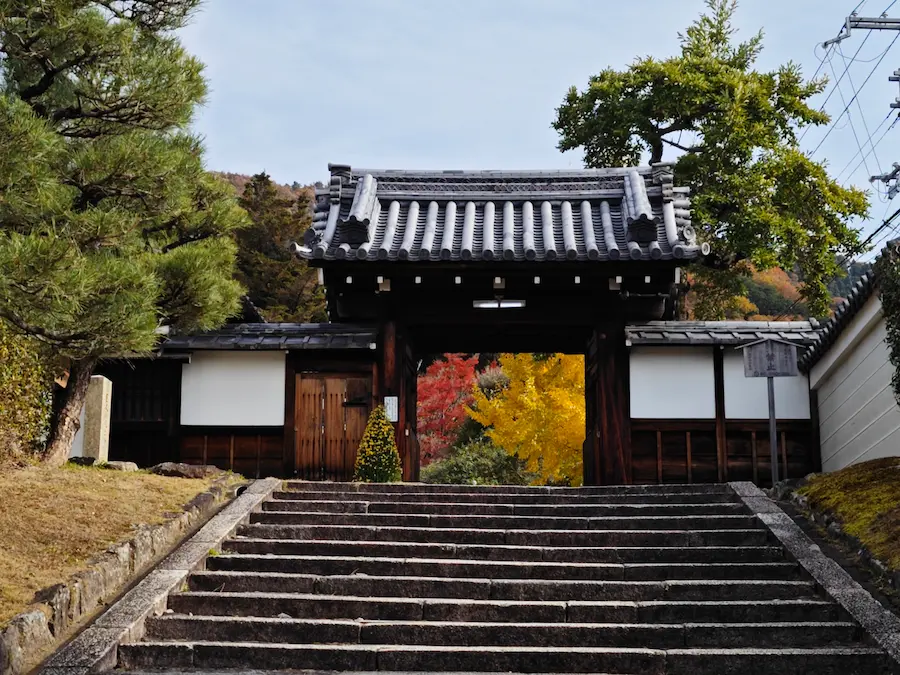
Reikanji Temple (霊鑑寺)
Nestled in Kyoto’s tranquility, Reikanji Temple unveils its splendor to the public for a fleeting two weeks, revealing a hidden gem seldom explored by foreign tourists. Founded in 1654, this Rinzai sect temple holds imperial lineage, its main hall a gift from Tokugawa Ienari. The exquisite Shoin, once an imperial palace, beckons with its tailored…
-
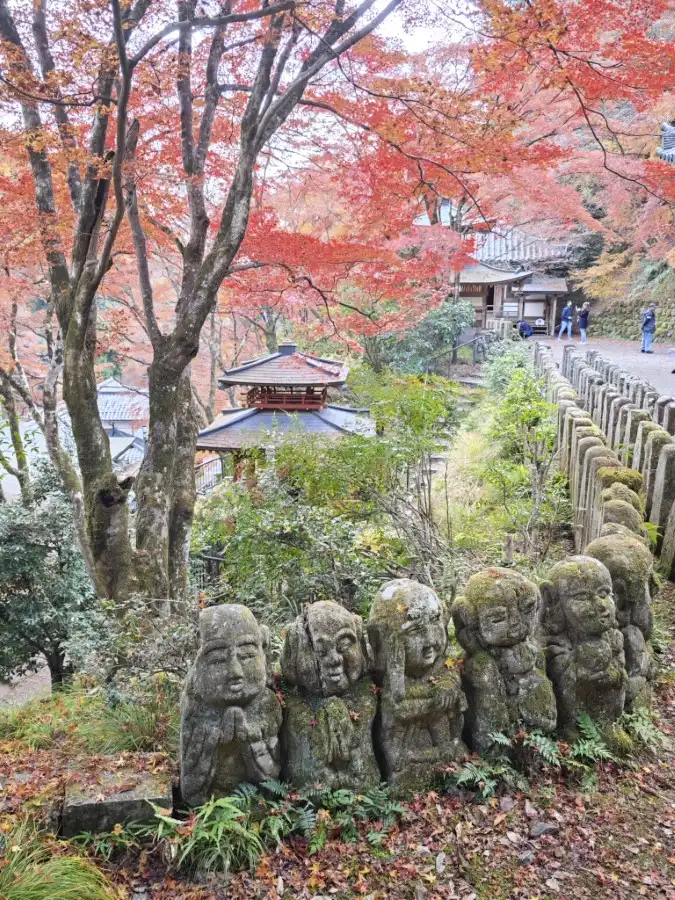
Otagi Nenbutsuji Temple (愛宕念仏寺)
Otagi Nenbutsuji Temple is often confused with Adashino Nenbutsuji Temple. But these two Nenbutsuji Temples are completely different temples. Adashino Nenbutsuji Temple is located in the middle of Saga Toriimoto Preserved Street, while Otagi Nenbutsuji Temple is further up the mountain, past the first torii of Atago Jinja Shrine. In the Nara Period (766), Emperor…
-
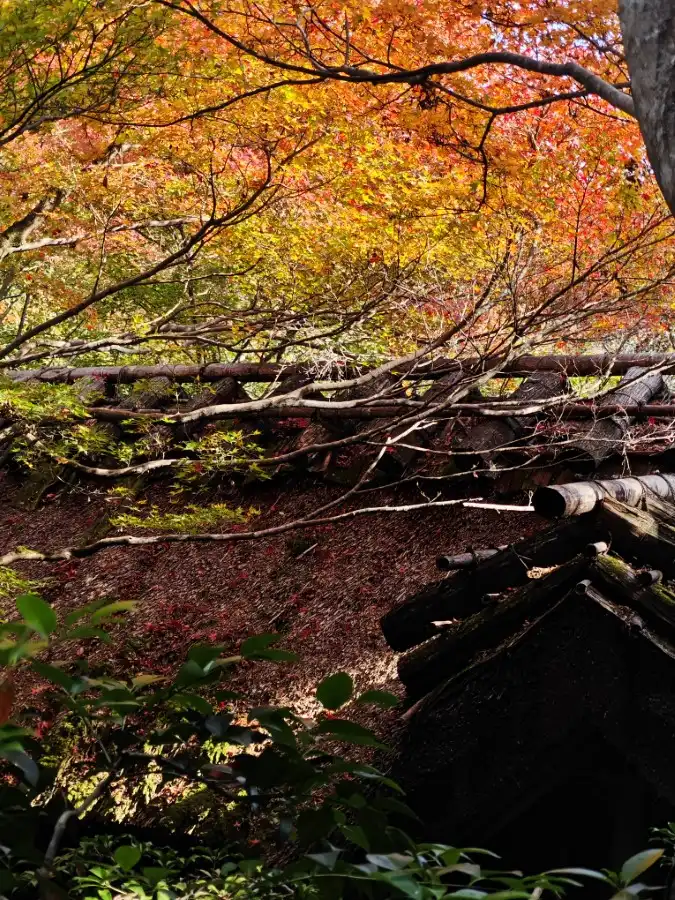
Enrian Temple (厭離庵)
The Enrian Temple is located on the road from Seiryoji Temple to Nison-in Temple in Sagano. It is not far from Tenryuji Temple, the head temple of the Rinzai sect. This temple does not face the road at all and is a secluded place in the woods. It is not open to the public except…
-
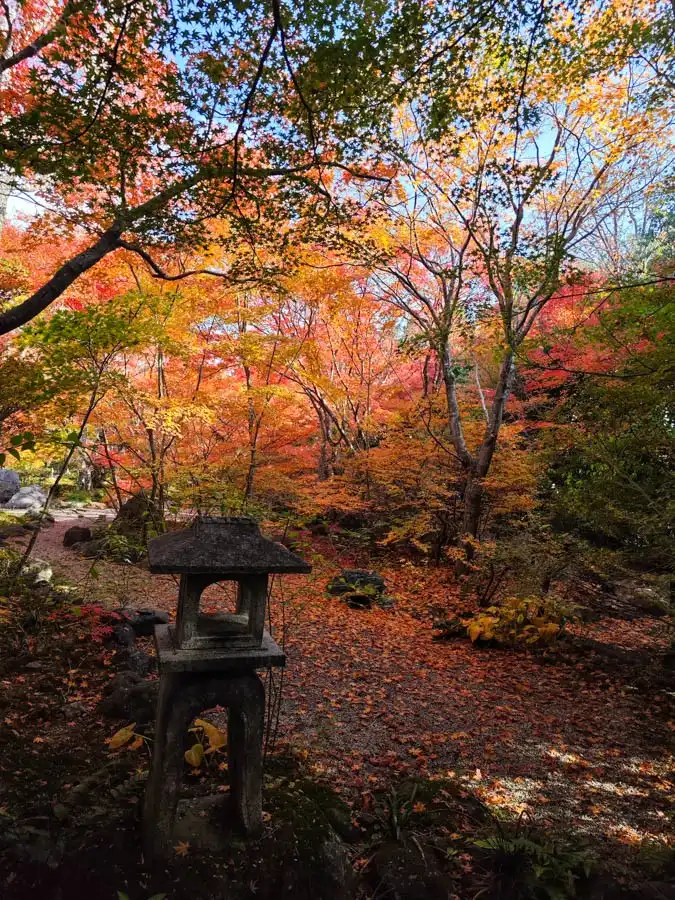
Houkyouin Temple (宝筐院)
Houkyouin is a temple of the Rinzai sect in Sagano, Kyoto. It is located near Seiryoji Temple, known as Saga Shakado. This temple is famous for its beautiful autumn leaves. Although it is an inconspicuous temple, it attracts a large number of visitors during the autumn foliage season. However, there are still very few foreign…
-
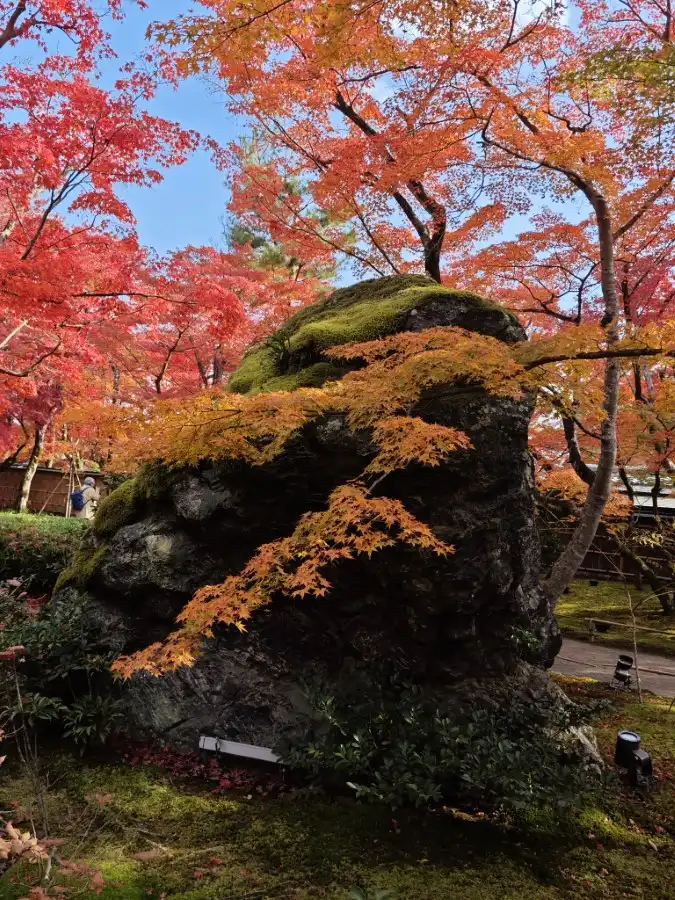
Hogonin Temple, Tenryuji (宝厳院)
Hogonin Temple is a sub-temple of Tenryuji Temple. It is famous for its “Shishiku-no-niwa,” a circular landscape garden with Arashiyama in the background. It is arguably one of the most beautiful gardens in Kyoto. Hogonin Temple is usually closed to the public, but the garden is open to the public during the fall foliage season.…
-
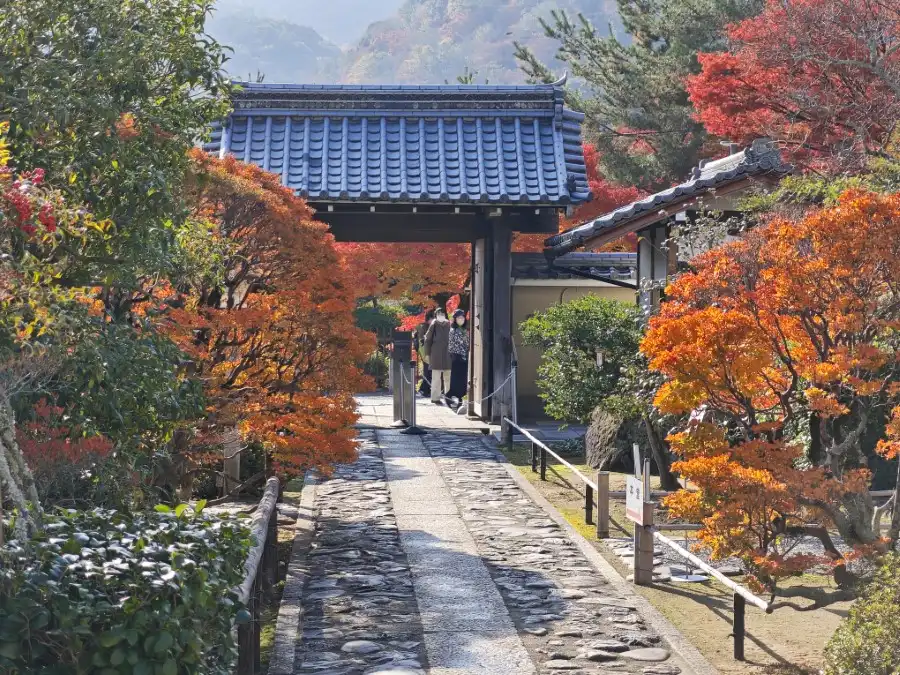
Kogenji Temple (弘源寺), Tenryuji
Kogenji is one of the pagodas of Tenryuji Temple, a World Heritage Site. It is located just north of the Imperial Gate of Tenryuji Temple. It is famous for the standing statue of Bishamonten and the Kosho Garden, a dry landscape garden. Kogenji’s Bishamonten stature is an important cultural property. The Bishamonten statue is open…
-
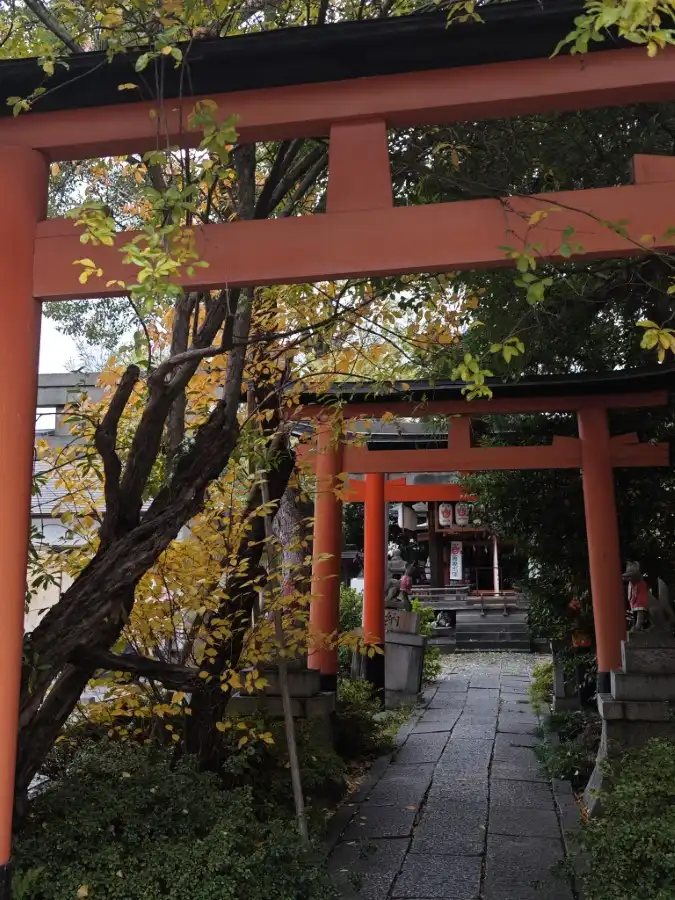
Takenobu Inari Shrine (武信稲荷神社)
Takenobu Inari Shrine is not for tourists. Located near the Sanjo-dori shopping street. It is a shrine with deep roots in the community where locals visit from time to time. It is a small shrine but has a long history. Yoshisuke Fujiwara, Minister of the Right, founded Takenobu Inari Shrine in 859 during the early…
-
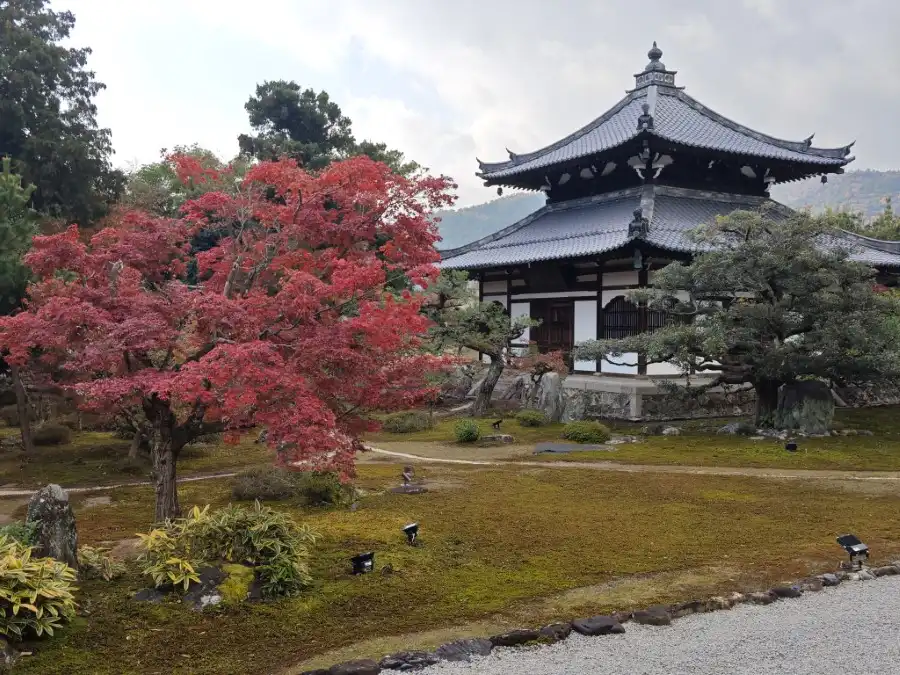
Rokuouin Temple (鹿王院)
Although not far from Arashiyama, where so many tourists visit, Rokuouin is a quiet temple where you will rarely see foreign tourists. Entrance gate The gate to enter the temple is a gabled gate with a tile roof. It is the only Zen temple gate with a main pillar rising to the ridge. The gate…
-

Hokoji Temple (方広寺)
The Daibutsuden (Great Buddha Hall) built by Toyotomi Hideyoshi once stood where Hokoji Temple stands today. It is believed to have been built to replace the Great Buddha Hall in Nara, which was destroyed in a war. At that time, the temple was not called Hokoji Temple, but rather a private facility of the Toyotomi…
-

Kyoto National Museum (京都国立博物館)
The Kyoto National Museum was established to collect, house, and exhibit to the public tangible cultural properties as stipulated by the Law for the Protection of Cultural Properties. The museum also conducts related research, surveys, and other projects in order to preserve and utilize these valuable national assets.Source: Museum’s Official WEB site This museum opened…
-
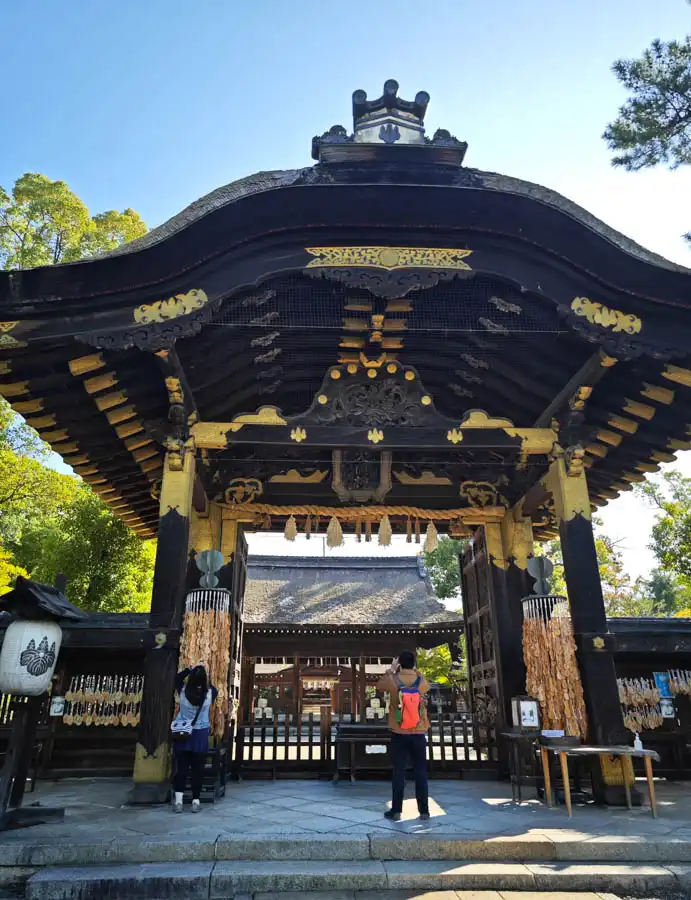
Toyokuni Jinja Shrine (豊国神社)
The head shrine of Toyokuni Jinja Shrines in Japan, which enshrine Toyotomi Hideyoshi. It is a god of success in life and the fulfillment of good marriage. This shrine was originally located halfway up Amidagamine. However, the Tokugawa Shogunate abandoned it after the fall of the Toyotomi family. In 1880, the Meiji government rebuilt the…
-
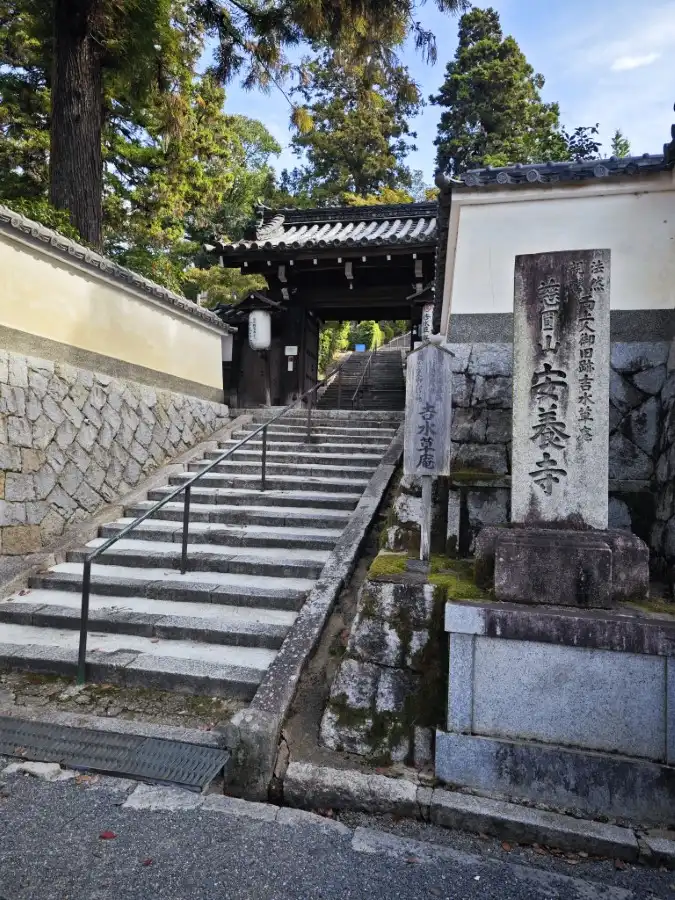
Anyoji Temple (安養寺)
Nestled in the heart of tranquility, Anyoji, a captivating temple, beckons foreign tourists with its serene ambiance and rich cultural allure. Surrounded by lush greenery, the temple’s traditional architecture and symbolic elements offer a glimpse into Japan’s spiritual legacy. Anyoji provides a serene escape, inviting international visitors to partake in the profound beauty of Japanese…
-
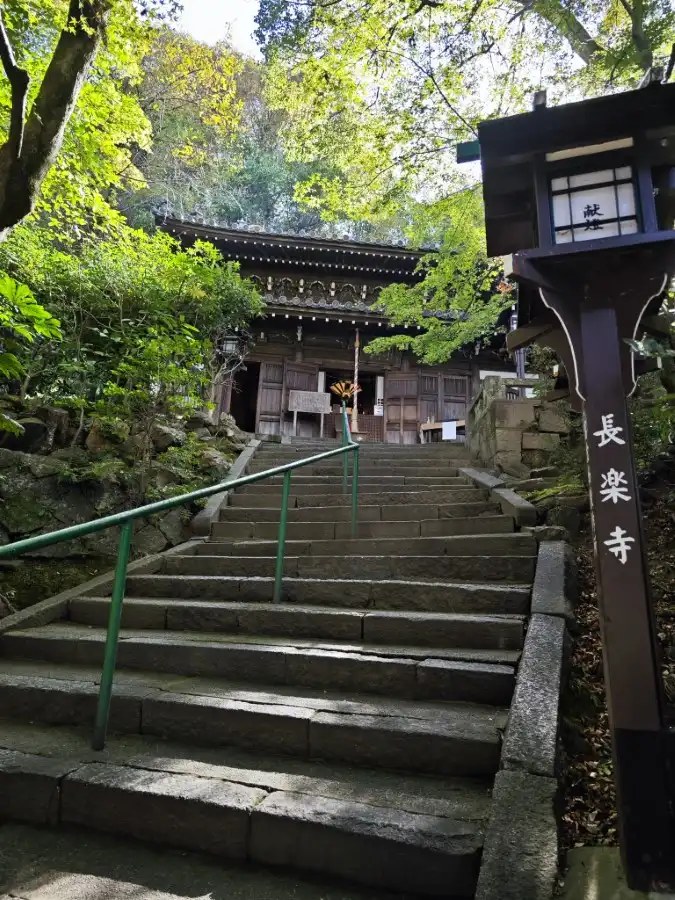
Chorakuji Temple (長楽寺), Kyoto
Chorakuji, a captivating temple in Kyoto, beckons foreign tourists with its enchanting blend of history and spirituality. Nestled amidst Kyoto’s picturesque landscapes, Chorakuji boasts awe-inspiring architecture and serene gardens. Visitors are invited to explore the rich tapestry of Japanese culture through the temple’s symbolic elements and ancient rituals. The tranquil ambiance provides a unique opportunity…
-
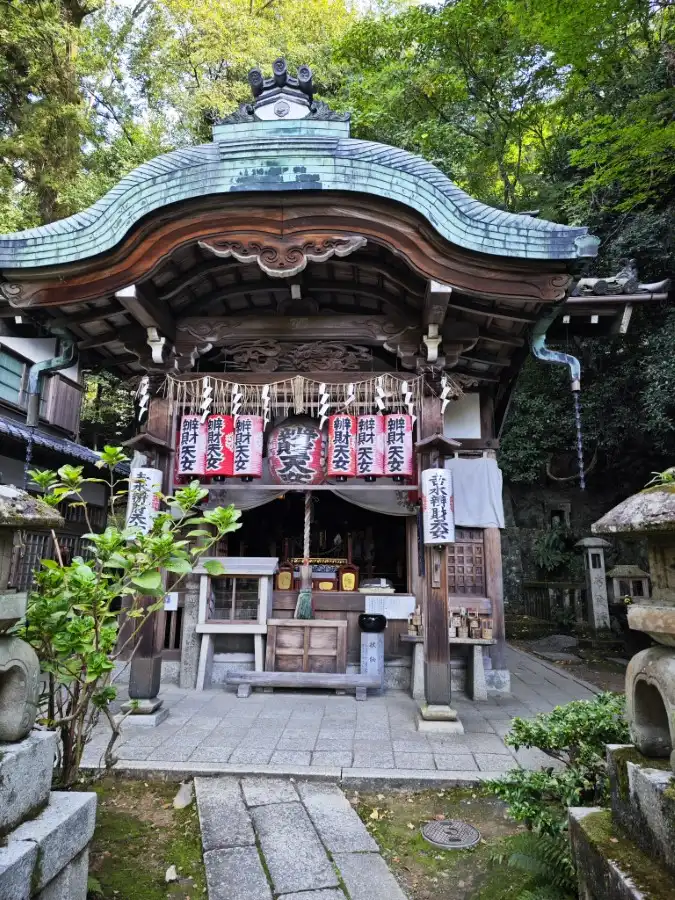
Yoshimizu-benzaitennyo-do Temple (吉水辨財天女堂)
Yoshimizu-Benzaitennyo-do (Yoshimizu Benzaitennyo Hall) is located on the east side of Maruyama Park. This area used to be the precincts of Anyoji Temple. But when the temple moved in Meiji era, only this hall remained here. The name “Yoshimizu” comes from the fact that a sacred spring of “good water” has been springing in this…
-
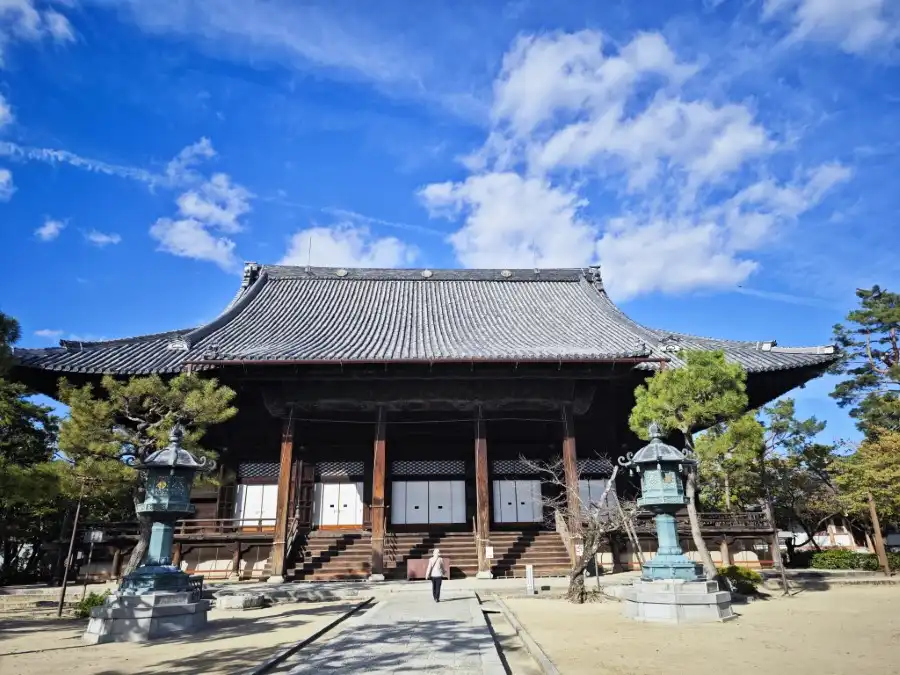
Chionji Temple (知恩寺)
Chionji Temple, also known as Hyakumanben Chionji, is a temple of the Jodo sect. Although the name is similar to the famous Chion-in Temple, it is a different temple of the same sect. Honen, the founder of the Jodo sect, lived in 1175 at Jinguji Temple in Kamo, the predecessor of Chionji temple. In 1212,…
-
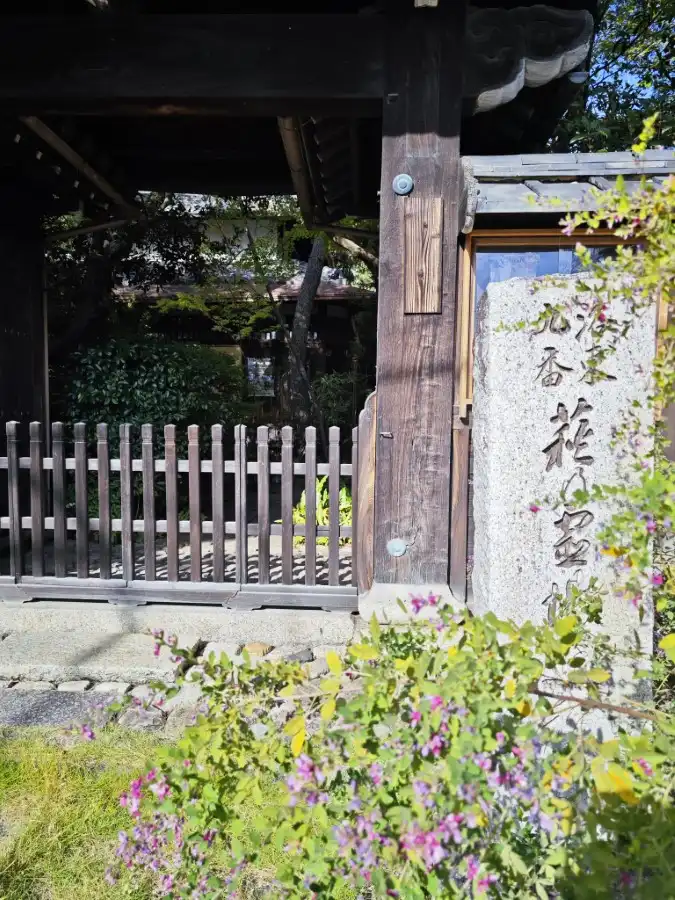
Koshoji Temple (迎稱寺)
Koshoji Temple is a temple of the Jishu sect of Buddhism and is close to Shinnyodo and other temples. Icchin Shonin (1278-1355), the sixth generation of the Yugyo Shonin (leading priests of the Jishu sect), founded this temple. However, there are other stories regarding the origin of this temple. The wooden structure of Icchin Shonin…
-
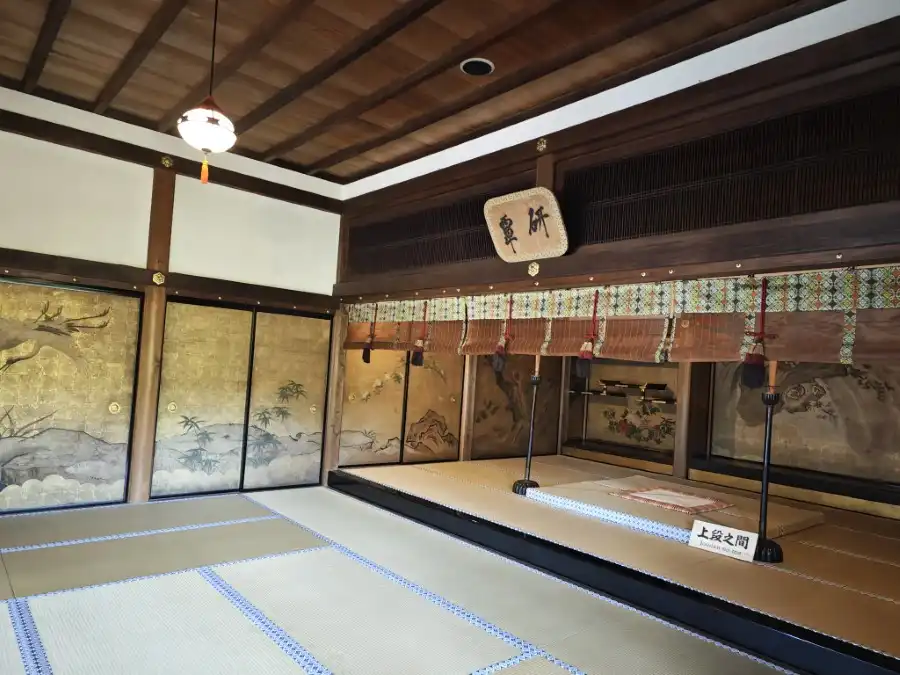
Shougoin Monzeki (聖護院門跡)
The history of Shougoin dates back to 1090. When High Priest Zoyo, who served as a forerunner to Emperor Shirakawa’s visit to Kumano, received the temple. Emperor named it “Shogoin” after his achievement of “protecting the Eucharist”. The temple was later moved from place to place in Kyoto due to warfare and fire, but was…
-
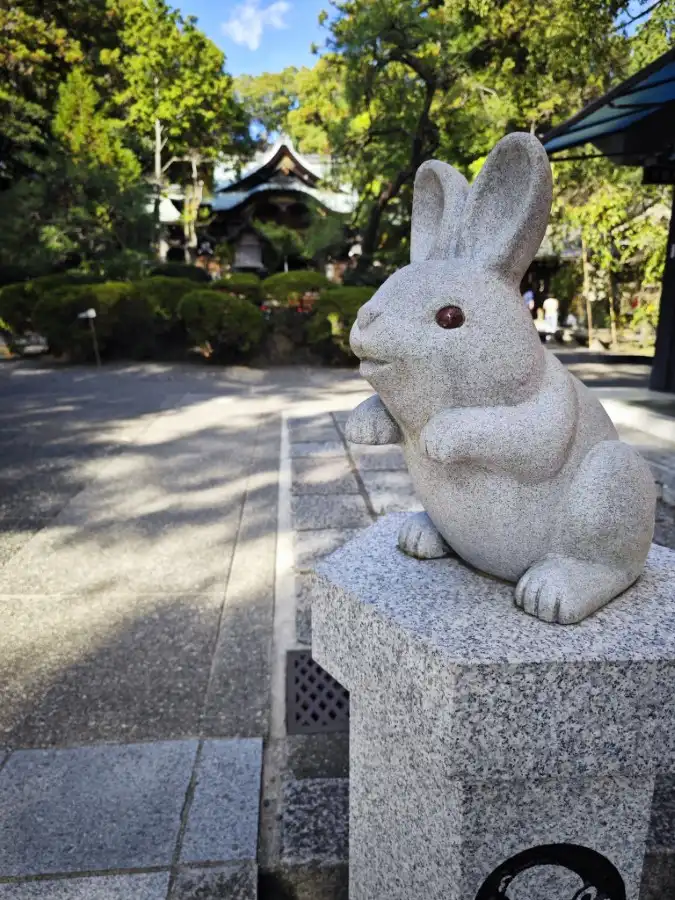
Okazaki Jinja Shrine (岡崎神社)
Although foreign visitors do not know much about Okazaki Jinja Shrine, it was one of the shrines built in the four directions of Heian-kyo for the protection of the royal castle when Emperor Kanmu moved the capital to Kyoto in 794. It got a name “East Heavenly King” because of its location to the east…
-
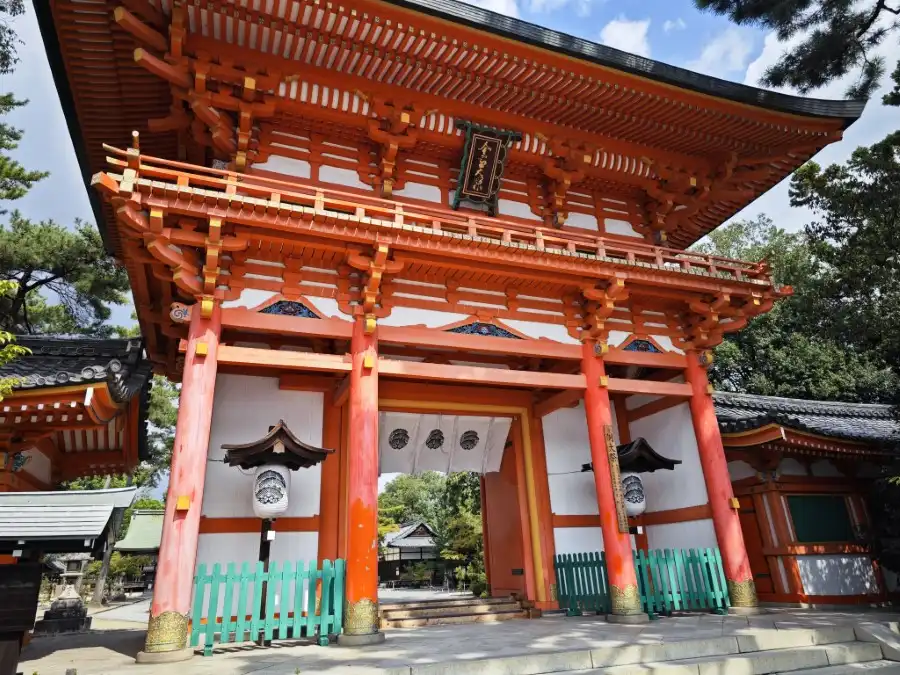
Imamiya Jinja Shrine (今宮神社)
In the area where Imamiya Jinja Shrine is located, there was a shrine dedicated to the god of plague, Susanoo, before the capital was moved to Heian in 794. 994, when a large-scale epidemic broke out, the Imperial Court built two portable shrines to carry the god of plague, which was worshipped in the area,…
-
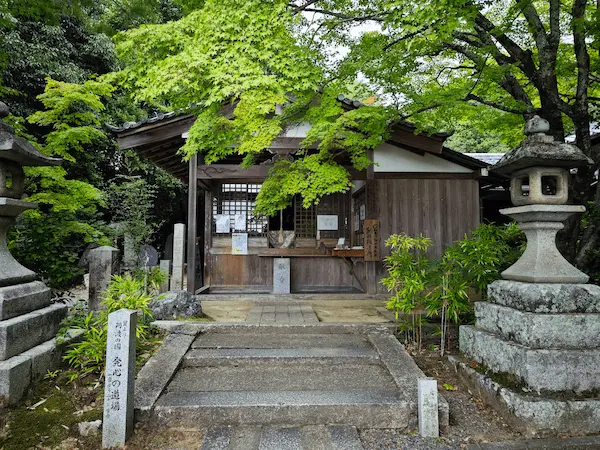
88 sacred temples Pilgrimage in Omuro (御室八十八ヶ所霊場)
Behind the Ninnaji Temple, there is a mountain path called Omurojojusan, which is dotted with 88 small Buddhist temples. Ninnaji Temple manages this route. In the Edo period (1603-1868), it was difficult to visit the 88 sacred sites on Shikoku. So in 1827, the 29th Monk of Ninnaji Temple made a request to bring back…
-
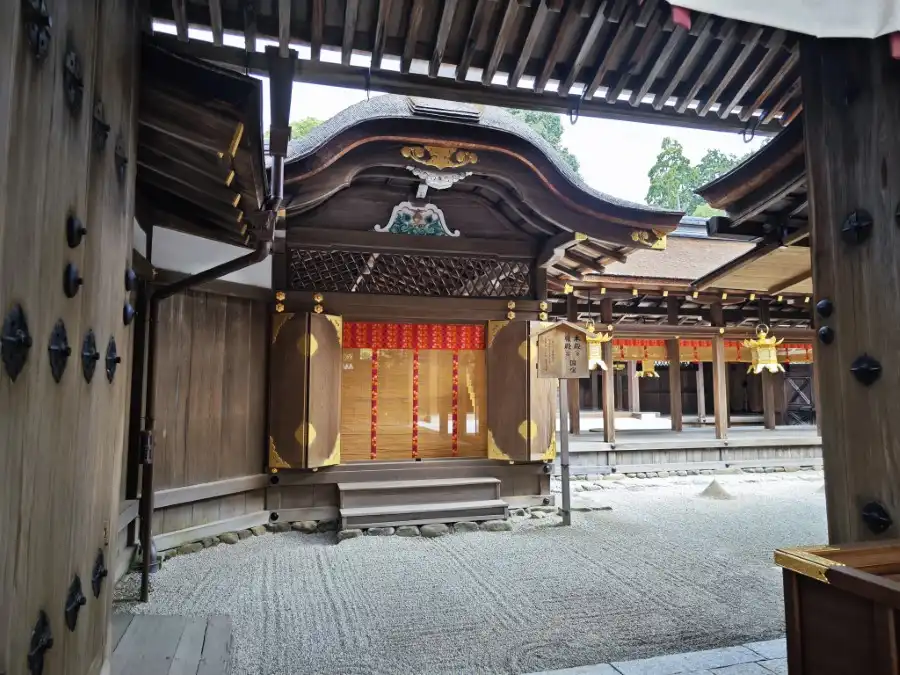
Kamigamo Jinja Shrine (上加茂神社)
The official name of Kamigamo Jinja Shrine is Kamowakezuchi Jinja Shrine. This shrine is dedicated to Kamowakeikazuchi-Okami. The entire area of the shrine is a part of World Heritage site, with two national treasure buildings and 41 important cultural properties. The main shrine is not normally visible from the outside, but you can see the…
-
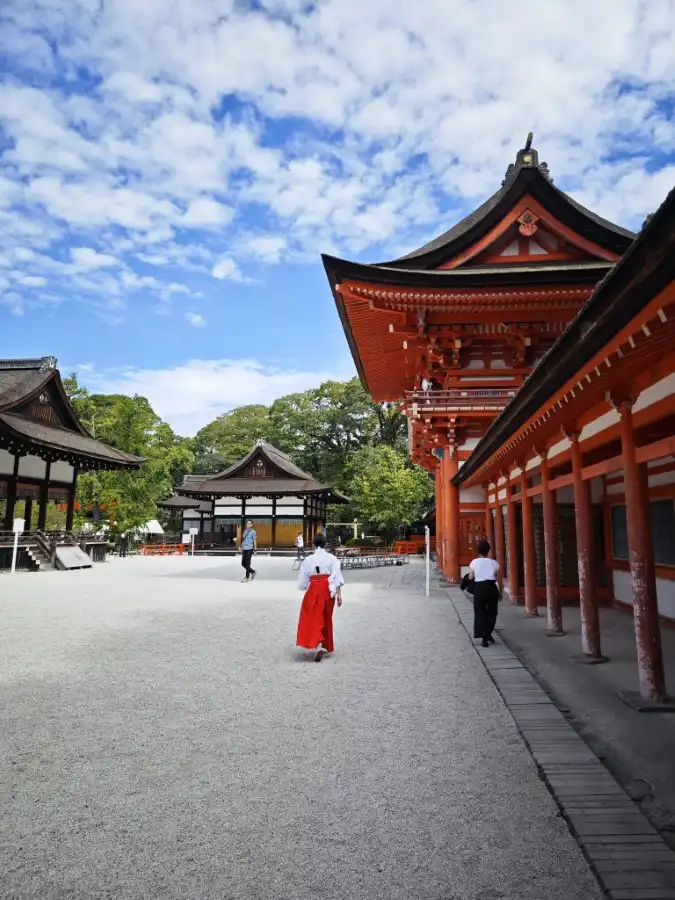
Shimogamo Jinja Shrine (下鴨神社)
Shimogamo Jinja Shrine, together with Kamigamo Jinja Shrine, is definitory one of the most important shrines in Kyoto. Although it doesn’t have an outstanding photo spot like the vermilion torii gate of Fushimi Inari Shrine, its ancient history and forested environment are worth mentioning. In addition, 31 buildings, including the tower gate, dance hall, kimono…
-

Kawai Jinja Shrine (河合神社)
Kawai Jinja Shrine, a daughter shrine of Shimogamo Jinja Shrine, is worshipped as the protector of women. It enshrines Tamayorihime no Mikoto, the mother of Emperor Jimmu. Tamayorihime no Mikoto, renowned for her jewel-like beauty, is deeply revered as the god of beauty. Kawai Shrine distributes mirror ema as beautiful prayer ema. The Kawai Jinja…
-

Shusuisha (秀穂舎)
In Shimogamo Miyakawacho (south of Shimogamo Jinja Shrine), there is the Old Asada Family Residence. This is a remnant of “Shake” built in the middle of the Edo period. Currently, the “Shake” building has been maintained and is open to the public as the Kamosha Museum/Shusuisha.” Google map “Shake” refers to the houses of the…
-
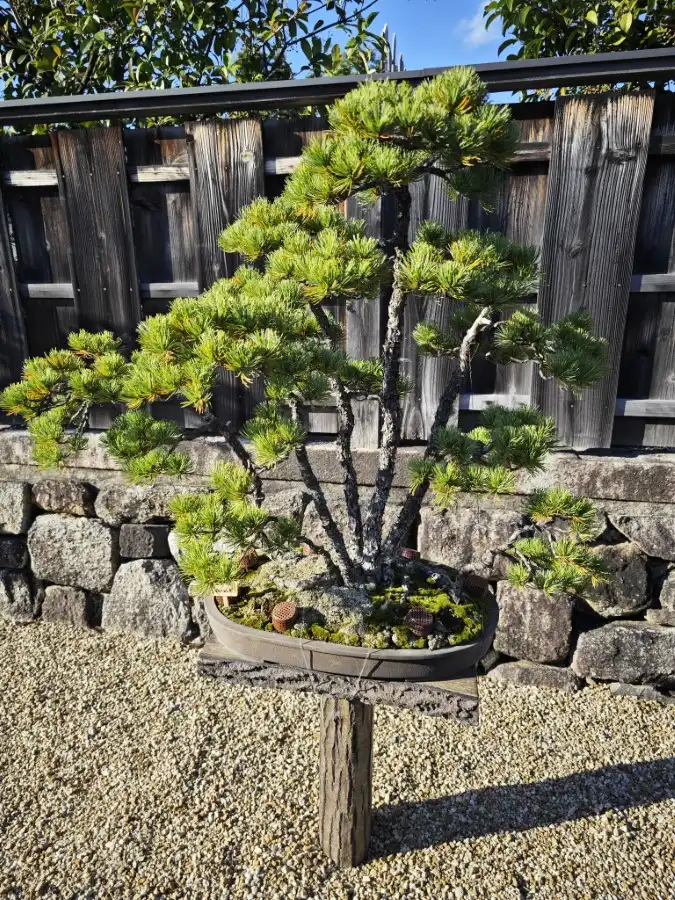
Hoshun-in Temple (芳春院), Daitokuji
Hoshun-in temple is a sub-temple of the Daitokuji Temple. Hoshun-in temple is located at the northernmost point of the Daitokuji temple compound. You find it further back, past the entrance to Daisen-in Temple. Hoshunin is the Buddhist name of Matsu, a regular wife of Maeda Toshiie. He was a feudal lord in the Warring States…
-
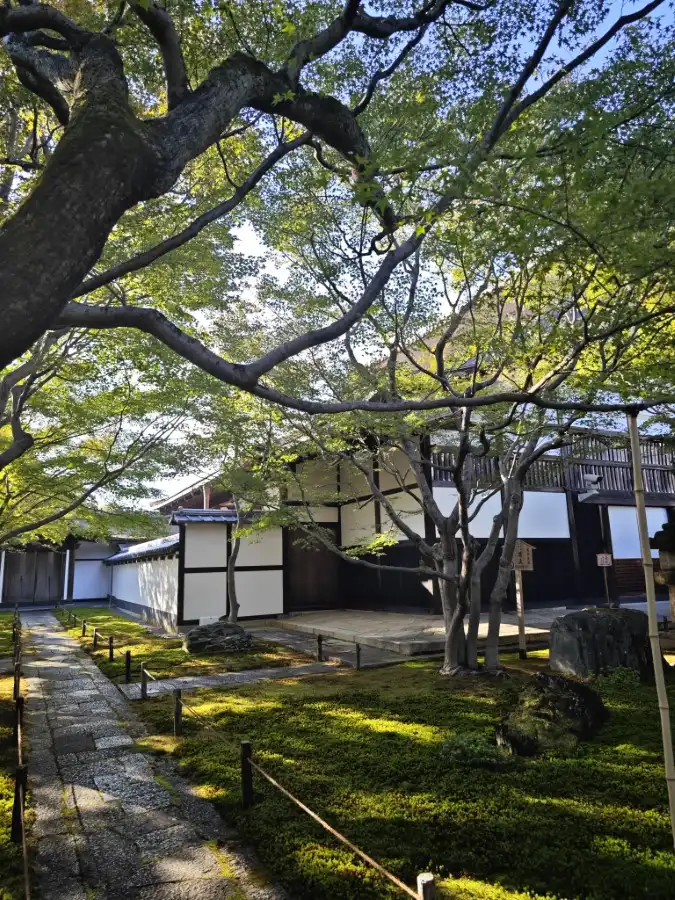
Obai-in temple (黄梅院), Daitokuji
Obai-in temple’s gardens are must see if you have chance. This temple is a real hidden gem in Kyoto. Oda Nobunaga built Obai-an in 1562 as a memorial service for his father, Oda Nobuhide. And it is one of the sub-temples of Daitokuji Temple. After Nobunaga’s sudden death due to the Honnouji Incident, Hideyoshi Hashiba…
-
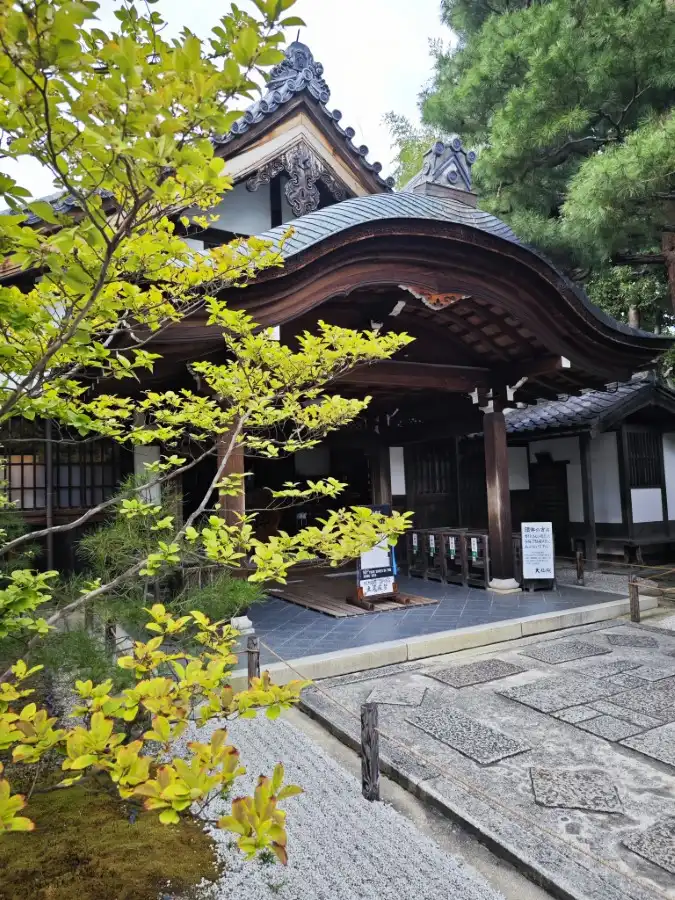
Daisen-in (大仙院), Daitokuji
Daisen-in is the most important sub-temple of Daitokuji Temple. In 1509 Rokkaku Masayori founded Daisen-in. The main hall is the original building. It is one of the oldest remaining Zen sect hojo buildings and is a national treasure. Shoin is an important cultural property. The garden is said to be a rock garden representing Karesansui…
-

Ryogen-in (龍源院), Daitokuji
Ryogen-in is a sub-temple of Daitokuji Temple. This temple was founded in 1502 by Yoshimoto Hatakeyama, Yoshinaga Otomo, and Yoshioki Ouchi. It is the oldest sub-temple of Daitokuji Temple. This temple is usually open to the public. The original buildings, the Hojo, Karamon, and Omotemon, are important cultural properties. Kyoto City Official Travel Guide Ryogen-in…
-
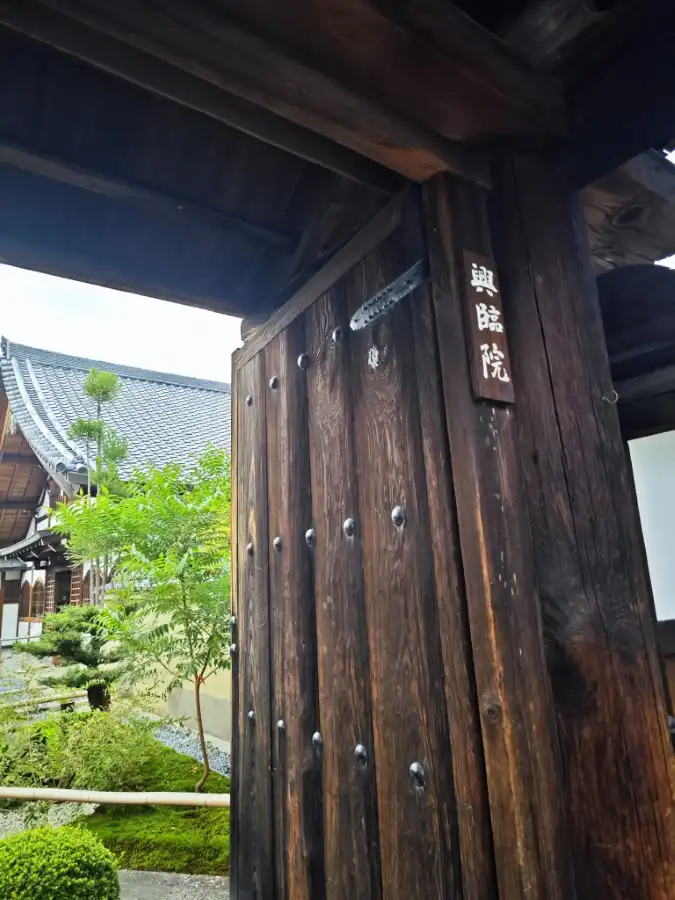
Korin-in (興臨院), Daitokuji
Discover the hidden beauty of Korin-in Temple, a sub-temple of Daitokuji, exclusively open on special days. Established in the 1520s by the Noto Hatakeyama clan, the temple boasts a rich history and cultural significance. The main hall and gates, including the ancient Karamon gate, are cherished cultural properties. Renovated by Toshiie Maeda in 1581, it…
-
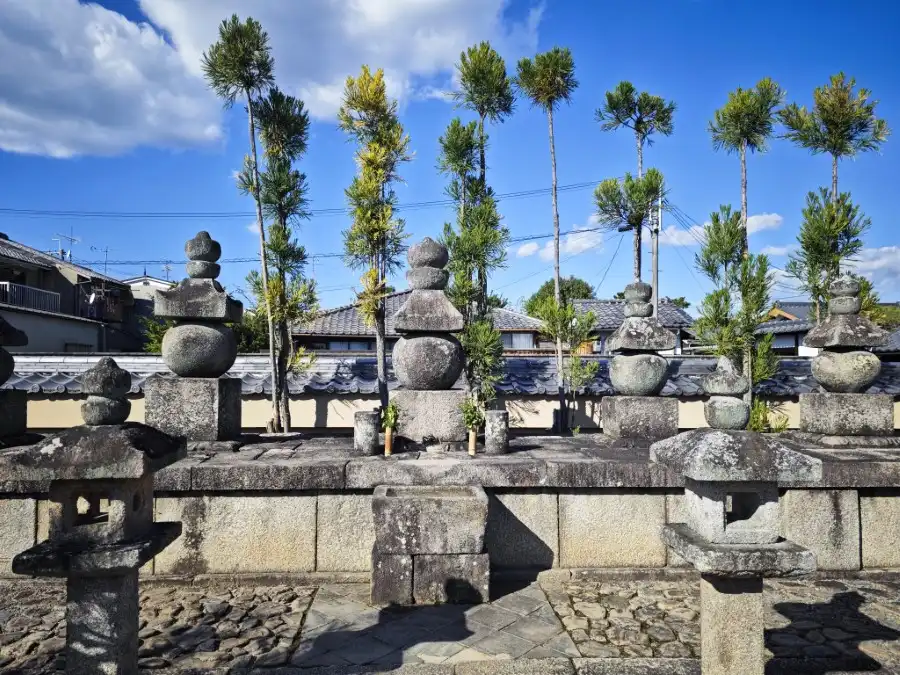
Soken-in (総見院), Daitokuji
Soken-in Temple is a sub-temple of Daitokuji Temple. Toyotomi Hideyoshi built Soken-in Temple in 1583 as a memorial to Oda Nobunaga, who fell in the Honnouji Incident. Toyotomi Hideyoshi was the man who united Japan after the death of Oda Nobunaga, following his legacy. In the main hall is a wooden seated statue of Lord…
-
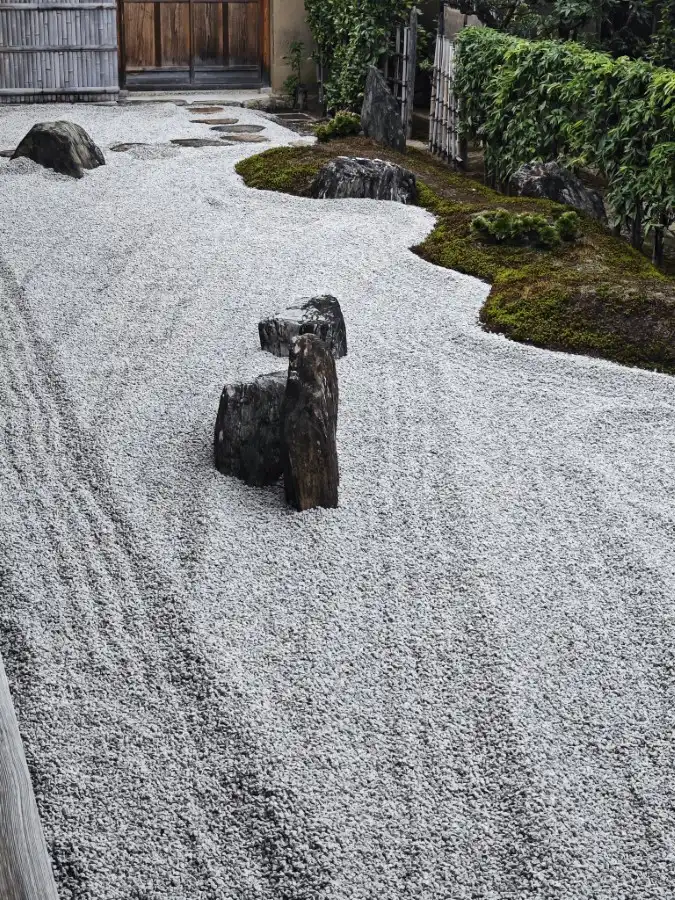
Zuiho-in (瑞峯院), Daitokuji
Zuiho-in is a sub-temple of Daitokuji Temple. This temple is usually open to the public. In 1535, Otomo Sorin, known as a Christian daimyo, built Zuiho-in as the family temple of the Otomo family. The guest hall, front gate, and Karamon gate that remain from the time of its construction are important cultural properties. The…
-
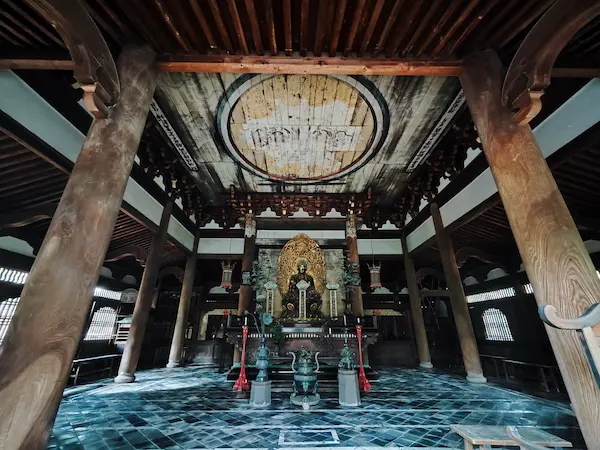
Daitokuji Temple (大徳寺)
The best time to visit Daitokuji is in the fall. Many sub-temples are open to the public in this season. Daitokuji Temple is the head temple of the Daitokuji School of the Rinzai sect of Zen Buddhism. It was founded in 1315 at the end of the Kamakura period. Onin War devastated the Temple. But…
-
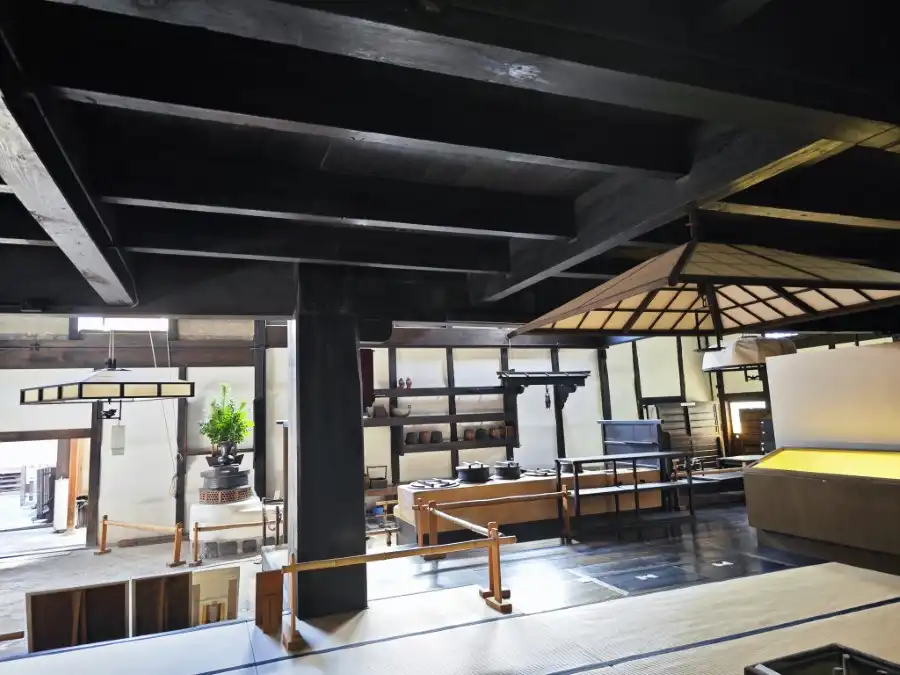
Sumiya (角屋) in Shimabara
Sumiya is an ageya (restaurant/feast facility) that once operated in Kyoto’s Shimabara red-light district (present-day Shimogyo Ward, Kyoto City). Its building has been designated as a national important cultural property. It has been open to the public as the Sumiya Hospitality Culture Museum since 2011. Currently, only the first floor is open to the public.…
-

Wachigaiya (輪違屋)
Wachigaiya is usually closed to the public. Shimabara was the only prestigious red-light district in Kyoto that was officially recognized by the Shogunate. Wachigaiya continues to operate today and is the only tea house/okiya in Japan that has its own Tayu. An okiya is like a production house where maiko and geiko are housed, trained,…
-
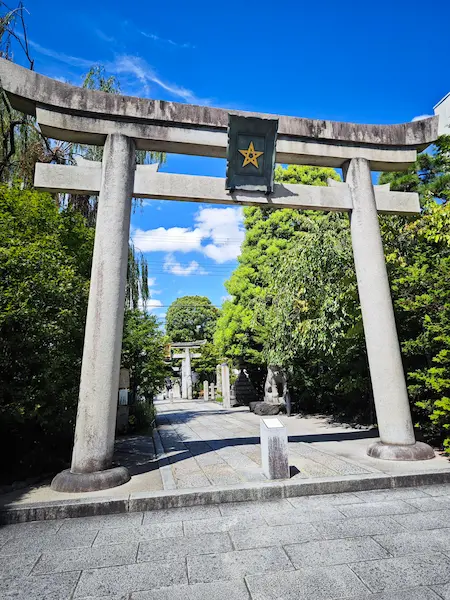
Seimei Jinja Shrine (晴明神社)
Seimei Jinja Shrine is dedicated to Abe no Seimei, an astronomer and Onmyoji of the mid-Heian period. This is a shrine for “exorcism” and “protection from evil spirits”. Even today, many worshippers visit the temple and offer prayers to ward off their evil spirits. Emperor Ichijo, who praised the great deeds of Abe no Seimei,…
-

The Kyoto Trail: Anrakuji Temple, Roumon Waterfall, Daimonji Mountain, Himukai Daijingu Shrine
This course is a part of the Higashiyama Course of the Kyoto Trail. Starting from the Shinnyodo-mae bus stop, we will visit Anrakuji Temple. The trail climbs along the valley, passes the waterfall at Roumon, climbs Mt. Daimonji, and descends to Himukai Daijingu Shrine. The nearest station to the crossroads is Keage Station on the…
-
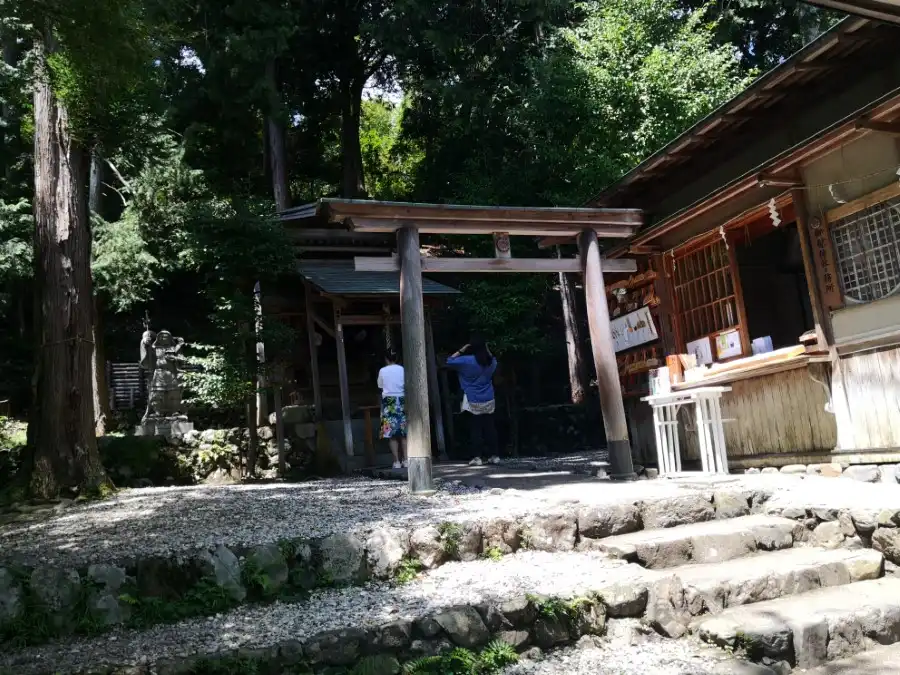
Mikami Jinja Shrine (御髪神社) and Ogura Pond (小倉池)
Mikami Jinja Shrine is located at the foot of Mt. Ogura in the north of Arashiyama. It is the only shrine in Japan that enshrines the founder of the barber and beauty industry. Even today, the faith of barbers is strong. And there is a hair mound in the precincts where hair is dedicated. It…
-
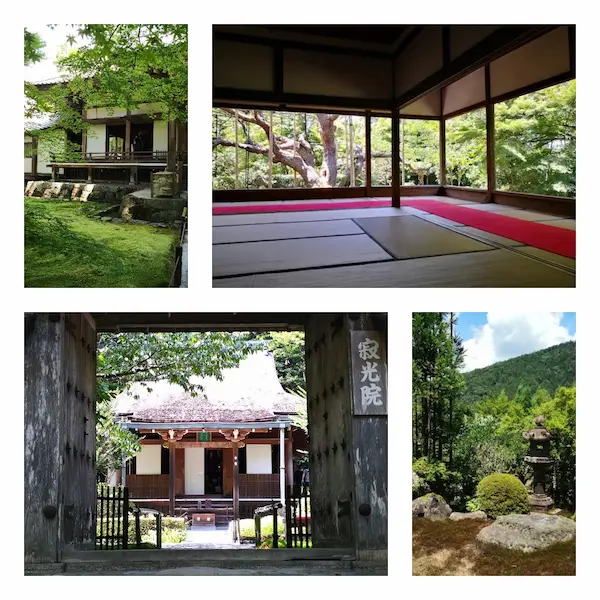
Walking tour of Ohara, visiting temples in seclusion
About Ohara Ohara, located in the northeastern part of Kyoto City, is a basin village surrounded by mountains on all sides. The village is located at the northwestern foot of Mt. Hiei, the head temple of the Tendai sect of Buddhism. And the Takano River, a tributary of the Kamo River, runs through the village…
-
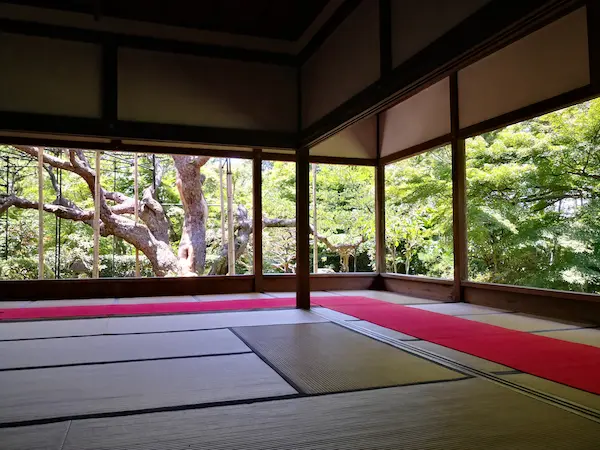
Hosenin Temple (宝泉院) in Ohara
Hosenin temple is a temple of the Tendai sect in Ohara. Together with the Jikkoin Temple, it is a sub-temple of the Shorinin Temple. As visitors enter through the temple gate, they see before them a temple’s symbol, a 700-year-old goyomatsu (five-leaf pine tree). Because it is a large and precious goyomatsu tree, “Hosenin no…
-
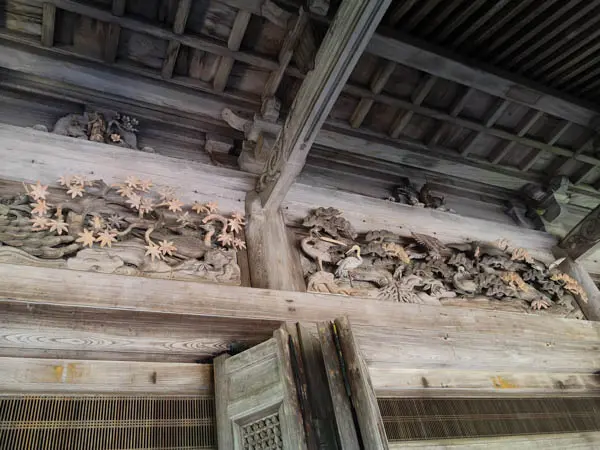
Shorinin Temple (勝林院) in Ohara
Jakugen founded the Shorinin Temple in 1013 as a place to practice Nembutsu (Buddhist chanting) through Shomyo (Buddhist chanting). After the construction of nearby Raigoin Temple about 90 years later, many monks’ quarters surounded the two temples. These temples became a center for many monks to study and practice shomyo (Buddhist chanting). Thus, the temple…
-
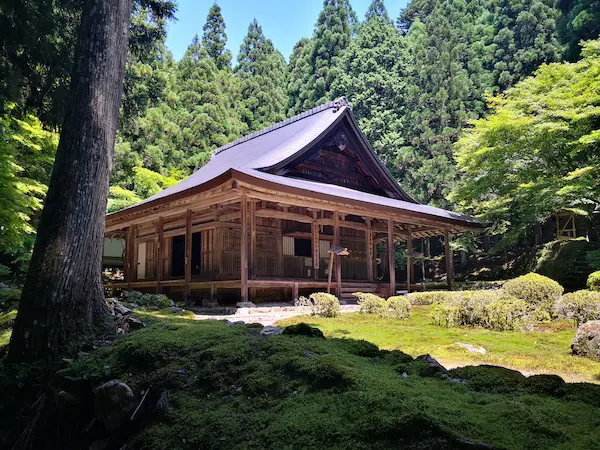
Raigoin Temple (来迎院) in Ohara
Jikaku Daishi Ennin founded the Raigoin Temple in the early Heian period as a center for Tendai Shomyo (Tendai Buddhist chanting). In 1109, Ryonin rebuilt the temple. The reconstruction of the temple resulted in the establishment of the Lower Hall, with Shorinin as the main building, and the Upper Hall, with Raigoin as the main…
-
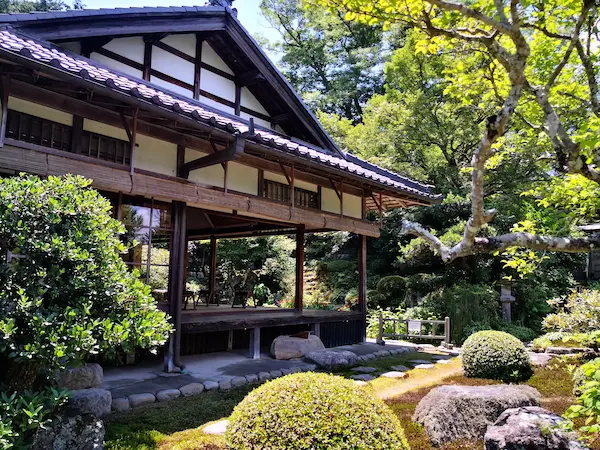
Jikkoin Temple (実光院) in Ohara
Jikkoin Temple in Ohara is a monastery of nearby Shorinin Temple, which used to be the main hall of a sub-temple of Gyozan Taigenji. In addition to this temple and Hosenin Temple, there used to be many other monastery buildings such as Fugenin and Rikakuin. The Temple’s official WEB site tells the history of the…
-

Jakkoin Temple (寂光院) in Ohara
Jakkoin Temple in Ohara is a nunnery of the Tendai sect of Buddhism. This is the temple where Kenreimonin, daughter of Taira no Kiyomori, spent the rest of her life. History of Jakkoin Temple In 594 Prince Shotoku built the temple to mourn the loss of his father, Emperor Yomei. The first abbot was Tamateru…
-
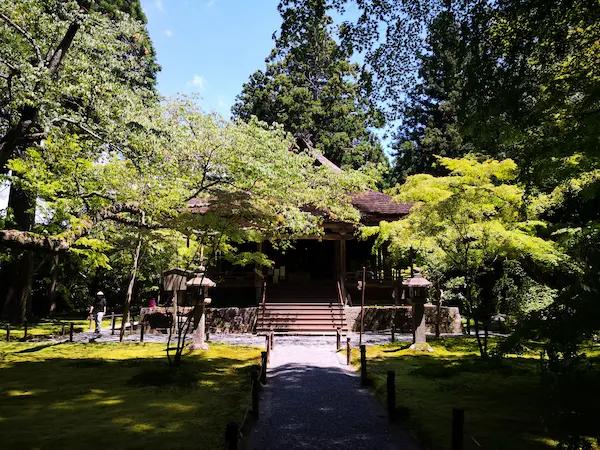
Sanzenin Temple (三千院) in Ohara
Sanzenin Temple was originally built by Saicho during the Enryaku era (782-806) in the Toto Minamidani (東塔南谷) on Mt. Hiei. Since the late Heian period, the temple has been a monzeki, with the prince and imperial family serving as abbots. The location of the temple has moved several times over time, from within Hieizan to…
-
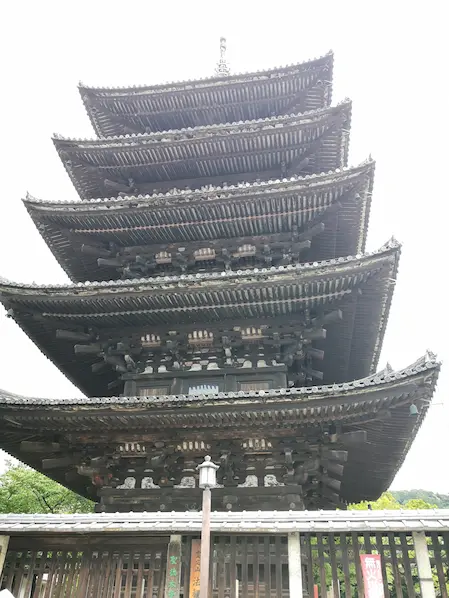
Pagoda Yasaka, Hokanji (法観寺)
When looking at the city of Kyoto from the stage of Kiyomizudera Temple, the five-story pagoda of Hokanji Temple can be seen just in front of it. This pagoda is known as Pagoda Yasaka. This pagoda is also a well-known landmark in Higashiyama District when heading to Shimizudera Temple. The Hokanji Temple is a temple…
-
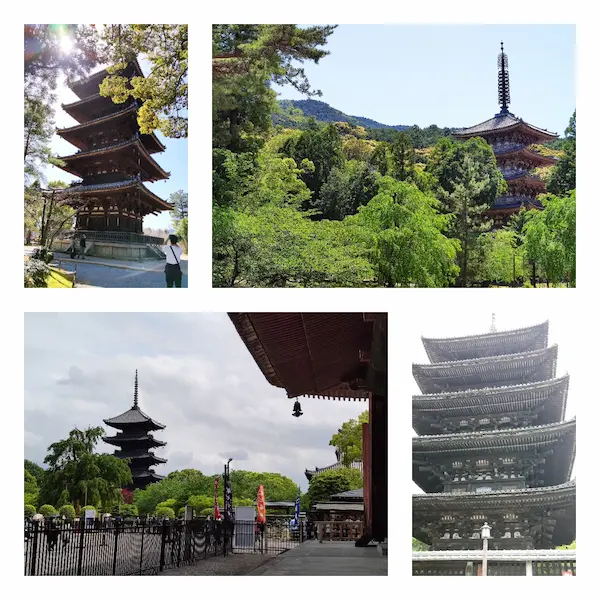
Five-Story Pagodas in Kyoto (京都五重塔巡り)
There are four five-story pagodas in Kyoto City. They are all heritage sites of historical and cultural importance. Two of them are national treasures and the other two are important cultural properties. This tour course will take you to all five-story pagodas in Kyoto. Toji Temple The Pagoda in Toji Temple is the fifth reconstruction…
-
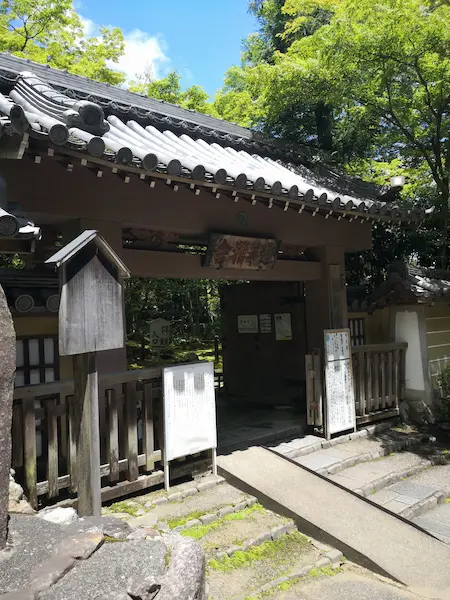
Danrinji (檀林寺)
Near the Gioji Temple, you can find another temple with the tablet of “Danrinji Monzeki”. This is a fake temple constructed in 1964. And it borrowed a name from a historical temple. Original Danrinji Temple disappeared in the middle of Heian period (check it on Wikipedia). Current Danrinji is not even a reconstruction of the…
-

Takiguchidera Temple (滝口寺)
Takiguchidera Temple is a very small temple next to Gioji Temple in Saga area. This temple began as the Oujo-in temple in the Heian period. The temple was abandoned during the Meiji period due to the abolition of Buddhism. It was rebuilt together with Gioji Temple in the Showa period. This temple is famous for…
-
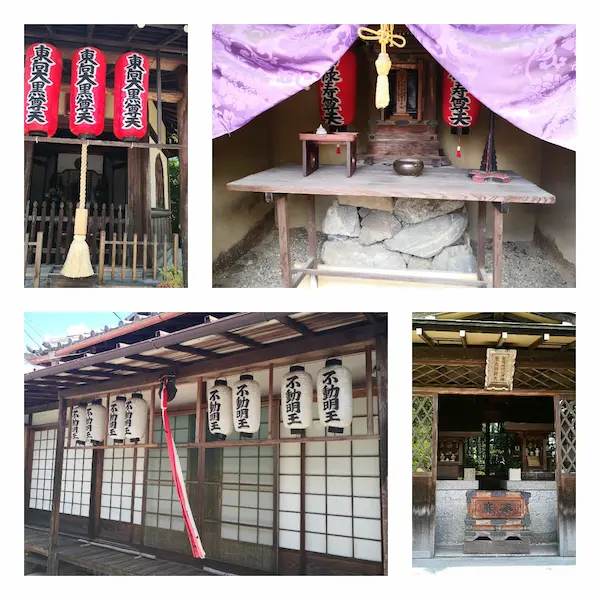
Tenryuji Shichifukujin (Seven Gods of Good Fortune)
Tenryuji Shichifukujin is a tour of the seven gods of good fortune scattered in seven sub-temples of Tenryuji Temple. Shichifukujin is the collective name for seven deities. Normally they are Daikokuten, Bishamonten, Ebisuten, Jurojin, Fukurokuju, Benzaiten, and Hotei. Worshipping the Seven Gods of Good Fortune will remove seven kinds of misfortune and bestow seven kinds…
-
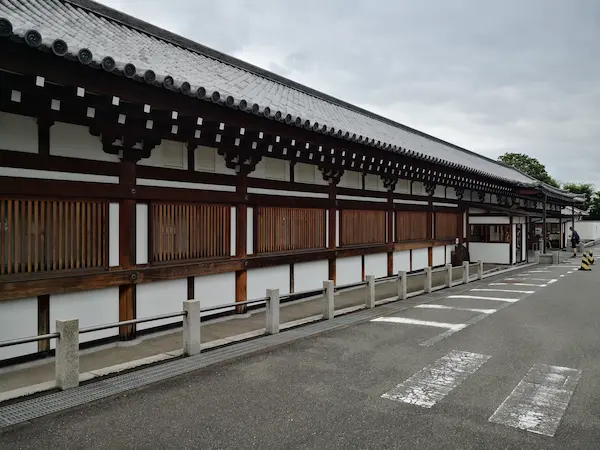
Sanjusangendo (三十三間堂)
Sanjusangendo is a temple of the Tendai sect located in Higashiyama-ku, Kyoto. Its official name is Rengeoin Hondo (蓮華王院本堂). It is not an independent temple, but the nearby Myohoin Temple administer it. Taira no Kiyomori built this long hall in 1164. It was later destroyed by fire, but was restored in 1266. The name Sanjusangendo…
-
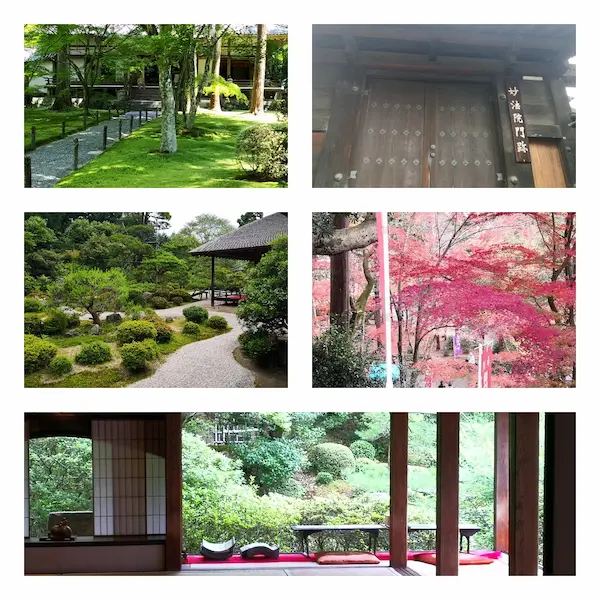
Gokashitsu Monzeki (Five Monzeki Temple) Tour
What is “Gokashitsu Monzeki”? In the Tendai sect, five temples in Kyoto (Myohoin, Sanzenin, Seirenin, Manjuin, and Bishamondo) are collectively called the “Kyoto Gokashitsu Monzeki” of the Tendai sect. Official WEB site of Tenday Sect This tour course will take you to these five monzeki temples. Transportation is by bus, train, and on foot. Some…
-

Myohoin Temple (妙法院)
Myohoin Temple is a monzeki temple dating from the early Heian period. This temple has Sanjusangendo as its sub-temple, and together with Shorenin Temple and Sanzenin Temple, is known as one of the “Three Monzeki Temples of the Tendai Sect” and is a temple of great prestige. The interior of the Myohoin building is usually…
-
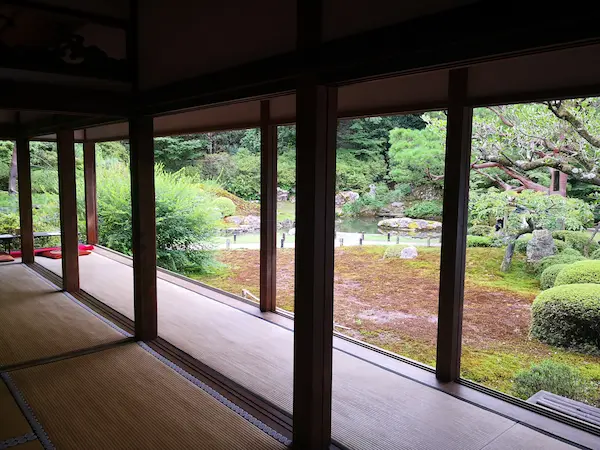
Shorenin Monzeki (青蓮院門跡)
Shorenin Monzeki is one of the three monzeki of Enryakuji Temple on Mt. Hiei (other two is Sanzen-in and Myoho-in). It is now one of the five Kyoto Monzeki of the Tendai sect. It originated from Shorenbo, a monk’s abode on Mt. Hiei, which at that time was the residence of Saicho, Ennin, and other…
-
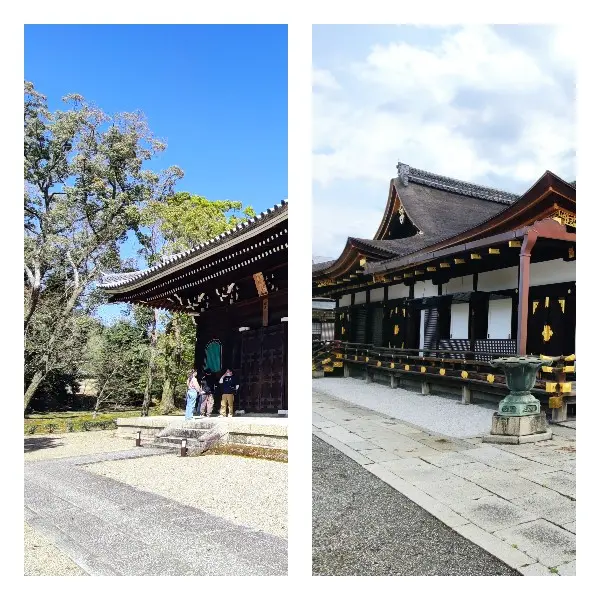
Kyoto Sankobo (京都三弘法) tour
Toji Temple, Ninnaji Temple, and Jinkoin Temple are three temples in Kyoto that are closely associated with Kobo Daishi, and are called “San Kobo. In Kyoto, there is an old custom that if you visit these three temples during the three days of the New Year, called ” Matsunouchi,” you can escape from the bad…
-

Five Great zen Temples of Kyoto (Kyoto Gozan) 京都五山
Five Great Zen Temple os Kyoto, or Kyoto Gozan, are important temples of the Rinzai sect in Kyoto. They include, from highest rank, Tenryuji Temple, Shokokuji Temple, Kenninji Temple, Tofukuji Temple, and Manjuji Temple, with Nanzenji Temple as the specially ranked temple. Among these temples, only Tenryuji Temple is the World Heritage Site. On the…
-
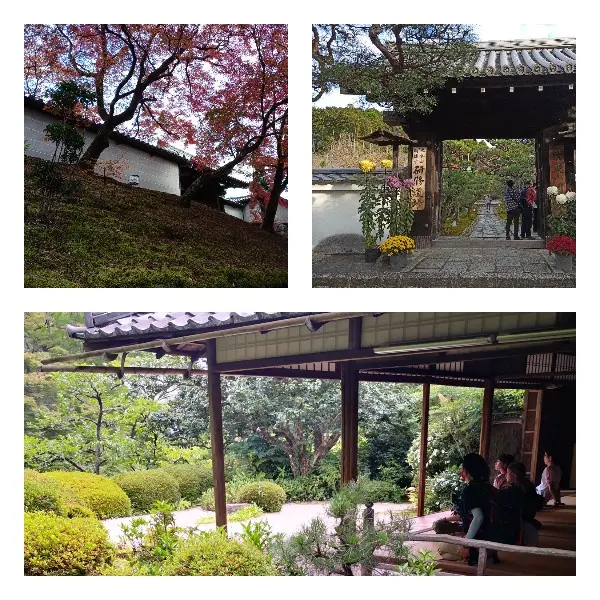
Ichijoji Area of Kyoto, Visiting beautiful small temples
Ichijoji area is located all the way northeast of Kyoto City. Although the Ichijoji area is not the most famous tourist spot in Kyoto, it is dotted with beautiful temples along the mountains. Traffic is not very convenient, but let’s take a hike and visit some of them. This model course visits Manshu-in Temple, Enkoji…
-
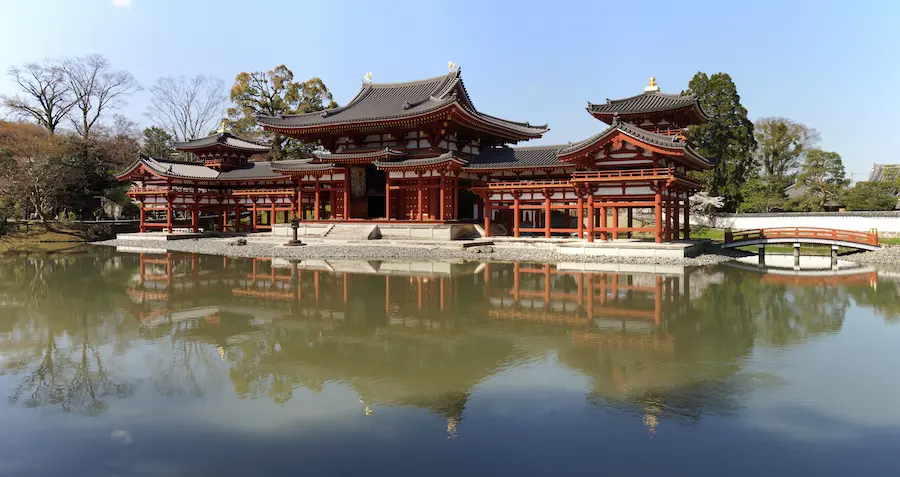
Byodoin Temple (平等院)
Byodoin Temple in Uji represents the beauty of Heian Period. It is a Buddhist temple located in Uji City, south of Kyoto City. It is one of the best preserved national treasures in Japan and a World Heritage Site. (Official WEB site) Byodoin was built in the south of Heian-kyo during the mid-Heian period. The…
-
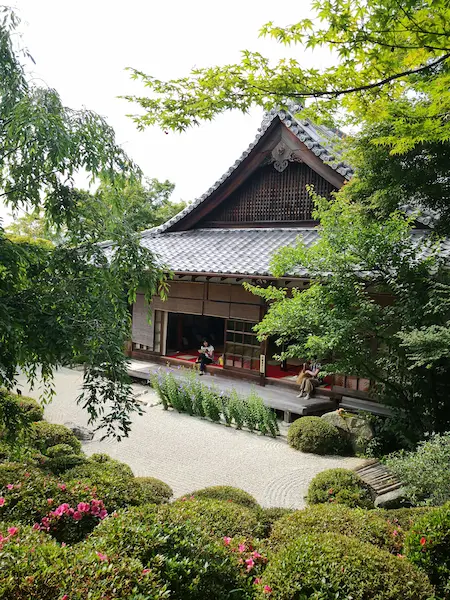
Konpukuji Temple (金福寺)
Explore Konpukuji Temple, a haven for Haiku enthusiasts in Kyoto. Founded in 864 and later revitalized by monk Tesshu in the Edo period, it’s a sacred site for Nanzenji Rinzai Zen Buddhism. Renowned poet Matsuo Basho and Tesshu forged a deep bond here, with a hermitage, “Basho-an,” as testimony. Discover the historic “O-no-Mizu” well and…
-
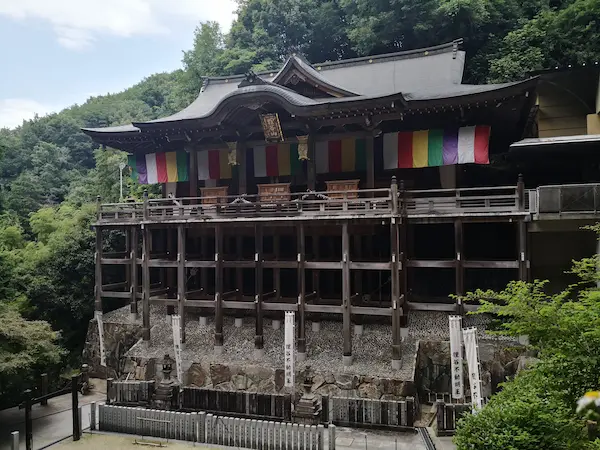
Tanukidani-san Fudō-in Temple (狸谷山不動院)
Tanukidani-san Fudoin is the head temple of Shugendo, the Shingon sect of Buddhism, located in Ichijoji, Sakyo-ku. The main hall of the temple, built in the Kengai-zukuri style (stage style), is located up the hill from Shisen-do Hall and 250 more steps. Templs’s official WEB site The origin of the Temple dates back to the…
-
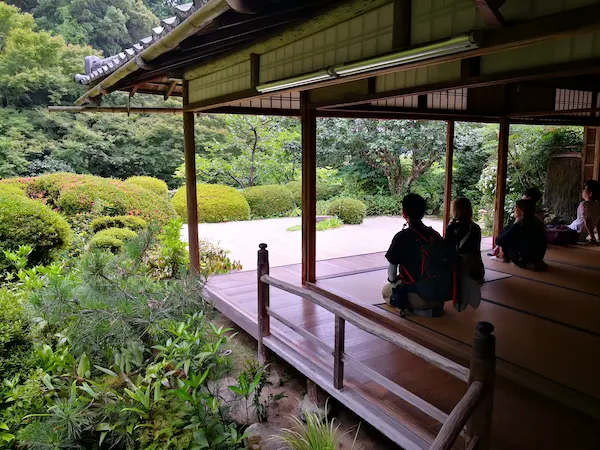
Shisendo Jozanji (詩仙堂丈山寺)
Shisendo is a branch temple of Eiheiji Temple of the Soto sect of Buddhism, where Ishikawa Jozan lived until his death in 1672 at the age of 90. Ishikawa participated in the Battle of Sekigahara in 1600. And quit the warrior’s life after the Summer Battle of Osaka in 1614. Afterwards, Ishikawa wrote poems on…
-
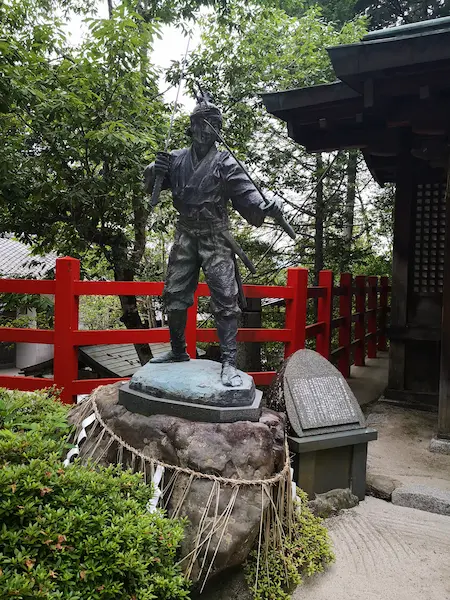
Hachidai Jinja Shrine (八大神社)
Miyamoto Musashi fought a duel near Hachidai Jinja Shrine (Ichijoji Sagarimatsu). The date of the founding of Hachidai Jinja Shrine is unknown, but in 1294, Hachidaitenno (the eight great heavenly deities) were enshrined. Hachidai Shrine is the guardian deity of the Ichijoji area in the northern part of Kyoto. It is also called Kita-tenno (North…
-
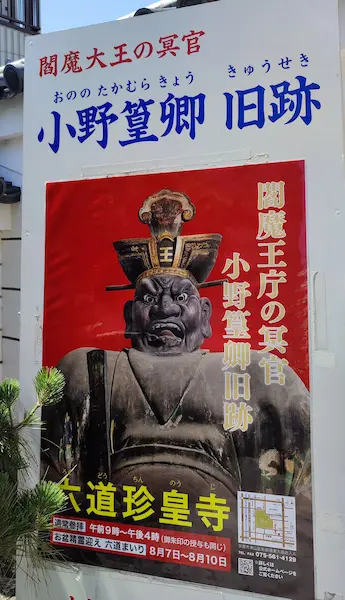
Rokudo Chinnoji (六道珍皇寺)
Rokudo Chinnoji Temple is one of the sub-temples of Kenninji Temple. The main deity is Yakushi Nyorai, but the temple is known for its statues of Ono-no Takamura and King Enma. We cannot take photos of these statues unfortunately. Do you like to see the entrance to under world? Rokudo Chinnoji Temple is the place.…
-
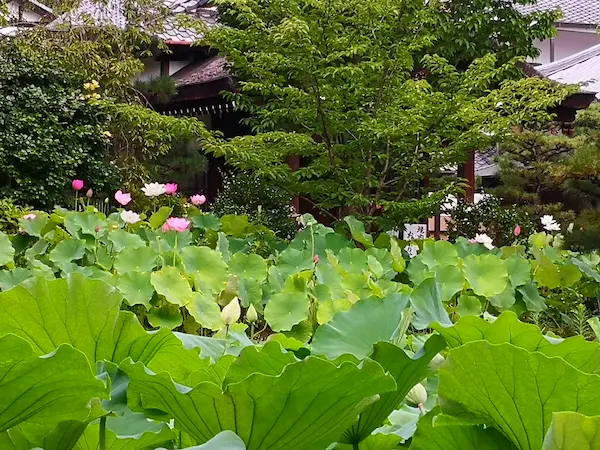
Houkongoin Temple (法金剛院)
Only local people know the flower temple Houkongoin. It is a temple of the Ritsu sect of Buddhism. The Ritsu sect is represented by Toshodaiji temple in Nara, but there are only a few temples. (Temple’s official WEB site) Hokkongoin is located right in front of JR Hanazono Station, making it a very accessible temple.…
-
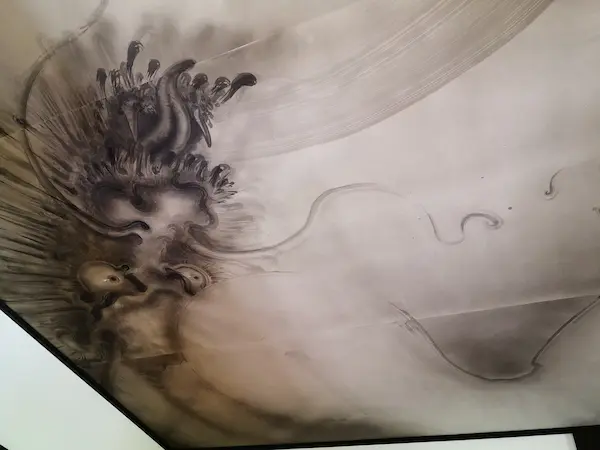
Reigen-in Temple (霊源院)
Reigen-in is one of the sub-temples located in the southeast of the Kenninji temple grounds. It was founded in the Ouei era (1394-1428) by Ryuzan Tokumi, a monk who was invited to found the temple, and his disciple Ichian Ichirin. Reigen-in Temple was the academic core of Kenninji Temple and produced many of the leading…
-
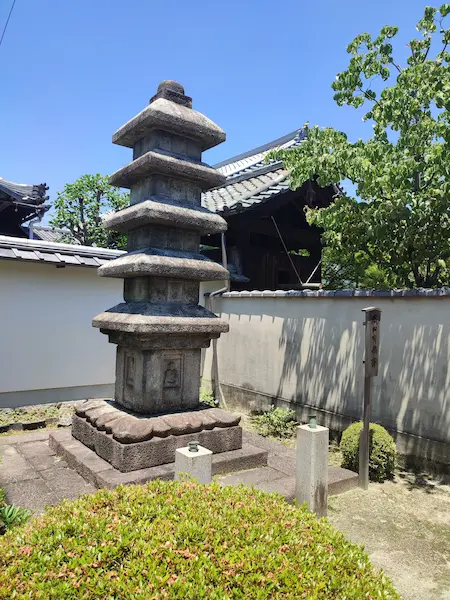
Shoden Eigen-in Temple (正伝永源院)
Shoden Eigen-in is a sub-temple of Kenninji Temple, the head temple of the Rinzai sect of Buddhism. In the Kamakura period, when the temple was founded, there were two temples, Shoden-in and Eigen-an. However, during the confusion caused by the abolition of Buddhism in the Meiji period (1868-1912), Eigen-an was unfortunately uninhabited and was immediately…
-
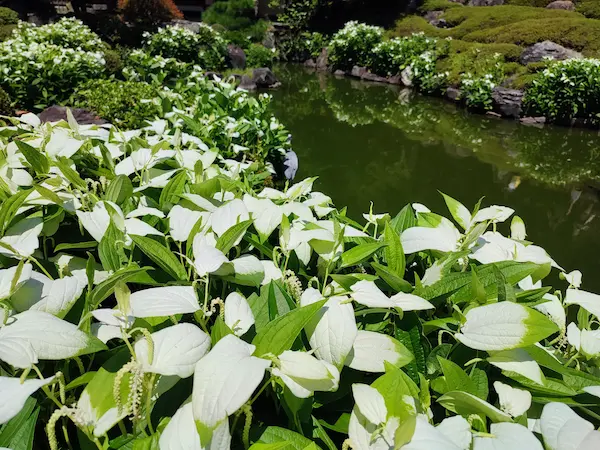
Ryosoku-in Temple (両足院)
Ryosoku-in is a temple of the Kenninji School of Rinzai Zen Buddhism and a sub-temple of Kenninji Temple. The principal image of the temple is the Amida Nyorai. It was built in the Kamakura period as Chisokuin Temple, founded by Zen priest Ryuzan Tokken. After a fire during the Tenmon period (1532 – 1555), the…
-
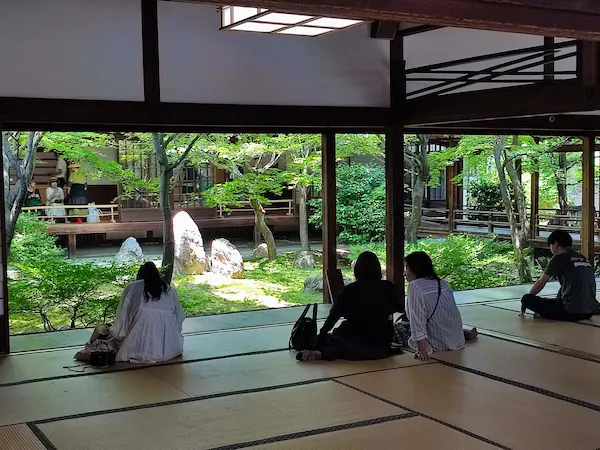
Kenninji Temple (建仁寺)
In 1202, Minamoto no Yoriie, the second shogun of the Kamakura period, donated the temple area and founded the Kenninji Temple. Eisai designed the temple, modeling it after Hyakjōzan in the Song Dynasty. In 1259, a Zen monk from the Song Dynasty, Rankei Doryu, founder of Kenchoji Temple, entered the temple, and it became a…
-

Torin-in Temple (Myoshinji) 東林院
You can enjoy Shojin Ryori (zen vegetarian meals) in Torin-in Temple. Torin-in Temple is one of the sub-temples of Myoshinji Temple and is located on the east side of the temple grounds. The temple is usually closed to the public, but you can visit there during some seasonal festivals and on lunch events. The main…
-
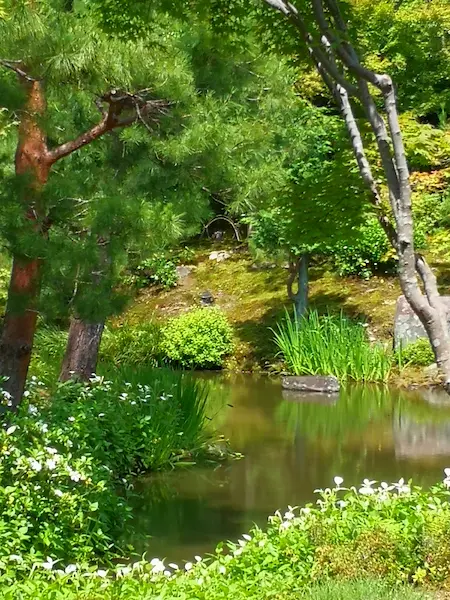
Toji-in Temple (等持院)
History Toji-in Temple is a temple of the Tenryuji school of the Rinzai sect of Zen Buddhism. Although the temple has a long history and is close to Kinkakuji Temple and Ryoanji Temple, it is quiet tourists rarely visit here. Ashikaga Takauji, the first shogun of the Muromachi Shogunate, invited the monk Muso Kokushi and…
-
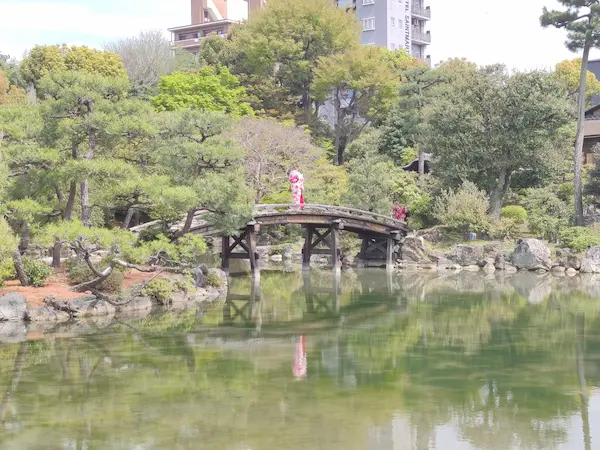
Shoseien Garden (渉成園)
Shoseien Garden is a garden managed by Higashi Honganji Temple, where the third shogun, Tokugawa Iemitsu, donated the land in 1641 and created a garden with the style of Ishikawa Jozan. In 1936, the garden was designated a national place of scenic beauty. Official WEB site This garden creates an oasis in a busy district…
-
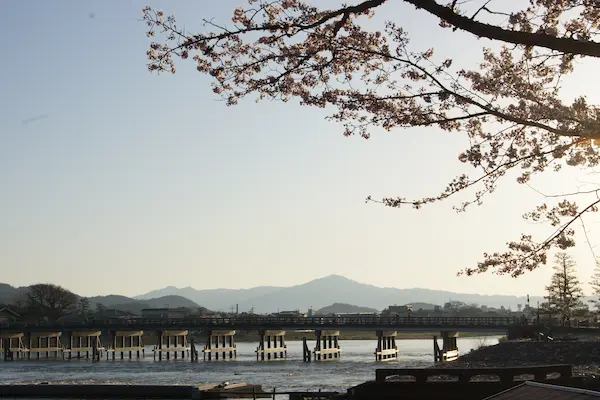
Togetsukyo Bridge (渡月橋)
The Togetsukyo Bridge spans the Katsura River. It’s always crowded with tourists, but the view from here is spectacular. No wonder so many travelers come here. It is said that the bridge was first built by the monk Dosho during the Shōwa period (834-848), and that Ryōi Suminokura built the bridge in its present location…
-
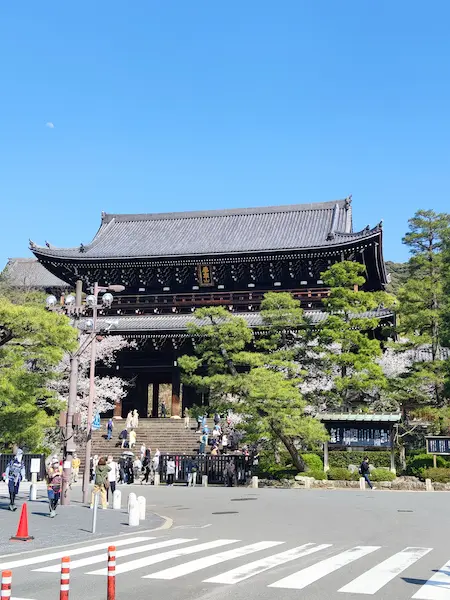
Chion-in Temple (知恩院)
Chion-in Temple is the head temple of the Jodo sect. Chion-in Temple is where Honen, the founder of the Jodo sect, established a hermitage in 1175 and began to propagate Nembutsu (the recitation of the Nembutsu prayer). In the Edo period, Tokugawa Ieyasu, Hidetada, and Iemitsu built the present main hall, Sanmon gate, and other…
-

Yasaka Shrine (八坂神社)
About the Shrine Yasaka Shrine is an old shrine that has been here since before the capital moved to Heian-kyo (present Kyoto) in 794. And it has been popularly called “Gion-san”. The main deity, Susanoo-no-Mikoto, is believed to be the god of purification from all kinds of misfortune, and many gods are enshrined in numerous…
-
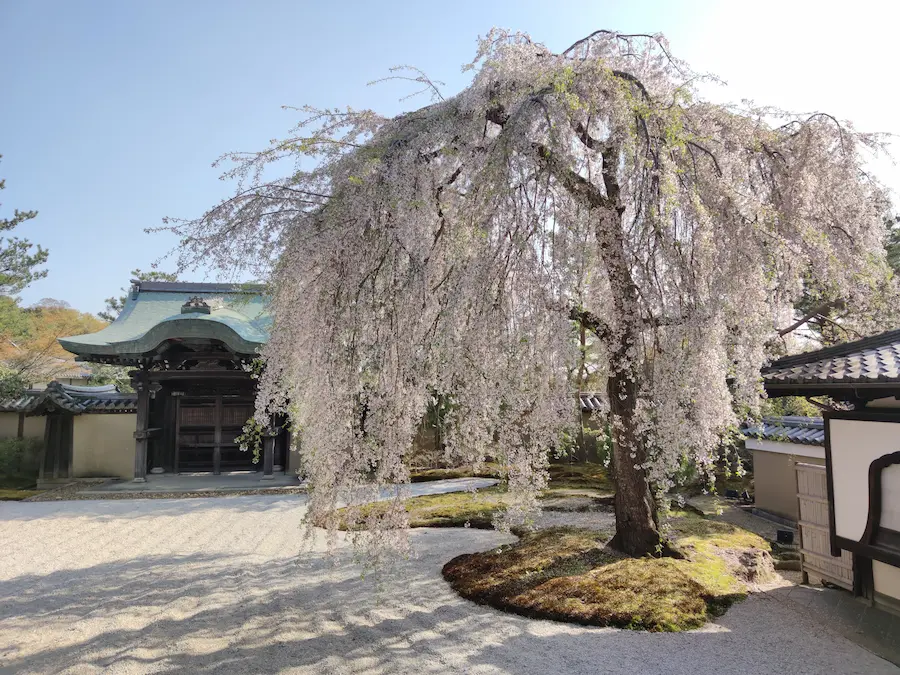
Kodaiji Temple (高台寺)
Kodaiji Temple is located between the famous Kiyomizu-dera Temple and Yasaka-Jinja Shrine, up the mountain side from a narrow path commonly called Nene-no-michi. Temple’s official WEB site History of Kodaiji Temple Hideyoshi Toyotomi’s wife, Nene (Kita-no-Mandokoro) founded the Kodaiji Temple in 1606 as a place of mourning for Hideyoshi. There are many important cultural assets…
-

Entoku-in Temple (圓徳院)
Entoku-in Temple is a temple of the Kenninji School of Rinzai Zen Buddhism located in Higashiyama-ku, Kyoto. It is a sub-temple of Kodaiji Temple. It is known as the place where Hideyoshi Toyotomi’s wife, Nene, made her own residence in her later years and is also said to be the place of her demise, according…
-
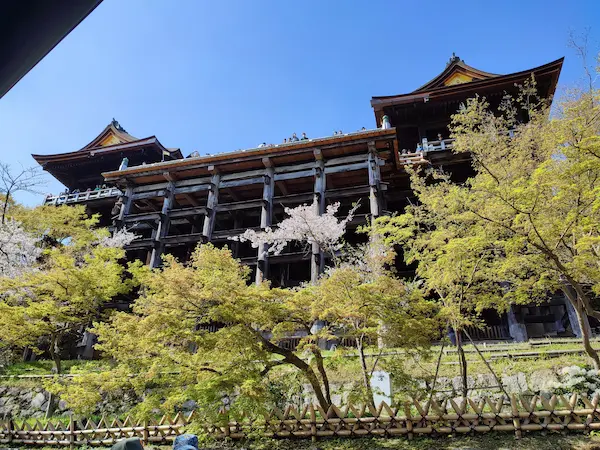
Kiyomizu-dera Temple (清水寺)
Kiyomizu Temple, one of the World Heritage Sites and famous for the stage of Kiyomizu. The precincts of Kiyomizu-Dera Temple are located on the eastern side of Kyoto, halfway up Mount Otowa. Kiyomizu-Dera Temple has more than 30 pagodas and buildings, including national treasures and important cultural properties. Since its foundation, fire destroyed the temple…
-

Rokuharamitsuji Temple (六波羅蜜寺)
History of Rokuharamitsuji Temple Kuya Shonin, a son of the then Emperor Daigo, founded .Rokuharamitsuji Temple in 951. Kuya Shonin felt life in all things, praised Namu Amidabutsu, and chanted the Nembutsu with joy and dancing, rejoicing in the fact that today exists. Rokuharamitsuji Temple used to have a vast temple complex. And the mansions…
-
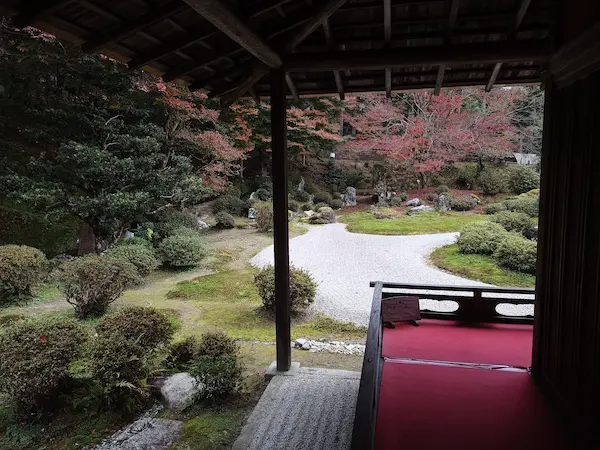
Manshu-in Temple (曼殊院)
Manshu-in is a monzeki temple located in Ichijodani. From Enkoji Temple, you will pass through a residential area and walk along a path called Manshuin-do (Manshuin Road), which leads to a wooded area. After passing through there, you will see Manshuin Temple. Manshu-in was originally opened by Saicho as a dojo on Mt. Hiei. It…
-
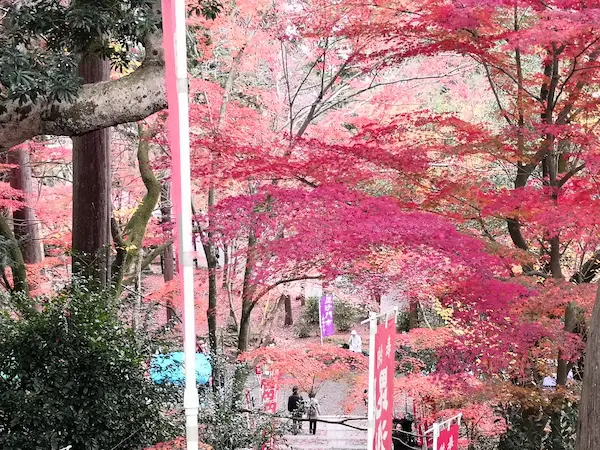
Bishamondo Monzeki (毘沙門堂門跡)
History of Bishamondo in Yamashina Bishamondo monzeki, in Yamashina, is a temple of the Tendai sect of Buddhism. It dates back to 703 when the Emperor Monmu requested the construction. When it was initially established, it lay north of the Kyoto Imperial Palace. It bore the name “Izumo-ji Temple.” After war and burning down, the…
-
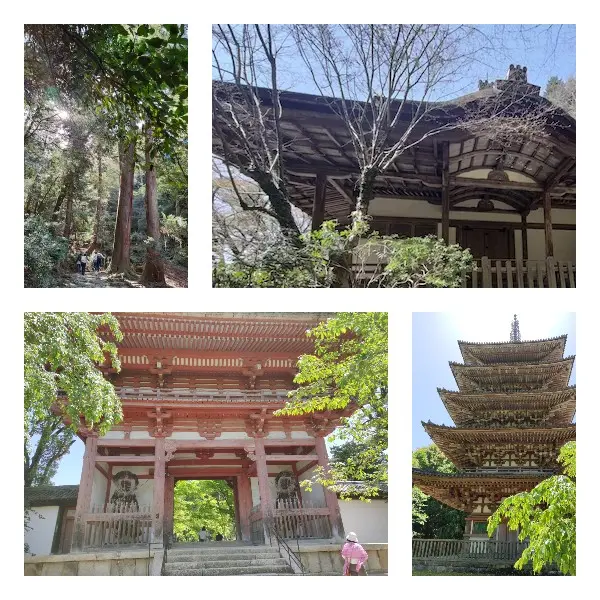
Daigoji Temple hike Shimo- and Kami-Daigo Hiking
Daigoji Temple hike visits two areas: the upper part of the temple (Kami-Daigo) and the flat area at the western foot where Daigoji Temple is. If you climb slowly and include a visit to Daigoji Temple and other temples, the trip will take a full day. The hike up to the top of Kami-Daigo mountain…
-
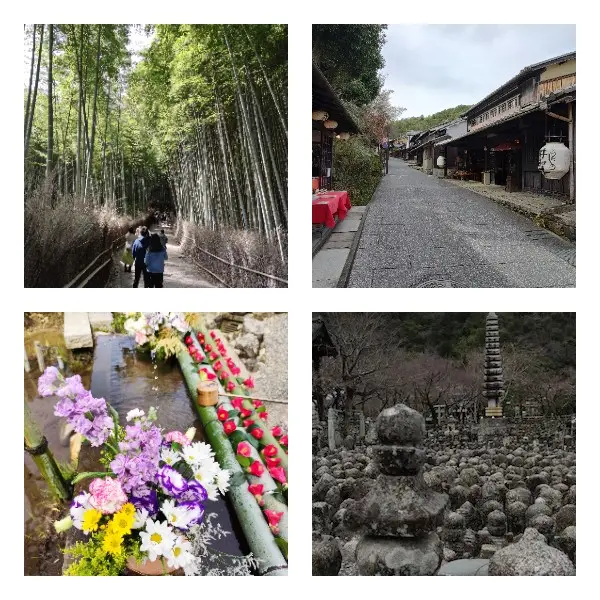
Arashiyama to Saga walking tour
The tour will start around Togetsukyo bridge or Arashiyama Station of Keifuku Electric Railway, which is crowded with tourists, and pass Tenryuji Temple, Bamboo Grove Path, Jojakkoji Temple, Nison-in Temple, and Gioji Temple before reaching Adashino Nenbutsuji Temple in Toriimoto. On the way back to the Station, the tour will stop at Seiryoji Temple. The…
-
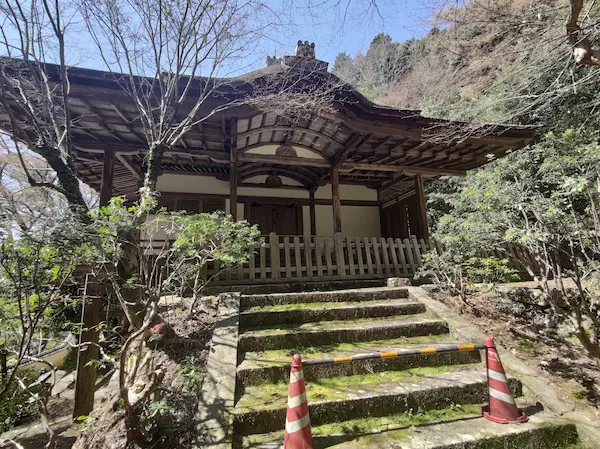
Kami-Daigo (上醍醐), Upper complex of Daigoji Temple
Daigoji Temple is divided into two parts: the upper part of the temple and the flat area. The flat area is well-known Daigoji Temple. And the upper part is called Kami-Daigo, where the older complex of Daigoji Temple exists. This is the birthplace of Daigoji Temple since 874. Daigo water, which has been gushing since…
-
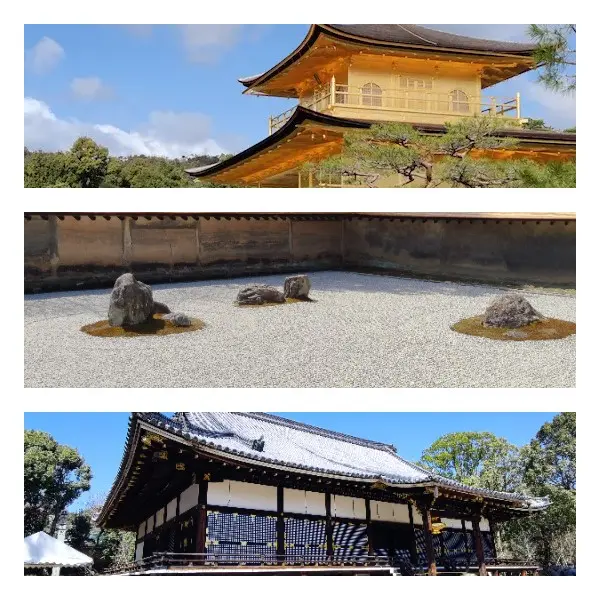
Kinukake-no-michi walking
“Kinukake-no-michi” is a 2.5 km long sightseeing road that goes from Kinkakuji Temple to Ninnaji Temple via Ryoanji Temple. It takes about 18 minutes on foot from Kinkakuji Temple to Ryoanji Temple. From Ryoanji to Ninnaji is about 11 minutes on foot. The lush green route through the foot of Mt. Kinugasa is ideal for strolling…
-

Heian Jingu Shrine (平安神宮)
Heian Jingu Shrine was built in 1895 to commemorate the 1,100th anniversary of the transfer of the capital to Heian-kyo and to worship Emperor Kanmu, the creator of the Heian-kyo Capital. The shrine was not built in the Heian period. At the time, Kyoto was in a state of decline. The city was devastated by…
-
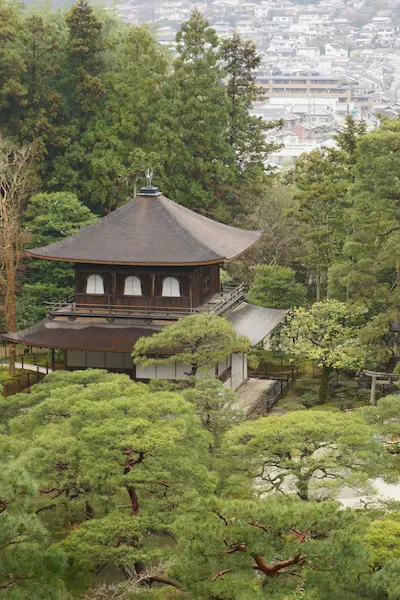
Ginkakuji Temple (銀閣寺)
The official name of Ginkakuji Temple is Higashiyama Jishoji Temple, one of the sub-temples of Shokokuji Temple. Ginkakuji is based on Higashiyama-den, a villa built by Ashikaga Yoshimasa, the 8th Shogun of the Muromachi Shogunate. It became a temple after Yoshimasa’s death. Shokokuji Temple Official WEB site (English page) The common name “Ginkaku” (silver pavilion)…
-

Honen-in Temple (法然院)
Leaving the Philosopher’s Path before reaching Ginkakuji Temple, visitors will find Honen-in Temple on the east side of the mountain. This temple was founded in 1680, in the early Edo period. The origin of the temple is as follows. Emperor Go-Toba was the one who later caused the Jokyu Rebellion and was exiled to Oki.…
-
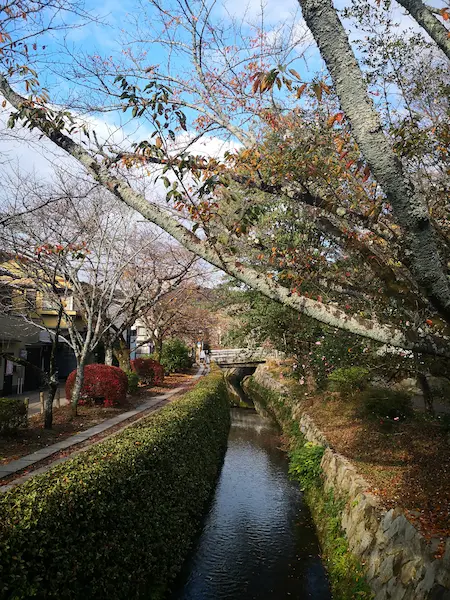
Philosopher’s Path (哲学の道)
Philosopher’s Path is a beautiful 2-kilometer walkway that connects Ginkakuji Temple and Nanzenji Temple. The name “Philosopher’s Path is not official one. The name is familiar because the surrounding scenery and serene atmosphere make it an ideal place for philosophical contemplation; it is named after the early 20th century philosopher, Kitaro Nishida, a professor at…
-
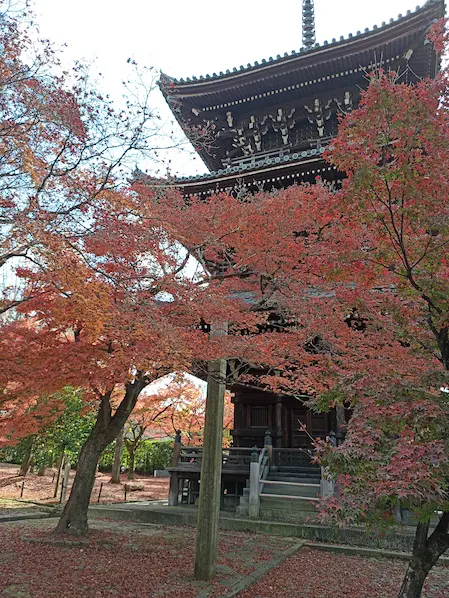
Shinnyo-do (真如堂)
When you pass through the north gate of Konkai Komyoji Temple, Shinnyo-do Hall is immediately ahead of you. Its official name is Shinsho-Gokurakuji Temple. It is a temple of the Tendai sect, with Hieizan Enryakuji as its head temple. And it was founded in 984. Its common name, Shinnyo-do, refers to the main hall. The…
-

Eishoin Temple (栄摂院)
Nestled along the enchanting path from Konkai-komyoji Temple to Shinnyo-do Hall, Eishoin Temple beckons with its vivid vermilion-lacquered entrance gate. A hidden gem among the sub-temples of Konkai Komyoji, Eishoin was crafted in 1589 by Morikatsu Kimata, a loyal vassal of Tokugawa Ieyasu. What truly captivates visitors is the intimate autumnal spectacle of Eishoin’s garden,…
-
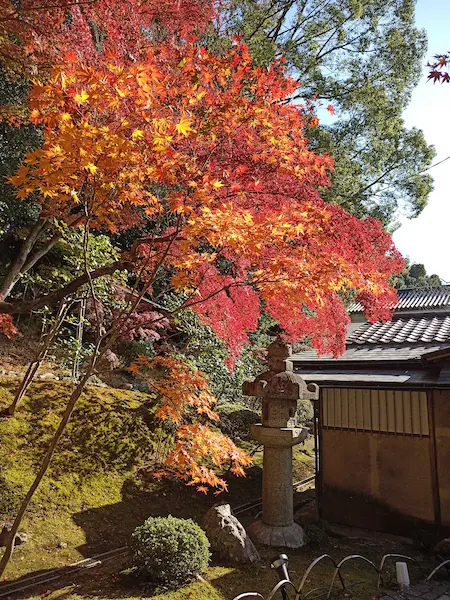
Konkai Komyoji Temple (金戒光明寺)
Konkai Komyoji Temple is one of the seven head temples of the Jodo sect of Buddhism. And it is said to have been built by Honen in 1175. At the end of the Edo period, this temple became the headquarters of the Aizu han (feudal domain). Aizu han was appointed as the guardian of Kyoto,…
-
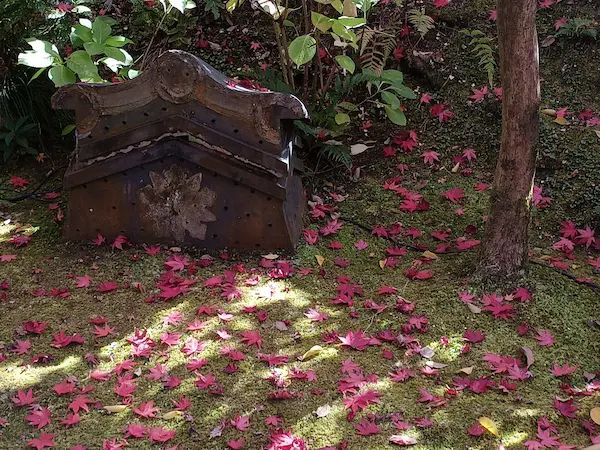
Eikando (永観堂)
Nestled near Nanzenji Temple, Eikando captivates with its Heian-era origins and the revered Looking-back Amidabutsu statue. A must-visit, especially in the enchanting autumn, the illuminated garden reveals Eikando’s timeless beauty. Explore the nearby Nanzenji Temple, famed for its vibrant fall foliage, ensuring an unforgettable Kyoto experience. Just a short distance from Nanzenji Temple, you find…
-
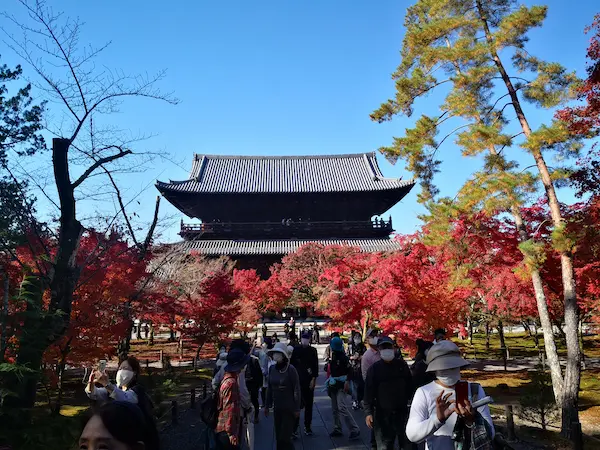
Nanzenji Temple (南禅寺)
Discover the timeless allure of Nanzenji Temple in Kyoto, founded in 1291 by Hōhō Kameyama. Renowned in the Zen sect, the temple’s vast Sanmon Gate, an important cultural property, impresses upon arrival. Ascend to its upper floor for panoramic views of Kyoto. Free entry to the temple grounds unveils captivating scenes—cherry blossoms in spring, green…
-
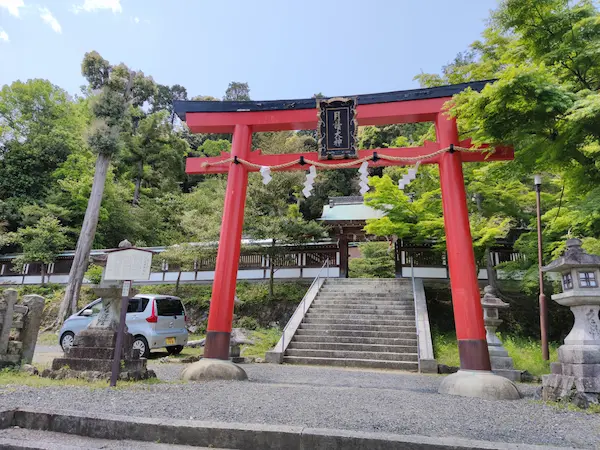
Tsukiyomi Jinja Shrine (月読神社)
From Matsuo-taisha Shrine, walk south along the edge of Mt. Matsuo for a while and you will find Tsukiyomi Jinja Shrine. This shrine is a regent of Matsuo-taisha Shrine, but it is an old shrine that appears in the Engi-shiki. It is said that the Iki Clan originally worshipped a maritime deity on the island…
-
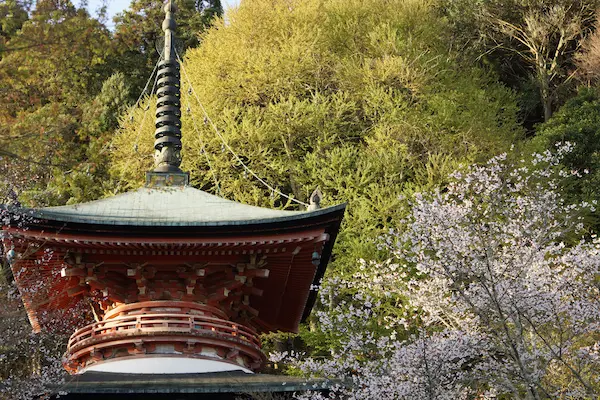
Horinji Temple (法輪寺)
A little south of the Togetsukyo Bridge is Horinji Temple. The Kuzunoi-gu Shrine, also associated with the Hata clan, seems to have existed in the Kofun period. And the temple is an ancient temple said to have been founded by Gyoki in 713. Kukai and Nichiren also trained at this temple. In the Heian period,…
-
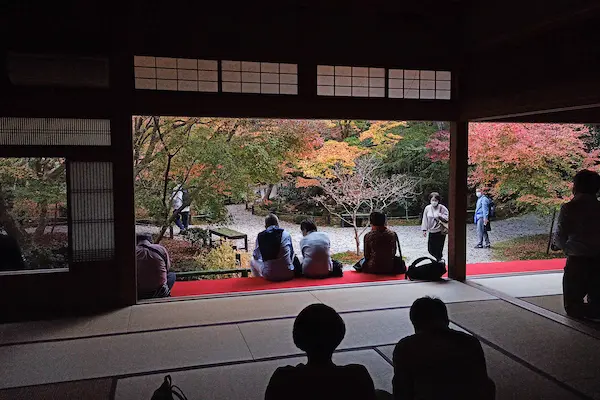
Enkoji Temple (圓光寺)
Enkoji Temple was originally opened by Tokugawa Ieyasu in 1601 as Enko-ji School in Fushimi, and was moved to its current location in Ichijodani in 1667. Cultural assets in the temple include a six-panel screen depicting bamboo groves by Maruyama Okyo (Important Cultural Property) and 50,000 wooden typefaces produced in the early modern period (Important…
-
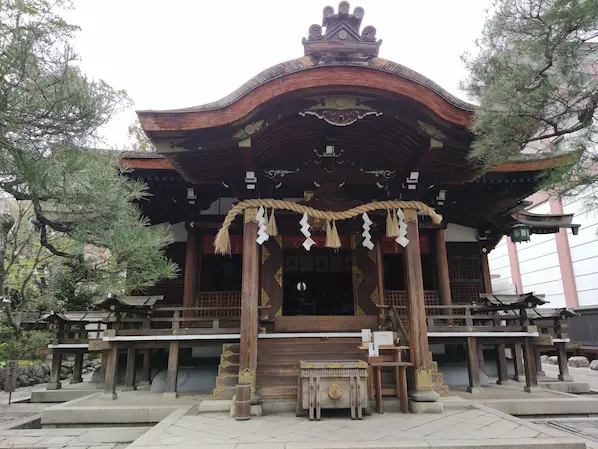
Daishogun Shrine and Yokai Street
Heading south from Kitano Tenmangu Shrine, you will find Ichijyo Yokai Street (Daishogun Shopping Street). It is said that the street was named “Yokai Street” based on a legend that yokai, or mourning gods, once marched along Ichijo Dori in this area. Except for a few yokai dolls placed here and there, the street is…
-
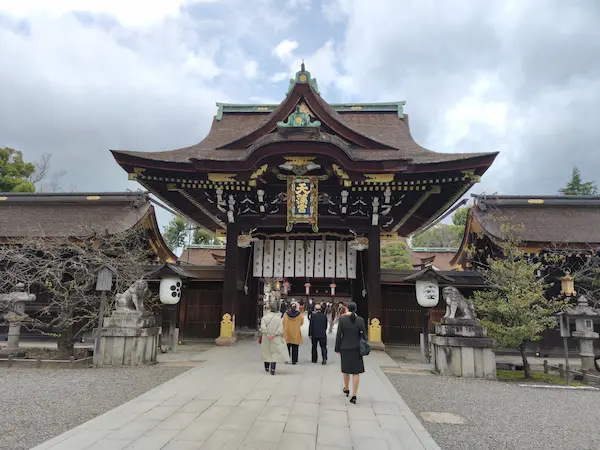
Kitano Tenmangu Shrine (北野天満宮)
Kitano Tenmangu Shrine can be entered through either the North Gate or the East Gate (Important Cultural Property). It is best to visit Kitano Tenmangu Shrine during the plum blossom season or the season of autumn leaves. Kitano Tenmangu Shrine, famous as Tenjin-san, is the general shrine of Tenmangu or Tenjin-sha throughout Japan. The shrine…
-
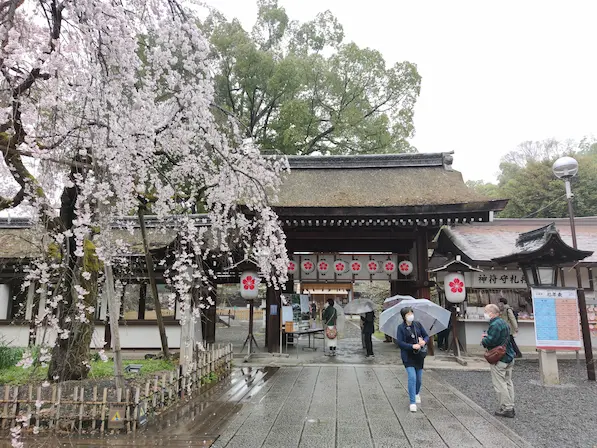
Hirano Jinja Shrine (平野神社)
Hirano Jinja Shrine is famous for its cherry blossoms. Admission to the garden with many cherry trees is charged during the flowering season. The area around the main shrine (an important cultural property) is free all year round. The origin of Hirano Shrine is old. It was originally built in the Heijo-kyo Capital (Nara). The…
-
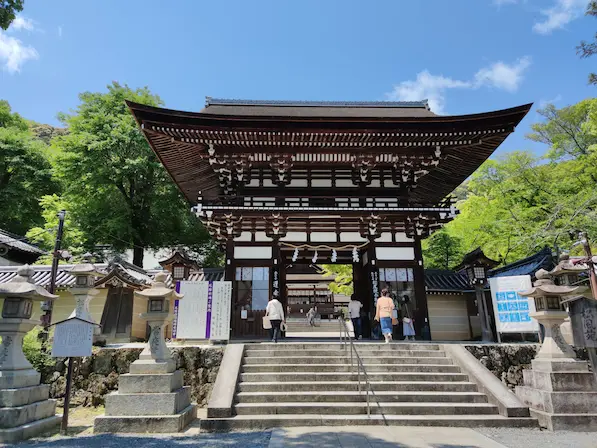
Matsuo Taisha Shrine (松尾大社)
Nestled in the scenic beauty of Mt. Matsuo, Matsuo Taisha Shrine is a historic gem with roots dating back to prehistoric times. Established in 701 by the Hata clan from ancient Korea, the shrine served as a sacred site. Emperor Kanmu later designated it for protecting the imperial residence in the Heian period. The shrine’s…
-
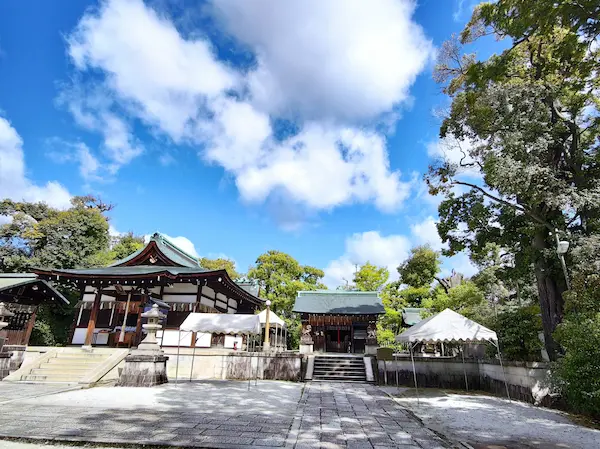
Wara Tenjin Shrine (藁天神)
From Kinkakuji Temple, go along Kinukake-no-michi a little toward Ryoanji Temple, and from there go south on Nishioji-dori. There you will find the Shikichi Shrine, commonly known as Wara Tenjin. The bus stop is also called “Waratenjin-mae,” so the common name is probably more popular among residents. Shrine’s official WEB site The deity of the…
-
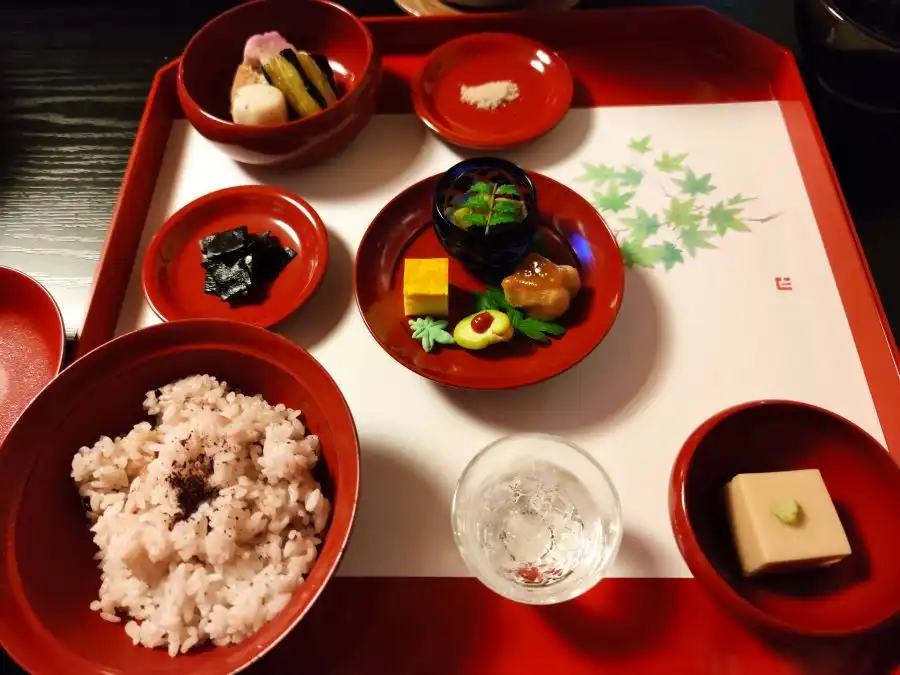
Chikusen Tofu Restaurant (竹仙)
Chikusen is a Kyoto cuisine restaurant located in the precincts of Seiryoji Temple. You can enjoy traditional Kyoto cuisine including Yudofu (tofu). The yudofu uses tofu from Morika, a famous Saga tofu store. Official WEB site Nearby spots from Chikusen Restaurant The standing statue of Shakyamuni Buddha in the main hall of Seiryoji Temple is…
-
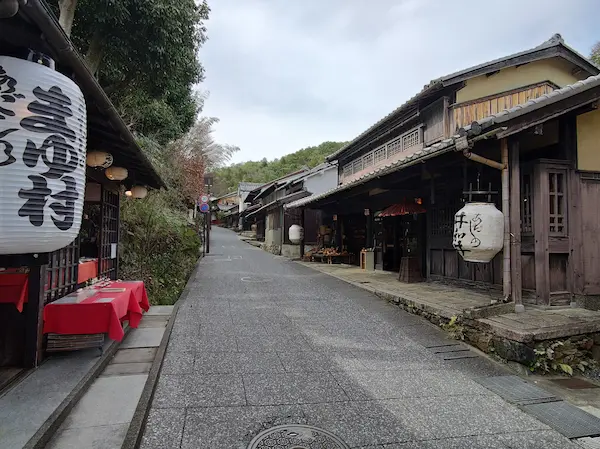
Saga Toriimoto Preserved Street
Saga Toriimoto Preserved Street is a must-visit for those seeking a traditional Japanese experience. Its historical significance and beauty make it a standout attraction in Kyoto. Sagano is northwest of downtown Kyoto, and Toriimoto is located at the far end of Sagano. The conservation area of the Saga Toriimoto is about 600 meters along Atago…
-
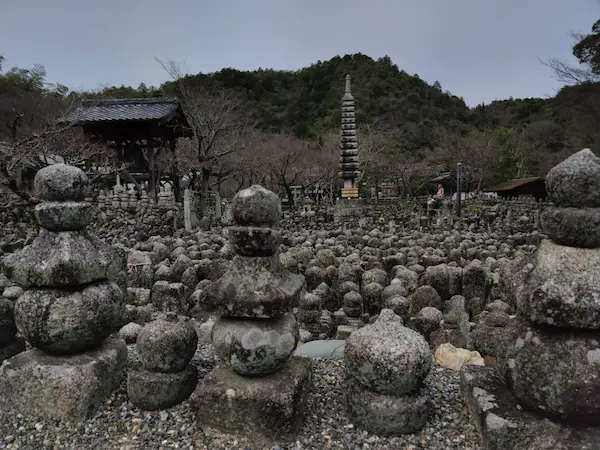
Adashino Nenbutsuji Temple (あだし野念仏寺)
Adashino Nenbutsuji Temple in Kyoto unveils a hauntingly beautiful secret—about 8,000 unmarked small Buddha statues, standing as silent witnesses in its cemetery. This sacred ground, established in 811 by Kukai, tells a tale of reverence and remembrance. The well-preserved bamboo grove behind the temple provides a serene backdrop, offering a perfect escape from the crowds.…
-

Nison-in Temple (二尊院)
Nison-in Temple is located north of Jojakkoji Temple. Passing through the main gate is a wide path called “Momiji no Baba”. Straight ahead is a wall. The history of Nison-in Temple dates back to the third Tendai Zashu (Ennin). He built the temple in the Jowa period (834-848) at the request of Emperor Saga. Temple’s…
-
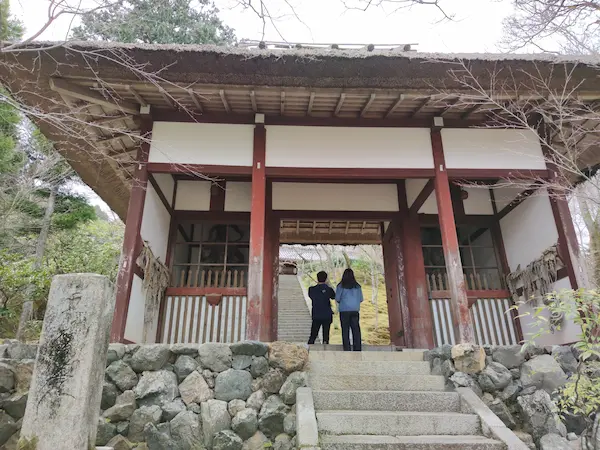
Jojakkoji Temple (常寂光寺)
Jojakkoji Temple is a Buddhist temple located in the scenic Saga district. It is on a forested Ogurayama mountainside, offering stunning views of the surrounding landscape. The temple is famous for its beautiful autumn foliage, making it a popular destination for tourists during the fall season. Jojakkoji Temple was founded in the 16th century by…
-
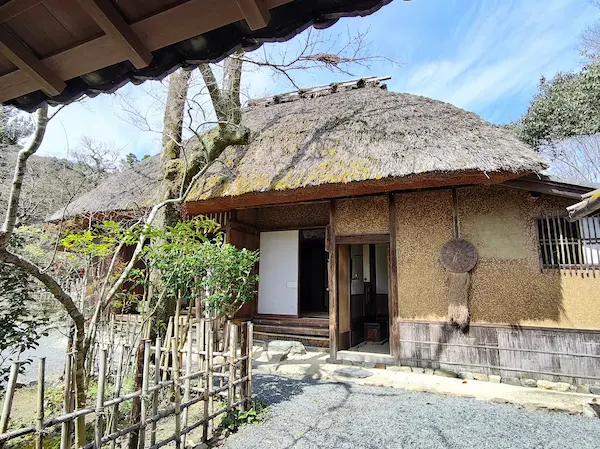
Rakushi-sha (落柿舎)
Once you cross the JR Sanin Line crossing from Nonomiya Jinja Shrine, the number of tourists becomes much smaller. After a short walk, you will come to Rakushi-sha (Fallen Persimmon Hermitage). It is a hermitage used as a villa by Mukai Kyorai, a disciple of Matsuo Basho. Basho once stayed here and wrote “Saga Nikki…
-
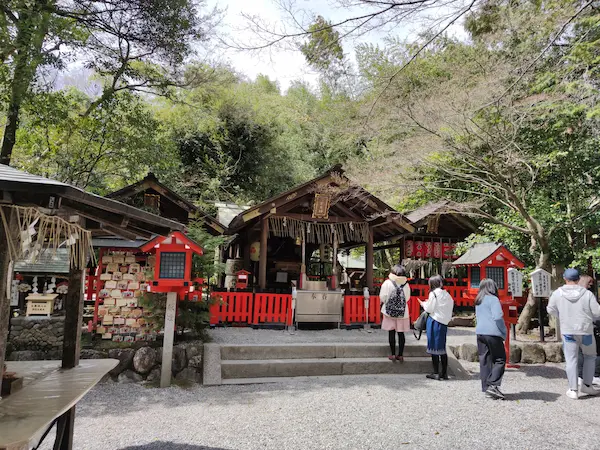
Nonomiya Jinja Shrine (野宮神社)
Nonomiya Jinja Shrine is located near the bamboo grove path in Arashiyama. The torii gate made of black wood (barked sawtooth oak) is unique. The Nonomiya was a place where the princesses who became Saiku during the Heian period purified themselves before leaving for Ise, and the building was rebuilt for each successive emperor. In…
-
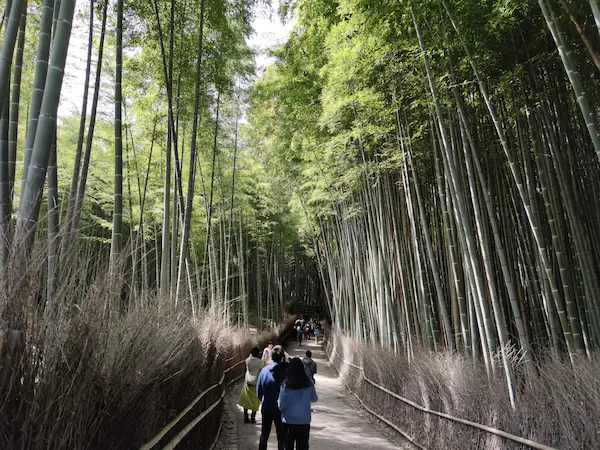
Arashiyama Bamboo Grove (嵐山竹林の小径)
Walking through the Tenryuji garden and out the north gate is the famous Arashiyama Bamboo Grove path (Bamboo Walkway). It is a shorter distance than you might imagine, but it is beautiful, lined with tall bamboo. Kyoto City Official Travel Guide Arashiyama Bamboo Grove is always crowded with tourists, making it difficult to get good…
-

Tenryuji Temple (天龍寺), Arashiyama
Tenryuji Temple in Arashiyama is one of the World Heritage Sites in Kyoto. It is the head temple of the Tenryuji School of Rinzai Zen Buddhism, founded by Ashikaga Takauji and Soseki Muso. The temple was built to mourn the loss of Emperor Godaigo, who was an enemy of Ashikaga Takauji, so to speak. Before…
-
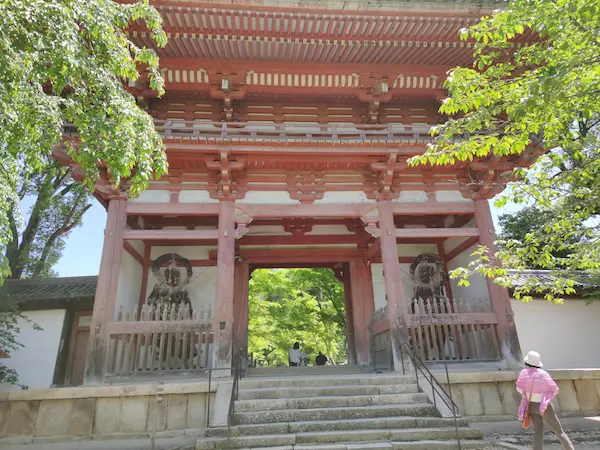
Daigoji Temple (醍醐寺)
Daigoji Temple is a World Heritage-designated temple and it is in Fushimi-ku, Kyoto. The temple is located a bit far from the central area of Kyoto, so despite its incredible temple, visitors are limited. It is the head temple of the Daigo school of the Shingon sect of Buddhism. The temple is famous for “Daigo…
-
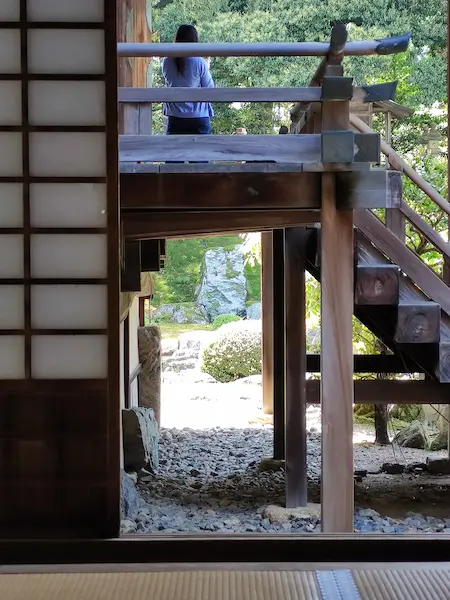
Sanboin Temple (三宝院), Daigoji Temple
It’s history Sanboin, the sub-temple, is entered from the side of the Daigoji Temple reception desk. Sanboin was built in 1115 and served as the main temple where the head priest of Daigoji resided. The present facility was developed after Toyotomi Hideyoshi’s cherry blossom viewing in Daigo in 1598. The garden was basically designed by…
-

Himukai Dai-jingu Shrine (日向大明神)
The Himukai Dai-jingu Shrine is a shrine known as a god of good luck, protection from bad luck, and match-making. It originated at the end of the 5th century, when a sacred site on the peak of Takachiho in Hyuga, Tsukushi, moved here. Later, Emperor Tenchi donated the Kanda, and named the mountain where the…
-
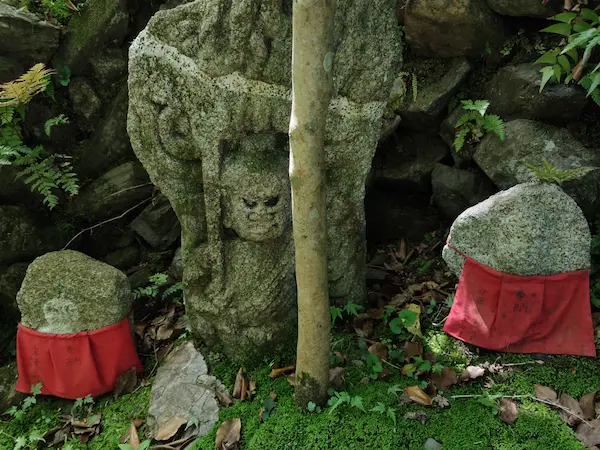
Anrakuji Temple (安楽寺)
Anrakuji Temple is a temple of the Jodo sect of Buddhism. In the Kamakura period (1185-1333) Two of Honen’s disciples, Juren and Anraku, built a hermitage as a place to practice Nembutsu (the recitation of the Lotus Sutra). Honen-in Temple near Ginkakuji Temple is said to have been built on the site of this hermitage.…
-
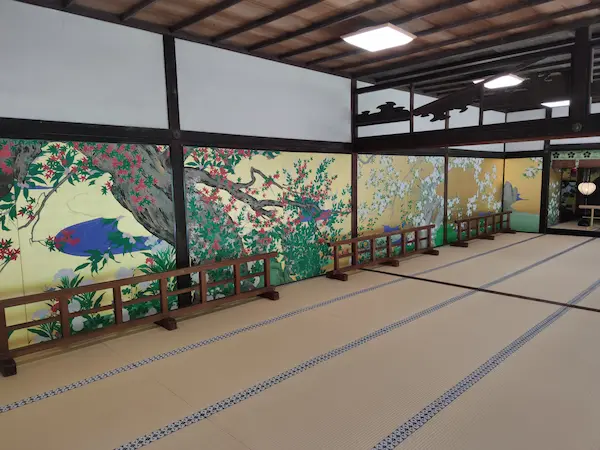
Chishakuin Temple (智積院)
Chishakuin Temple in Kyoto is the head temple of the Chizan School of Shingon Buddhism. Originally it was in Wakayama Prefecture as one of the sub-temples of the Daidenpoin Temple. Later it was rebuilt in Kyoto in 1598 after a war. Garden Chishakuin Temple has a famous pond garden facing the Daishoin (main drawing room).…
-

Shokokuji Temple (相国寺)
From the Imadegawa Gomon gate on the north side of the Kyoto Imperial Palace, walk north past the Doshisha University campus and you will soon come to Shokokuji Temple. Shokokuji Temple is the head temple of the Shokokuji School of the Rinzai Sect of Zen Buddhism. Temple’s official WEB site The temple was founded by…
-

Kyoto Imperial Palace (京都御所)
The Kyoto Imperial Palace is open to the public all year round. As a rule, the Palace is closed to visitors every Monday, during the year-end and New Year holidays, and when other events are held. Present-day Imperial Palace (Kyoto Gosho) is often thought of as the Daidairi (imperial residence) of Heian-kyo period. But this…
-

Nijo Castle (二条城)
Nijo Castle was built in 1603 by Tokugawa Ieyasu to guard the Kyoto Imperial Palace and provide lodging for shoguns traveling to Kyoto. 1611 saw Toyotomi Hideyori and Tokugawa Ieyasu meeting at Nijo Castle, and the third shogun, Tokugawa Iemitsu, undertook extensive renovations for Emperor Gomizuo’s visit to the castle, including the Ninomaru Palace, which…
-
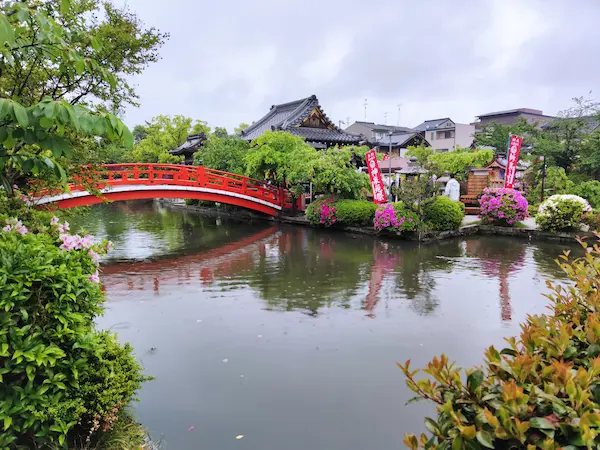
Shinsen-en (神泉苑)
Shinsen-en was a garden pond adjacent to the Daidairi (Imperial Palace) soon after the construction of the Heian-kyo Capital. But it was reduced in size during the Edo period (1603-1868) with the construction of Nijo Castle. Later it became a temple and Toji Temple manages it now. The following is an excerpt from the Shinsen-en…
-
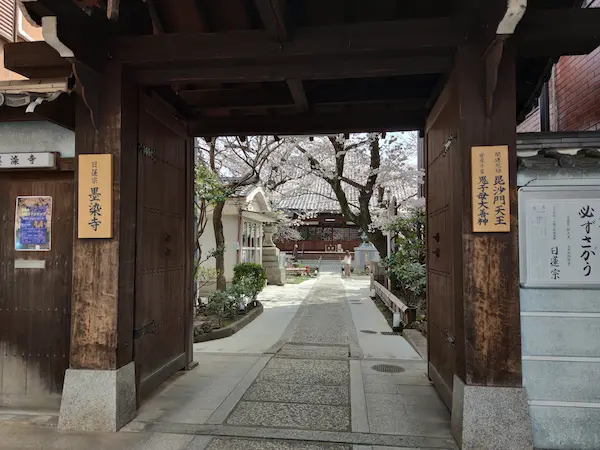
Bokusenji Temple (墨染寺)
Bokusenji Temple is also known as Sakura-dera Temple, and the name of the nearby train station is also Bokusen. In the Heian period (794-1185), a poet, Mineo Ueno, composed a poem at the death of Mototsune Fujiwara, saying, “Cherry blossoms in the fields of Fukakusa, if you have a heart, bloom only this year in…
-

Fujimori Jinja Shrine (藤森神社)
The legendary Empress Jingu might found the Fujimori Jinja Shrine. If it is so, the shrine had existed long before the capital moved to Heian-Kyo Capital in the year 794. There are beautiful wisteria tunnels and wisteria arches in the precincts of Fujimori Shrine. In spring, when the wisteria flowers are in full bloom, many…
-
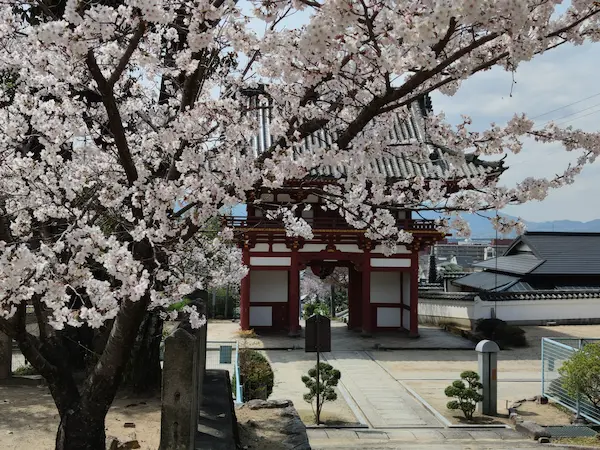
Hotoji Temple (宝塔寺)
Hotoji Temple is located south of Fushimi Inari Taisha Shrine and Sekihoji Temple. Few tourists visit here. According to temple legend, Fujiwara no Mototsune, the Kanpaku (highest ranking officer) of the time, founded the temple in the early Heian period (late 9th century). At that time, it was Gokurakuji temple of the Shingon sect of…
-

Toji Temple (東寺)
When the capital moved from Nara to Heian-kyo, the only temples built by Emperor Kanmu were Toji and Saiji. They were built symmetrically across the Rashomon Gate. Later, Saiji and Rashomon were burnt down. And only Toji remained. The division of Toji Temple the only one that retains the division of the temple when Heian-kyo…
-
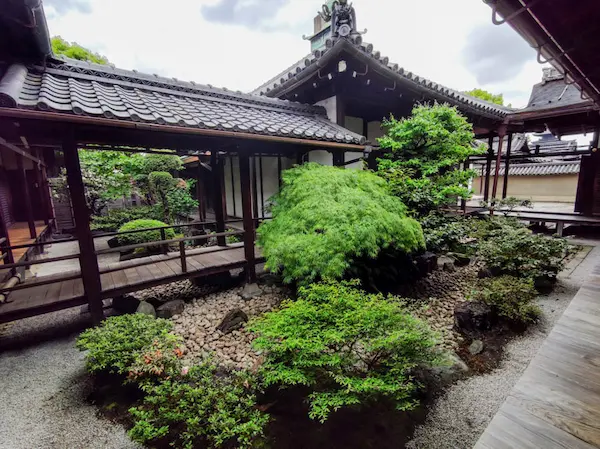
Kanchi-in Temple (Toji) 観智院
Kanchiin is one of the sub-temples of Toji Temple. It is just inside the Kita-Soumon gate (an important cultural property) of Toji Temple. The path from the Kitasomun is called Kushige-koji, which is said to be the very width of the road in ancient Heiankyo Capital. Kanchi-in is a Shingon school temple. The entrance is…
-
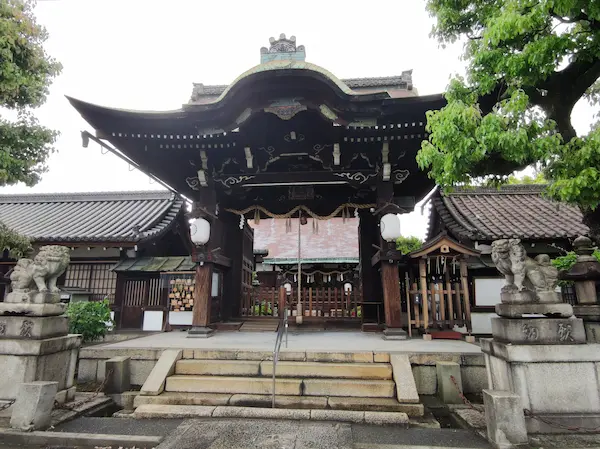
Rokusonnou Jinja Shrine (六尊王神社)
Discover the historical charm of Rokusonnou Jinja Shrine, the birthplace of the Seiwa Genji clan in Kyoto. Dedicated to Minamoto no Tsunemoto, the founder of the Seiwa Minamoto clan, the shrine holds a monument honoring his legacy. Rebuilt in 1707 by the Tokugawa family, explore the sacred grounds and delve into the rich history of…
-
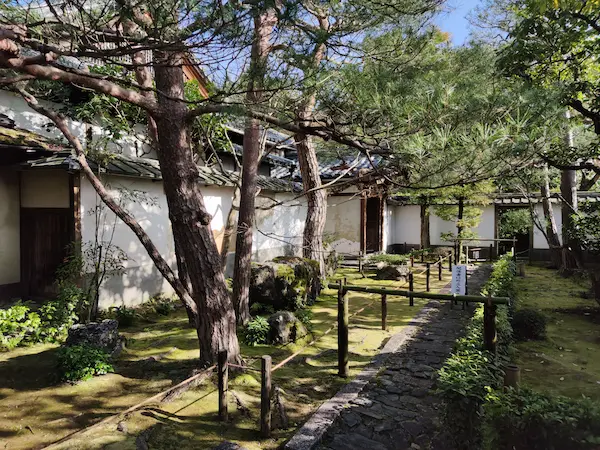
Keishun-in (Myoshinji) 桂春院
Keishun-in Temple is a sub-temple of Myoshinji Temple. Keishun-in Temple was founded in 1598 by Hidenori Tsuda, the second son of Nobutada Oda, the eldest son of Nobunaga Oda, as Gisei-in Temple. The sliding door paintings in the hojo are by Kano Sansetsu. The tea ceremony room, Kihakuan, used to be in the Nagahama Castle…
-
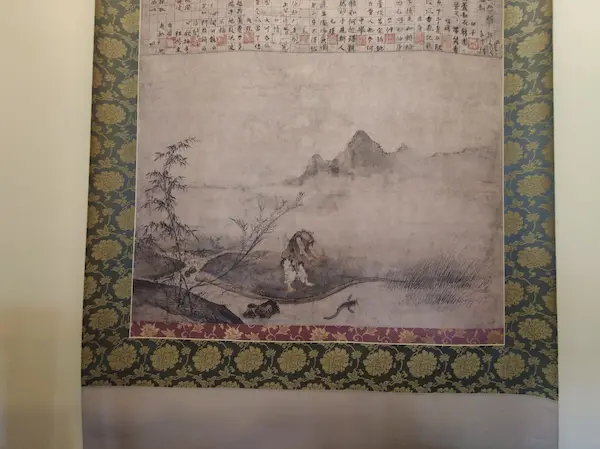
Taizo-in (Myoshinji) 退蔵院
One of the sub-temples near the Myoshinji Butsuden is Taizo-in Temple. This temple is home to the National Treasure “Hyonenzu,” the historic site and place of scenic beauty “Motonobu’s Garden,” a dry landscape garden, and the pond garden “Yokoen,” a garden with a circular garden. Unfortunately, Hyonenzu is not open to the public and you…
-
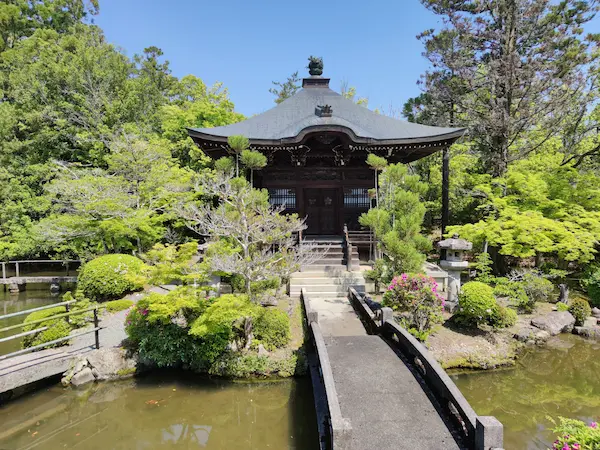
Seiryoji Temple (清凉寺)
Seiryoji Temple, also known as Saga Shakado in Sagano, is a cultural gem awaiting discovery by foreign tourists. Home to the revered Shakyamuni Buddha statue, a national treasure from India, the temple unveils this sacred artifact during special visits. The temple’s origins trace back to Seikaji, the model for Hikaru Genji’s “Saga no Godo” in…
-
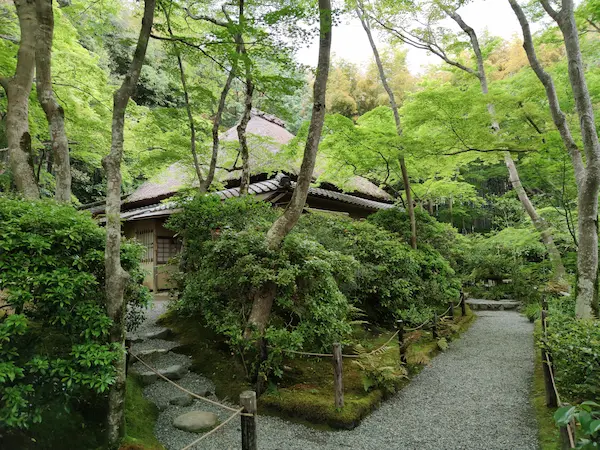
Gioji Temple (祇王寺)
According to the Tale of the Heike and the Genpei Seisuki, Gioji Temple is where Shirabyoshi (dancer) Gio became a nun at the then Saga Oujoin Temple along with his mother Toji and sister Kojo. Taira no Kiyomori once favored her but later treated her coldly. That’s why Gio decided to become a nun. The…
-

Yogen-in (養源院)
Yogen-in Temple is located near Sanjusangendo and Hojuji Temple. Yogen-in Temple has a blood ceiling and cedar door and sliding door paintings by Sotatsu Tawaraya that are a must-see. Unfortunately, you cannot take photos inside the temple. The following is a summarized quote from the history of the temple. Temple’s official WEB site Yododono, the…
-
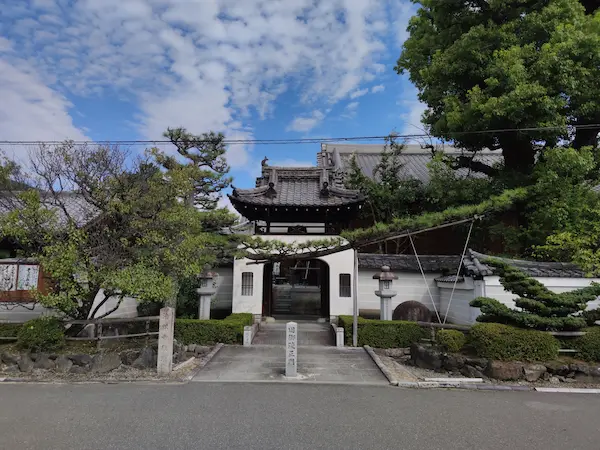
Hojuji Temple (法住寺)
Hojuji Temple is one of the temples located near Sanjusangendo. This temple was founded in 989 by Fujiwara no Tamemitsu. Later, Emperor Goshirakawa abdicated in 1158 and moved to Hojuji Temple in 1161, designating it as his residence. Temple’s official WEB site Despite its historical importance, this temple does not currently possess much in the…
-
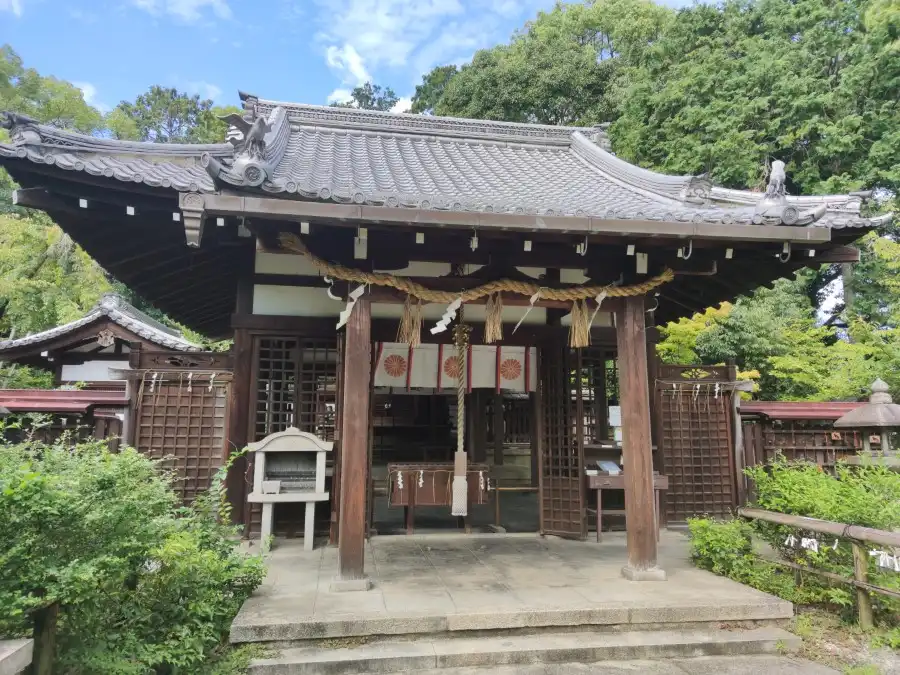
Imakumano Shrine (新熊野神社)
Imakumano Shrine is located south of Sanjusangendo and along Higashioji Dori. It is said that the shrine was built by Ex-Emperor Goshirakawa in 1160. Emperor Goshirakawa abdicated in 1158, and his residence at that time was Hojuji Temple, which is now located to the east of Sanjusangendo. The Ima-Kumano Shrine was built as a guardian…
-
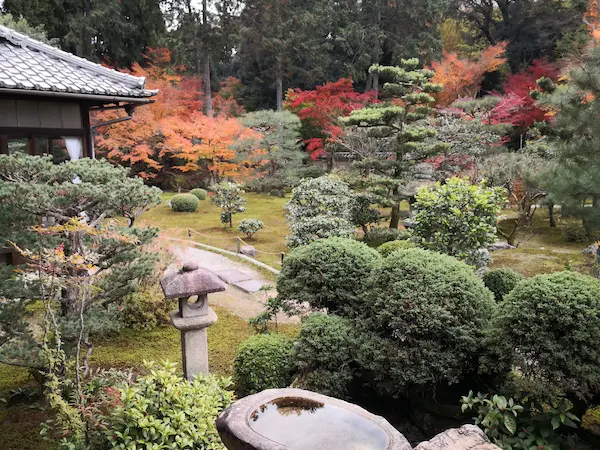
Sokushu-in Temple (即宗院)
Nestled within the embrace of Kyoto, Sokushu-in, a sub-temple of Tofukuji, boasts a storied history dating back to 1387. Originally built in memory of Ujihisa Shimazu, it was resurrected by Iehisa Shimazu in 1613 after a fire in 1569. A testament to resilience, the temple features a gate from its reconstruction. The Sokushu-in Garden, once…
-
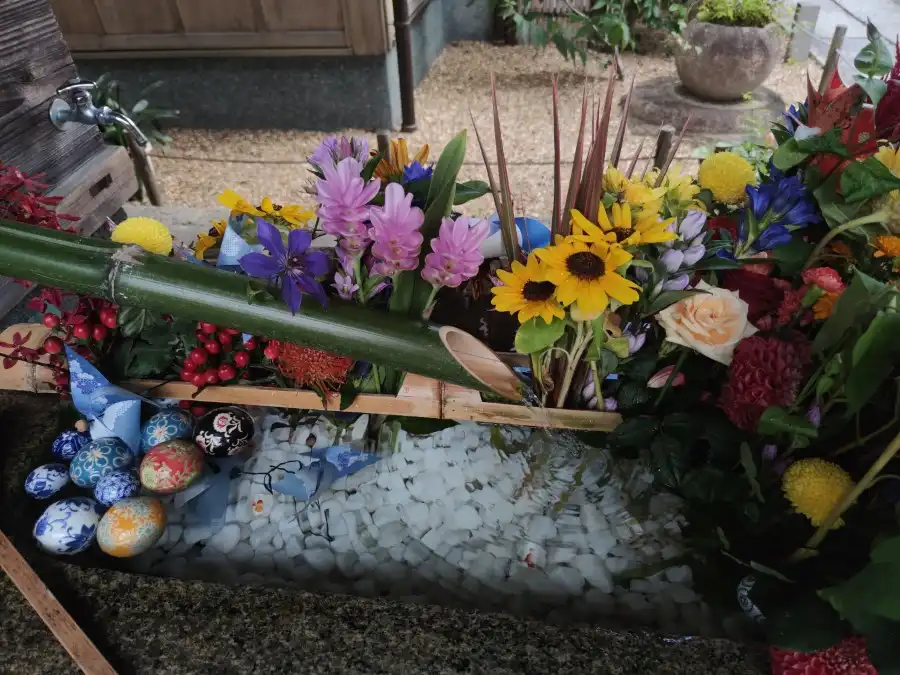
Shorinji Temple Bishamon-do (毘沙門堂 勝林寺)
Bishamon-do Shorinji Temple is also one of the sub-temples of Tofukuji Temple. Bishamonten, the guardian of Tofukuji Temple, is enshrined here. The Bishamonten statue is open to the public only during special openings in spring and fall, and by group application. Zazen experience You can experience zazen in this temple. Zazen is a form of…
-

Tofukuji Temple (東福寺)
Tofukuji Temple is the head temple of the Tofukuji School of the Rinzai Sect of Zen Buddhism, and was completed in 1255. The Sanmon Gate is a National Treasure, and there are many other important cultural properties including the Zendo Hall. Tofukuji official WEB site The Sanmon Gate is the oldest and largest of the…
-
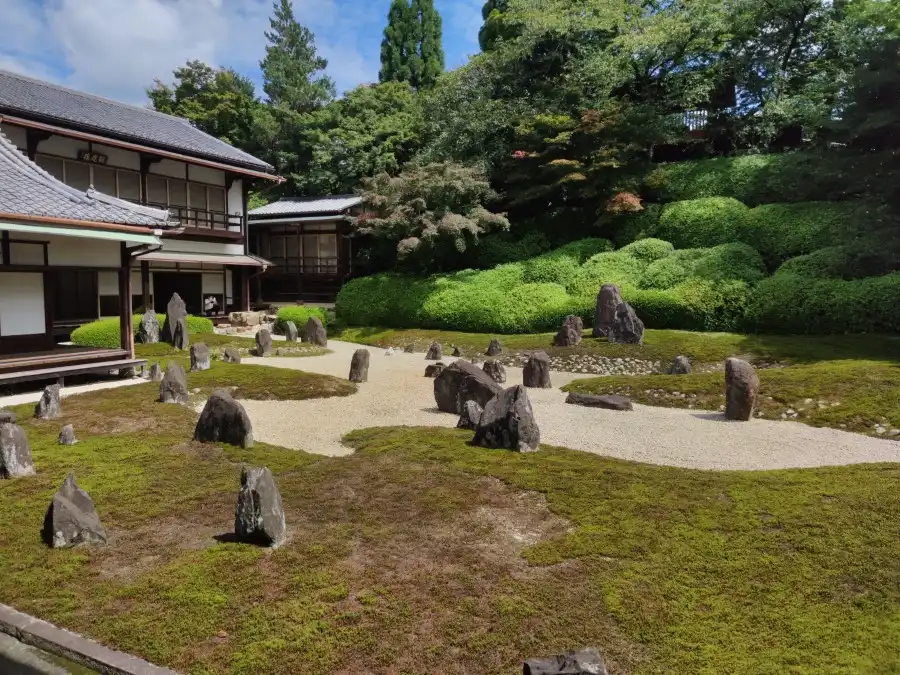
Komyo-in Temple (光明院)
North of Nanmei-in is Komyo-in, also a sub-temple of Tofukuji Temple. Komyo-in was founded in 1391, at the beginning of the Muromachi Period. Temple’s official WEB site Komyo-in Gardens Visitors can see the “Hashin-tei” garden by Mirei Shigemori, a famous Showa-era gardener. He created this garden together with the Hojo gardens of Tofukuji Temple in…
-
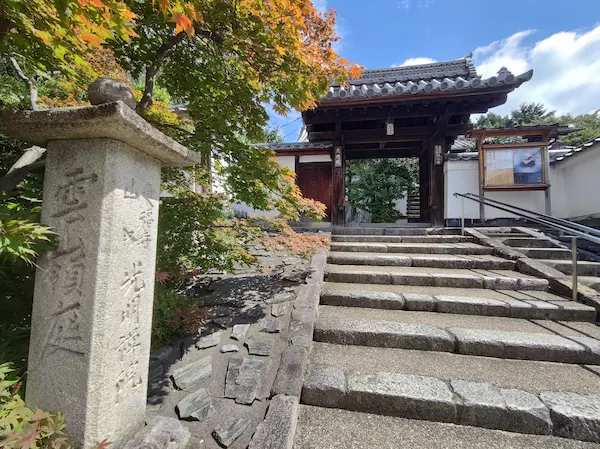
Nanmei-in (南明院)
Nanmei-in Temple is one of the sub-temples of Tofukuji Temple and is located at the southernmost point of the Tofukuji site. In the temple’s precinct, there is the grave of Princess Asahi or Asahi Hime. She was a sister of Toyotomi Hideyoshi and regular wife of Tokugawa Ieyasu. Of course, it must have been a…
-
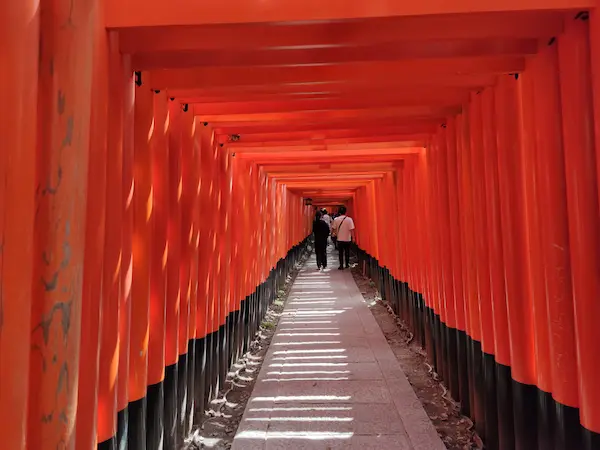
Fushimi Inari Taisha Shrine (伏見稲荷大社)
Fushimi Inari Taisha is one of the most famous shrines in Japan, located in Fushimi-ku, Kyoto. Its distinctive red corridor of torii gates attracts many tourists from Japan and abroad. (Shrine’s official WEB site) The Inari-daimyojin is the deity of the main shrine, and people pray for prosperous business, traffic safety, and academic success. In…
-

Sekihoji Temple (石峰寺) Temple associated with Ito Jakuchu
Sekihoji Temple is a temple of the Őbaku school of Zen Buddhism. The temple has distinctive Chinese-style gates, which is a characteristic of Obaku School. It is the place where Ito Jakuchu built a hamplet and spent the last years of his life. You can find his cemetery in the temple ground (there is his…
-
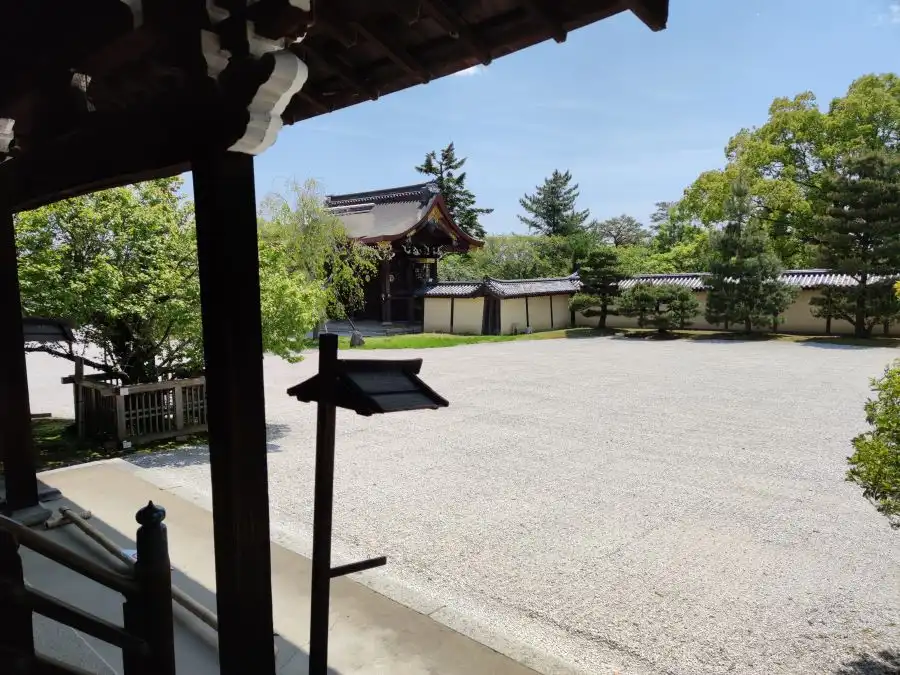
Daikakuji Temple (大覚寺)
Experience the serenity of Daikakuji Temple, the majestic head temple of the Daikakuji School of Shingon Buddhism in Kyoto. Originally Emperor Saga’s detached palace, the temple boasts a unique shinden-style architecture dating back to the Heian period. Explore the hall area, including the exquisite shinden and shoshinden, relics from the Edo period. Wander through the…
-
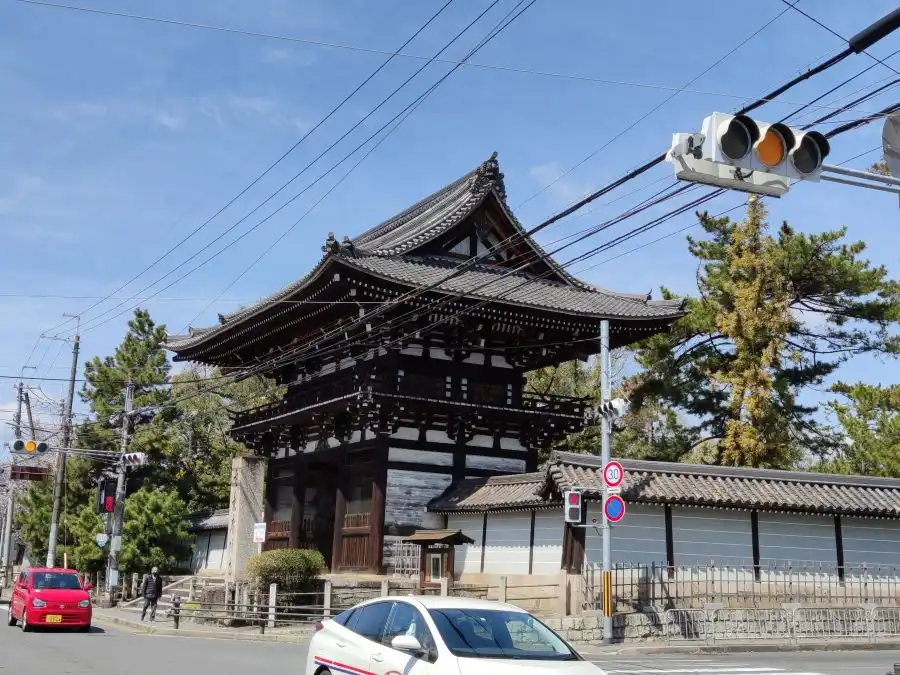
Koryuji Temple (広隆寺)
Koryuji Temple is a Shingon Buddhist temple in Uzumasa. The main deity is Prince Shotoku. It was the clan temple of the Hata clan, a migrant tribe, and is the oldest temple in Kyoto that existed before the creation of capital Heian-kyo. The temple hosts a well-known treasure, a statue of Maitreya Bosatsu (Maitreya Bodhisattva)…
-

Ryoanji Temple (龍安寺)
Founded in 1450 by Katsumoto Hosokawa, Ryoanji Temple in Kyoto captivates with its iconic karesansui (dry landscape) rock garden, created around 1499. Comprising 15 precisely arranged rocks in white gravel, the garden embodies Zen Buddhism principles—simplicity, harmony, and abstraction. A single rock remains hidden, sparking contemplation. The tranquil setting, free from trees and plants, fosters…
-
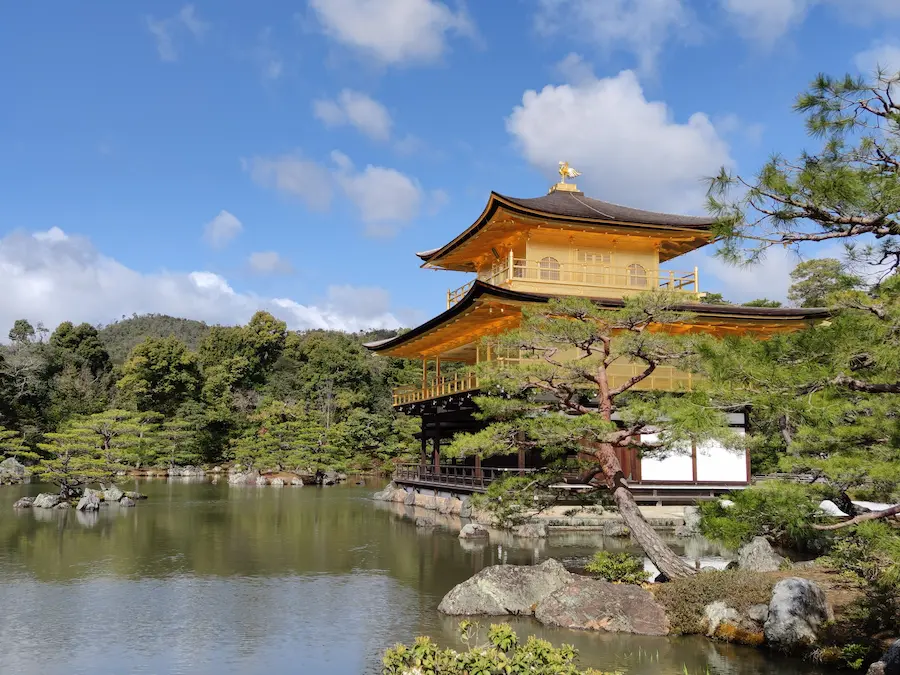
Kinkaku-ji Golden Pagoda (金閣寺)
History Kinkaku-ji Temple, also known as the Golden Pavilion or Pagoda, is one of the most iconic and visited landmarks in Kyoto, famous for its stunning golden exterior and picturesque surroundings. (Kinkakuji Official WEB site) Originally built in the late 14th century as a retirement villa for the 3rd shogun Ashikaga Yoshimitsu, Kinkakuji later transformed…
-
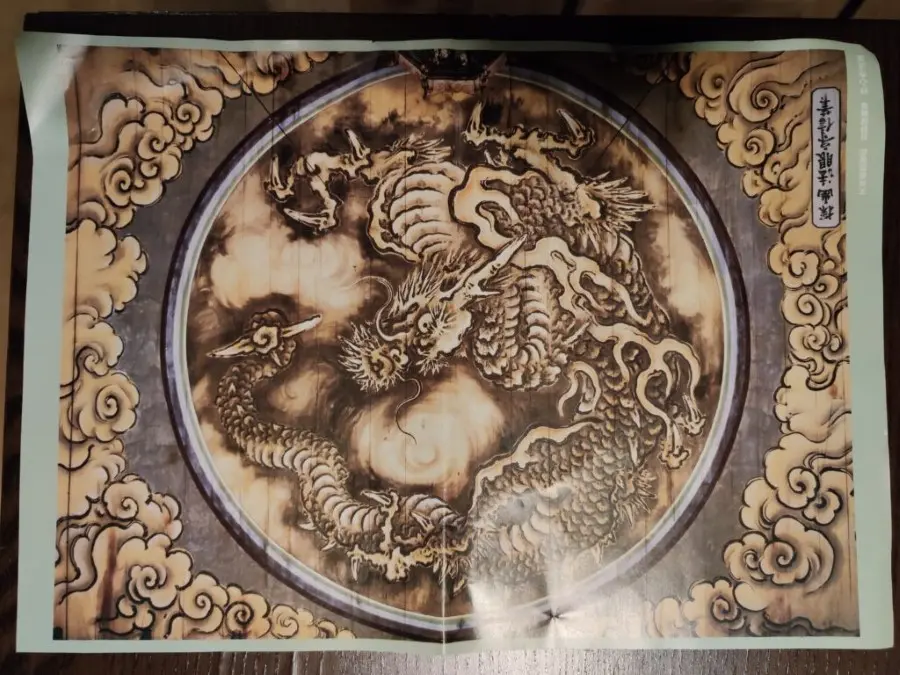
Myoshinji Temple (妙心寺)
Myoshinji Temple is a renowned Zen Buddhist temple located in the northwest part of Kyoto. It is the largest temple complex in the city of Kyoto and serves as the headquarters of the Myoshinji school of the Rinzai sect of Zen Buddhism. Founded in 1337 during the Kamakura period, Myoshinji Temple has a long and…
-
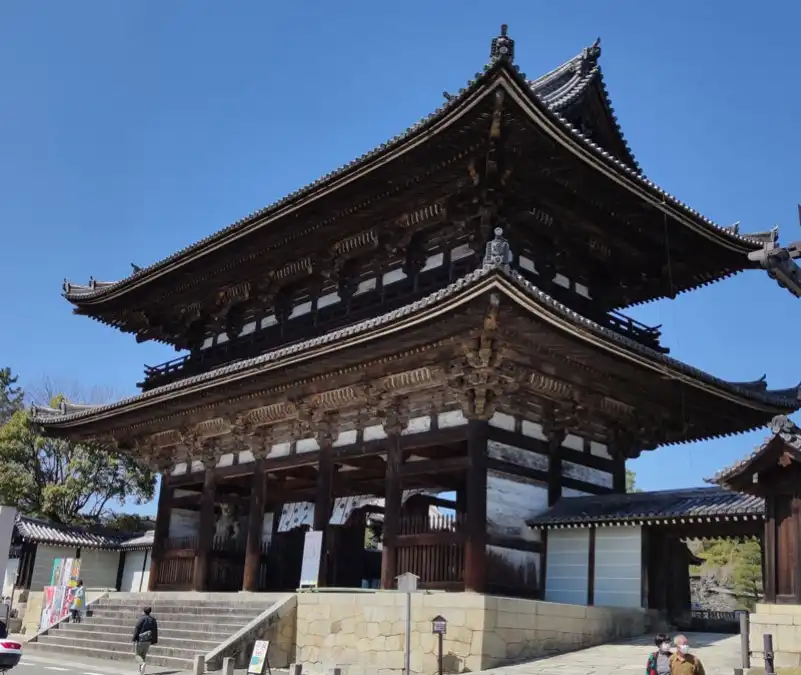
Ninnaji Temple (仁和寺)
Ninnaji Temple, a UNESCO World Heritage Site in Kyoto, offers a journey through time. Founded in 888, this Shingon Buddhist temple showcases exquisite architecture and cultural treasures. Explore the historic Nio-mon Gate, the revered Kondo (main hall), and the rare five-story pagoda. Delve into the serene gardens, including the Omuro Cherry Blossom Garden. Immerse yourself…
-
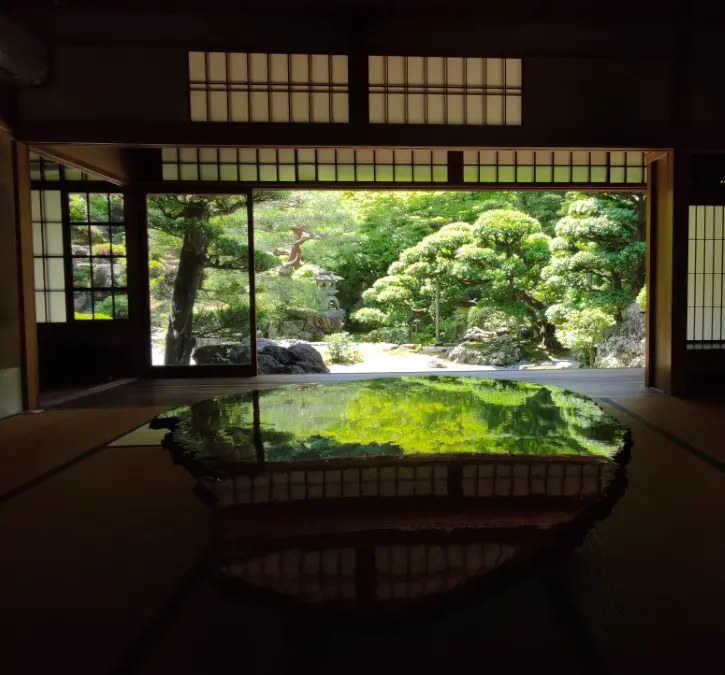
Kyutei Omuro (旧邸御室)
Kyutei Omuro, also known as the Omuro Residence, is a historic, traditional Japanese house. It is in the vicinity of the Ninnaji Temple in Kyoto. This house was built in 1937. And it is a Sukiya style architecture with magnificent decorations. Although this building has a short history, it is representative of Kyoto’s architecture and…
Looking for a customized tour?